Inbox and Environment News Issue 459
July 26 - August 1, 2020: Issue 459
Proposal To Allow Off Leash Dogs On Pittwater's Ocean Beaches Tabled For Next Council Meeting
Those who have expressed disappointment that council is unable to respond to requests to stop the rise of unleashed dogs in our area and the subsequent dog attacks, children being rushed at by these and the environmental, wildlife and birdlife destruction that follows may be interested in what is submitted by Crs McTaggart, Ferguson and White for the coming council Meeting of Tuesday July 28, 2020, wherein they have tabled a Motion to have off-leash areas at North Palm Beach and South Mona Vale Beach, to begin with.
See: ITEM 14.3 NOTICE OF MOTION NO 33/2020 - ACTIVATION OF BEACH SPACE FOR DOG EXERCISE - Submitted by: Councillor Alex McTaggart, Ian White, and Kylie Ferguson
Community Warned To Beware Of Suspect Tree Operators
Council is warning the community to be wary of unscrupulous tree lopping operators who are again active on the Northern Beaches, flouting the law and making residents liable for thousands of dollars of fines for their illegal work.
CEO Ray Brownlee said Council is aware of rogue tree tradesmen recently in the Avalon area, offering to cheaply remove or trim large trees without Council permission. This follows a spate of similar incidents early in 2019 and also in 2017.
“Our community is passionate about trees and at Council we are committed to protecting as much of our tree canopy as possible,” Mr Brownlee said.
“Most trees over 5m high are protected and residents need Council approval to prune more than 10 percent of the tree or remove it. This ensures we maintain the green environment that is so valued by our community.
“Without consent to prune or remove the trees, residents can attract thousands of dollars in fines.
“If in doubt, residents should contact Council to ensure they, or those they contract, are working within the law.”
Mr Brownlee said that a good tree operator will be knowledgeable about what is permitted, be appropriately insured and qualified to undertake the work.
“If an operator can’t demonstrate they meet these requirements residents should think twice about employing them to do the job in case they end up being liable for their illegal activities.”
Property owners who are approached by contractors should contact Council first, to check that the work complies with Council’s tree controls or visit our website.
Residents can also contact NSW Department of Fair Trading on 13 32 20.
Please Help Sydney Wildlife Rescue: Donate Your Cans And Bottles And Nominate SW As Recipient
You can Help Sydney Wildlife help Wildlife. Sydney Wildlife Rescue is now listed as a charity partner on the return and earn machines in these locations:
- Pittwater RSL Mona Vale
- Northern Beaches Indoor Sports Centre NBISC Warriewood
- Woolworths Balgowlah
- Belrose Super centre
- Coles Manly Vale
- Westfield Warringah Mall
- Strathfield Council Carpark
- Paddy's Markets Flemington Homebush West
- Woolworths Homebush West
- Bondi Campbell pde behind Beach Pavilion
- Westfield Bondi Junction car park level 2 eastern end Woolworths side under ramp
- UNSW Kensington
- Enviro Pak McEvoy street Alexandria.
Every bottle, can, or eligible container that is returned could be 10c donated to Sydney Wildlife.
Every item returned will make a difference by removing these items from landfill and raising funds for our 100% volunteer wildlife carers. All funds raised go to support wildlife.
It is easy to DONATE, just feed the items into the machine select DONATE and choose Sydney Wildlife Rescue. The SW initiative runs until August 23rd.
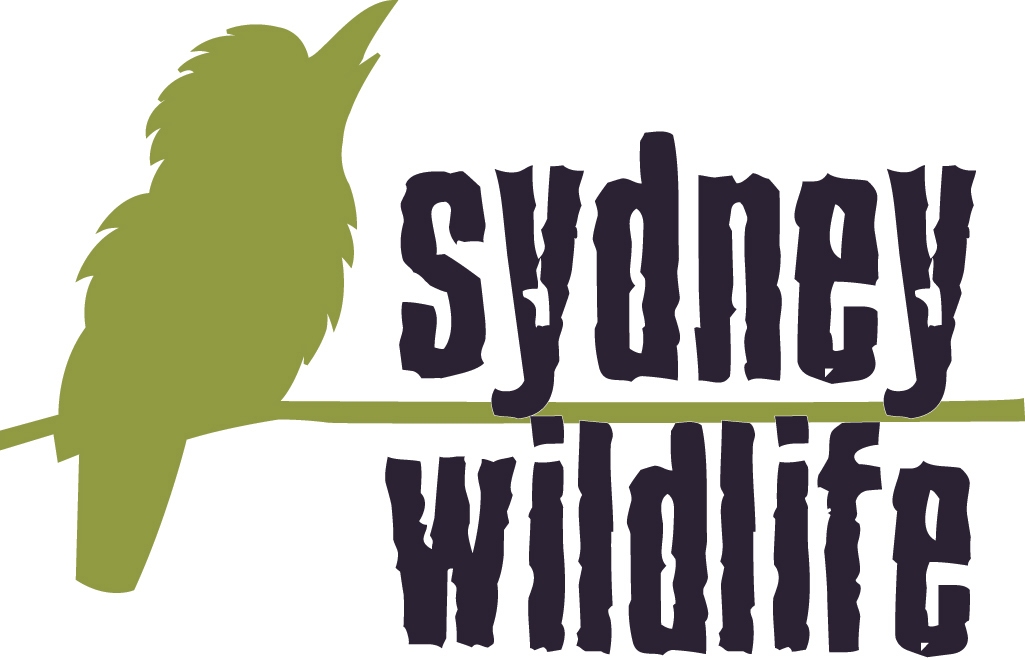
Tick Population Booming In Our Area
Residents from Terrey Hills and Belrose to Narrabeen and Palm Beach report a high number of ticks are still present in the landscape. Local Veterinarians are stating there has not been the usual break from ticks so far and each day they’re still getting cases, especially in treating family dogs.
To help protect yourself and your family, you should:
- Use a chemical repellent with DEET, permethrin or picaridin.
- Wear light-colored protective clothing.
- Tuck pant legs into socks.
- Avoid tick-infested areas.
- Check yourself, your children, and your pets daily for ticks and carefully remove any ticks using a freezing agent.
- If you have a reaction, contact your GP for advice.
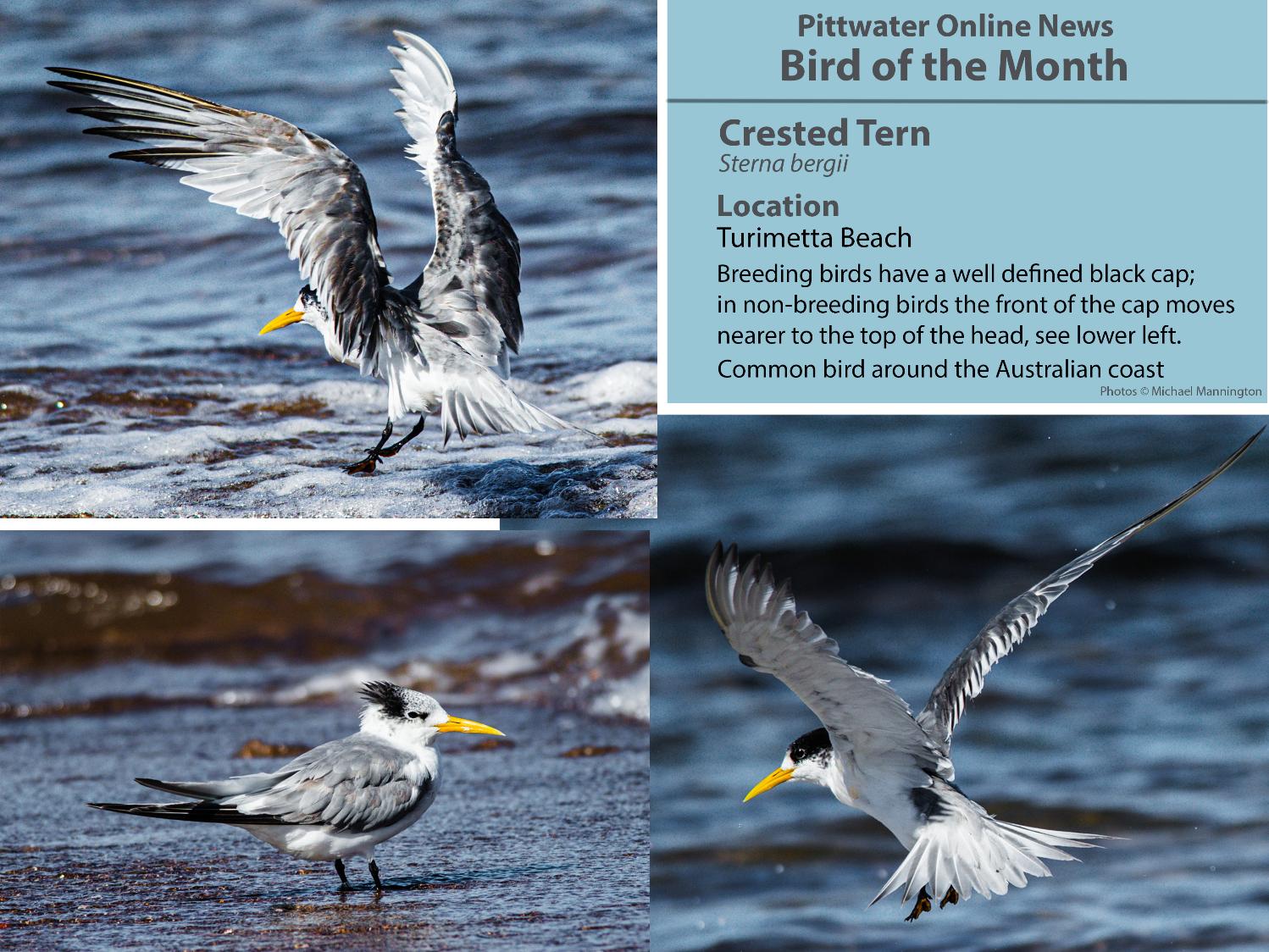
Ku-Ring-Gai Chase National Park Precinct The Basin Closures Update
Many COVID-19 restrictions have now been lifted from visitor precincts and facilities In Ku-ring-gai Chase National Park. However, several tracks and trails will remain closed while upgrades and remediation works are completed. These closures include:
- Bobbin Head playground
- Warrimoo walking track - public access may be restricted on Wednesday 17 and Thursday 18 June.
- The Basin trail
- The Basin campground and picnic area
- Mackerel service trail
- Salvation Loop and Wallaroo trails
Berowra track, between Apple Tree Bay and the intersection of Mount Ku-ring-gai track, has now reopened. However if you plan to visit, walk with caution as some sections of the track remain uneven.
Closed areas: The Basin campground, Basin trail and Mackerel service trail closed
The following areas will be closed from Monday 1 June until Monday 3 August 2020 while upgrade works and maintenance are underway:
- The Basin trail
- The Basin campground and picnic area
- Mackerel service trail
No public access is permitted. There will be no access to The Basin Aboriginal Engraving Site, Mackerel Beach to The Basin trail, West Head Road or The Basin campground.
For further information call 02 9451 3479 or 02 9472 8949.
EPA Orders Stop Work On Forestry Corporation Of NSW Operations In South Brooman State Forest
July 23, 2020
The NSW Environment Protection Authority has issued Forestry Corporation of NSW with a Stop Work Order to cease tree harvesting in part of South Brooman State Forest near Batemans Bay.
It is the second time in less than a week that a Stop Work Order has been issued to Forestry Corporation.
EPA Executive Director Regulatory Operations Carmen Dwyer said EPA investigations into operations in Compartment 58a of the forest had revealed serious alleged breaches of the rules that govern native forestry operations, in relation to the protection of trees that must be permanently retained.
“Officers allegedly found 26 hollow bearing trees that were either felled or damaged, with many of these trees also not identified and mapped in the planning phase.
“This area is known to be home to several threatened species that use hollow bearing trees. The Yellow-bellied Glider, the Glossy-Black Cockatoo and the Powerful, Masked and Sooty Owls are all listed as vulnerable species and may use hollow bearing trees for habitat,” Ms Dwyer said.
“The importance of identifying, mapping and protecting these vital trees is a key requirement and there should be proper processes in place to ensure compliance.”
After the recent Black Summer bushfires, the EPA imposed additional site-specific conditions on the existing strict environmental controls – called the Coastal Integrated Forestry Operations Approval (IFOA) – to mitigate the specific environmental risks caused by the bushfires at each site, including impacts on plants, animals and their habitats, soils and waterways.
The site-specific conditions include the requirement to identify, map and permanently retain all trees with hollows, whether alive or dead.
As a result of the seriousness of the alleged breaches, the EPA has issued a Stop Work Order under the Biodiversity Conservation Act to stop Forestry Corporation logging in the relevant compartment. The order ensures that no further tree harvesting takes place in the area where the trees were felled for 40 days, or until the EPA is confident that Forestry Corporation can meet its obligations to comply with the IFOA including the site-specific conditions.
It follows a Stop Work Order issued for Wild Cattle Creek State Forest near Coffs Harbour on Saturday for felling two protected giant trees.
“This is the first Stop Work Order the EPA has issued for breaches of the site-specific conditions put in place for burnt forests and is necessary because failure to properly map and retain hollow bearing trees could result in irreparable environmental harm,” Ms Dwyer said.
The investigation into the matter is ongoing and non-compliance with the Coastal IFOA can attract a maximum penalty as high as $5 million.
Stop Work Orders and penalty notices are examples of a number of tools the EPA can use to achieve environmental compliance including formal warnings, official cautions, licence conditions, notices and directions and prosecutions. A recipient can appeal and elect to have the matter determined by a court.
For more information about the EPA’s regulatory tools, see the EPA Compliance Policy at www.epa.nsw.gov.au/legislation/prosguid.htm
EPA Orders Stop Work On Forestry Corporation Of NSW Operations In Wild Cattle Creek State Forest
July 18, 2020
The NSW Environment Protection Authority has today issued Forestry Corporation of NSW with a Stop Work Order to cease tree harvesting at Wild Cattle Creek State Forest inland from Coffs Harbour.
EPA Executive Director Regulatory Operations Carmen Dwyer said EPA investigations into operations in Compartments 32, 33 and 34 of the forest had revealed serious alleged breaches of the rules that govern native forestry operations, set out in the Coastal Integrated Forestry Operations Approval (IFOA), in relation to the protection of trees that must not be felled.
“To maintain biodiversity in the forest, the Coastal IFOA rules require loggers to identify giant trees (over 140cm stump diameter) and ensure they are protected and not logged. The EPA alleges that during an inspection on 9 July 2020 EPA officers observed two giant trees which had been felled.
“Any trees except Blackbutt and Alpine Ash with a diameter of more than 140cm are defined as giant trees and must be retained under the Coastal IFOA,” Ms Dwyer said.
“As a result, the EPA has issued a Stop Work Order under the Biodiversity Conservation Act to stop Forestry Corporation logging in the forest. The order ensures that no further tree harvesting takes place in the area where the trees were felled for 40 days, or until the EPA is confident that Forestry Corporation can meet its obligations to comply with the Coastal IFOA conditions to protect giant trees.”
This is the first time the EPA has issued Forestry Corporation with a Stop Work Order under new laws which came into effect in 2018.
“These two old, giant trees have provided significant habitat and biodiversity value and are irreplaceable. Their removal points to serious failures in the planning and identification of trees that must be retained in the forest.
“These are serious allegations and strong action is required to prevent any further harm to giant or other protected trees which help maintain biodiversity and provide habitat for threatened species like koalas.”
This action follows the recent issue of two Penalty Notices totalling $2,200 to Forestry Corporation for non-compliances associated with an alleged failure to correctly identify protection zones for trees around streams and for felling four trees within those protected zones in Orara East State Forest near Coffs Harbour. The penalties were issued under previous rules when the penalties were lower.
“The EPA continues to closely monitor forestry operations despite the current COVID-19 restrictions, to ensure compliance with the regulations,” Ms Dwyer said.
“The community can be confident that any alleged non-compliance during forestry operations will be investigated by the EPA and action taken if the evidence confirms a breach.”
Stop Work Orders and penalty notices are examples of a number of tools the EPA can use to achieve environmental compliance including formal warnings, official cautions, licence conditions, notices and directions and prosecutions. A recipient can appeal and elect to have the matter determined by a court.
For more information about the EPA’s regulatory tools, see the EPA Compliance Policy at www.epa.nsw.gov.au/legislation/prosguid.htm
Professor Graeme Samuel AC Releases Interim Report For The Independent Review Of The Environment Protection And Biodiversity Conservation Act 1999
July 20, 2020
Media statement from Professor Graeme Samuel AC: Release of Interim Report for the Independent Review of the Environment Protection and Biodiversity Conservation Act 1999
Today the Interim Report of the Independent Review of the Environment Protection and Biodiversity Conservation Act 1999 (EPBC Act) has been released.
The Interim Report sets out preliminary views on the EPBC Act and how it operates. It focuses on the fundamental problems of the legislation and proposes reform directions that are needed to address these.
The Independent Reviewer, Professor Graeme Samuel AC, said “the Interim Report has been released part way through the Review as an opportunity to share and test thinking.
“The EPBC Act is ineffective. It does not enable the Commonwealth to protect and conserve environmental matters that are important for the nation. It is not fit to address current or future environmental challenges.
“The EPBC Act results in duplication with state and territory environment laws. The Commonwealth process for assessing and approving developments is slow, complex to navigate and costly for business. Slow and cumbersome regulation results in significant additional costs for business, with little appreciable benefit for the environment.”
Professor Samuel said “New, legally enforceable National Environmental Standards should be the centrepiece of reform—setting clear and concise rules that deliver outcomes for the environment and enable development to continue in a sustainable way.
“The development of National Environment Standards should be a priority reform measure. Interim Standards could be developed immediately, followed by an iterative development process as more sophisticated data becomes accessible. Standards should focus on detailed prescription of outcomes, not process.”
“National Environmental Standards will mean that the community and business can know what to expect. Standards support clear and consistent decisions, regardless of who makes them. Where states and territories can demonstrate their systems can deliver environmental outcomes consistent with the Standards, responsibilities should be devolved, providing faster and lower cost development assessments and approvals.”
“Community trust in the EPBC Act and its administration is low. To build confidence, the Interim Report proposes that an independent cop on the beat is required to deliver rigorous, transparent compliance and enforcement.”
Professor Samuel emphasised that “the EPBC Act had failed to fulfil its objectives as they relate to Indigenous Australians.
“Sustained engagement with Indigenous Australians is needed to properly co-design reforms that are important to them.
“Much more needs to be done to respectfully incorporate valuable Traditional Knowledge of Country in how the environment is managed.
“Indigenous Australians seek, and are entitled to expect, greater protection of their heritage,” Professor Samuel said.
“Extra effort is needed to invest in improving the condition of the environment. This means the EPBC Act needs a firmer focus on avoiding impacts where possible and increasing the area of nationally important habitats. This will allow future development to be sustainable.
Given contested views of how Australia can best achieve ecologically sustainable development, Professor Samuel said it is “unlikely that everyone will agree on all the issues identified in the Interim Report or support all the proposed reform directions.
“The Review encourages consideration of the overall reform direction proposed, rather than its component parts,” Professor Samuel said.
“The proposed reforms seek to build community trust that Australia’s national environmental laws are delivering effective environment and heritage protection, while regulating businesses efficiently.
“The proposed reforms enable the Commonwealth to show national leadership, while working more closely with the states and territories to deliver a joined-up approach to environmental management.
“Reform of the EPBC Act is well overdue and necessary to ensure current and future generations can enjoy Australia’s unique environment and iconic places.” Professor Samuel said.
Next steps in the Review
All Australians are invited to have a say about the reform directions in the Interim Report. To read the Interim Report and have your say visit the website epbcactreview.environment.gov.au.
Professor Samuel now intends to engage in targeted consultations with stakeholders. throughout July, August and September. These consultations will focus on progressing the key reform directions proposed in the Interim Report, including refining the National Environmental Standards.
Professor Samuel intends to convene collaborative discussions with environment, indigenous, agriculture and business groups, and leading academics. These discussions will involve stakeholders who had provided substantive contributions to the Review and have indicated a willingness to collaborate to shape a reform pathway. Consultation with state and territory governments will also be undertaken.
Professor Samuel’s Final Report, including recommendations to government, is due to be delivered to the Minister for the Environment by 31 October 2020.
Proposed key reform directions
- The Commonwealth should continue to focus on existing areas of responsibility with no expansion to regulate new environmental matters.
- New, legally enforceable National Environmental Standards should be established to deliver ecologically sustainable development. Focused on outcomes rather than process.
- Streamlining and greater efficiency through devolution in a way that provides community confidence, with National Environmental Standards as the foundation to set the outcomes needed regardless of who the decision maker is.
- Strong and transparent assurance to ensure devolved decisions deliver the intended outcomes.
- Australia’s Indigenous cultural heritage laws need to be reviewed and more work is needed to support better engagement with Indigenous Australians and to respectfully incorporate Traditional Knowledge of Country in how the environment is managed.
- Build trust in the system through increased transparency of information and decision-making to reduce the need to resort to court processes to discover information. Legal challenges should be limited to matters of outcome, not process.
- A quantum shift in the quality of information is needed, so that the right information is available at the right time for the community, proponents and decision-makers. This will deliver better decisions, and faster and lower cost assessments and approvals.
- A coherent framework to monitor and evaluate the effectiveness of the EPBC Act is needed, including revamped State of the Environment reporting.
- Restoration of the environment must be a focus. Available habitat needs to grow to be able to support both development and a healthy environment. Explore ways to accelerate environmental restoration such as markets and co-investing with the philanthropic and private sectors.
- An independent compliance and enforcement regulator that is not subject to actual or implied political direction. It should be properly resourced and have a full toolkit of powers.
Reform For Australia's Environment Laws
July 20, 2020
Minister for the Environment Sussan Ley will prioritise the development of new national environmental standards, further streamlining approval processes with State governments and national engagement on indigenous cultural heritage, following the release of an interim report into Australia’s environmental laws.
Professor Graeme Samuel’s interim report established that the existing Environment Protection and Biodiversity Conservation Act 1999 has become cumbersome and does not serve the interests of the environment or business.
“Not surprisingly, the statutory review is finding that 20-year-old legislation is struggling to meet the changing needs of the environment, agriculture, community planners and business,” Minister Ley said.
“This is our chance to ensure the right protection for our environment while also unlocking job-creating projects to strengthen our economy and improve the livelihoods of every-day Australians. We can do both as part of the Australian Government’s COVID recovery plan.
The Commonwealth will commit to the following priority areas on the basis of the interim report:
- Develop Commonwealth led national environmental standards which will underpin new bilateral agreements with State Governments.
- Commence discussions with willing states to enter agreements for single touch approvals (removing duplication by accrediting states to carry out environmental assessments and approvals on the Commonwealth’s behalf).
- Commence a national engagement process for modernising the protection of indigenous cultural heritage, commencing with a round table meeting of state indigenous and environment ministers. This will be jointly chaired by Minister Ley and the Minister for Indigenous Australians Ken Wyatt.
- Explore market based solutions for better habitat restoration that will significantly improve environmental outcomes while providing greater certainty for business. The Minister will establish an environmental markets expert advisory group.
In line with the interim report findings, the Commonwealth will maintain its existing framework for regulating greenhouse gas and other emissions, and would not propose any expansion of the EPBC Act in this area.
The Commonwealth will take steps to strengthen compliance functions and ensure that all bilateral agreements with States and Territories are subject to rigorous assurance monitoring.
It will not, however, support additional layers of bureaucracy such as the establishment of an independent regulator.
The report raises a range of other issues and reform directions. Further consultation will be undertaken regarding these.
“I thank Professor Samuel for his work and for his very clear message that we need to act,” Minister Ley said.
“As he works towards his final report, we will monitor its progress closely, while we continue to improve existing processes as much as possible.
“It is time to find a way past an adversarial approach and work together to create genuine reform that will protect our environment, while keeping our economy strong.”
Link to Interim Report: https://epbcactreview.environment.gov.au
Environment Minister Sussan Ley is in a tearing hurry to embrace nature law reform – and that's a worry
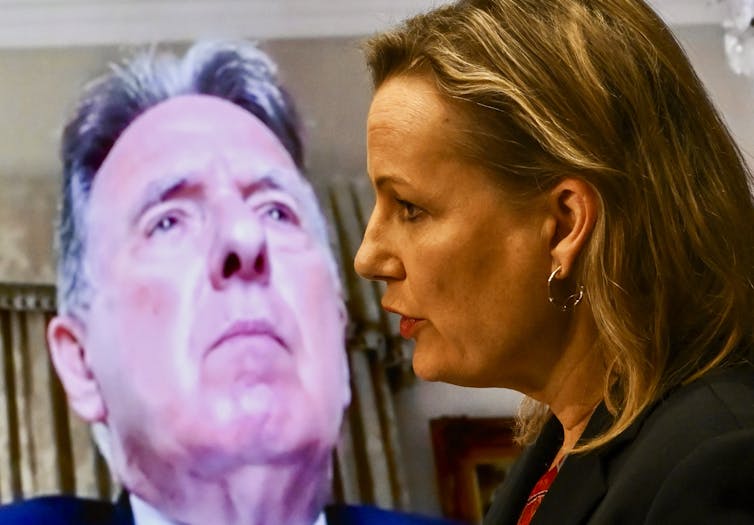
The Morrison government on Monday released a long-awaited interim review into Australia’s federal environment law. The ten-year review found Australia’s natural environment is declining and under increasing threat. The current environmental trajectory is “unsustainable” and the law “ineffective”.
The report, by businessman Graeme Samuel, called for fundamental reform of the law, know as the Environmental Protection and Biodiversity Conservation (EPBC) Act. The Act, Samuel says:
[…] does not enable the Commonwealth to play its role in protecting and conserving environmental matters that are important for the nation. It is not fit to address current or future environmental challenges.
Samuel confirmed the health of Australia’s environment is in dire straits, and proposes many good ways to address this.
Worryingly though, Environment Minister Sussan Ley immediately seized on proposed reforms that seem to suit her government’s agenda – notably, streamlining the environmental approvals process – and will start working towards them. This is before the review has been finalised, and before public comment on the draft has been received.
This rushed response is very concerning. I was a federal environment official for 13 years, and from 2007 to 2012 was responsible for administering and reforming the Act. I know the huge undertaking involved in reform of the scale Samuel suggests. The stakes are far too high to risk squandering this once-a-decade reform opportunity for quick wins.
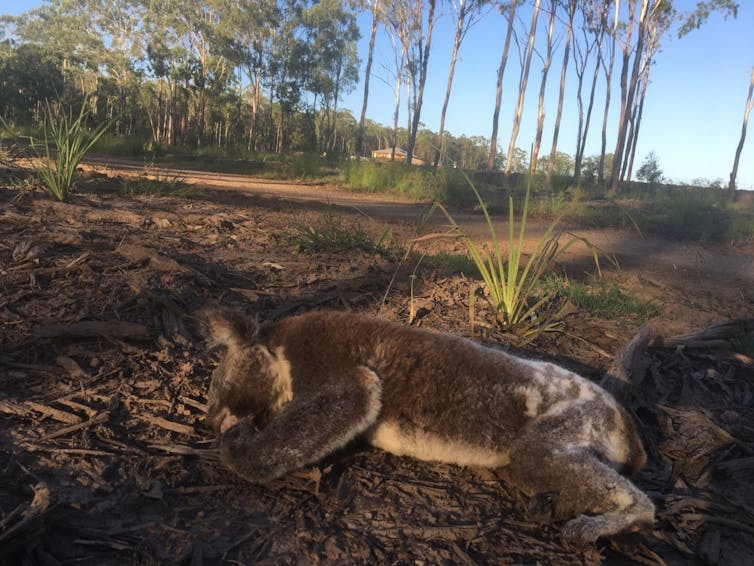
‘Fundamental Reform’ Needed: Samuel
The EPBC Act is designed to protect and conserve Australia’s most important environmental and heritage assets – most commonly, threatened plant and animal species.
Samuel’s diagnosis is on the money: the current trajectory of environmental decline is clearly unsustainable. And reform is long overdue – although unlike Samuel, I would put the blame less on the Act itself and more on government failings, such as a badly under-resourced federal environment department.
Samuel also hits the sweet spot in terms of a solution, at least in principle. National environmental standards, legally binding on the states and others, would switch the focus from the development approvals process to environmental outcomes. In essence, the Commonwealth would regulate the states for environmental results, rather than proponents for (mostly) process.
Read more: A major scorecard gives the health of Australia's environment less than 1 out of 10
Samuel’s recommendation for a quantum shift to a “single source of truth” for environmental data and information is also welcome. Effective administration of the Act requires good information, but this has proven hard to deliver. For example the much-needed National Plan for Environmental Information, established in 2010, was never properly resourced and later abolished.
Importantly, Samuel also called for a new standard for “best practice Indigenous engagement”, ensuring traditional knowledge and views are fully valued in decision-making. The lack of protection of Indigenous cultural assets has been under scrutiny of late following Rio Tinto’s destruction of the ancient Indigenous site Juukan caves. Reform in this area is long overdue.
And notably, Samuel says environmental restoration is required to enable future development to be sustainable. Habitat, he says “needs to grow to be able to support both development and a healthy environment”.
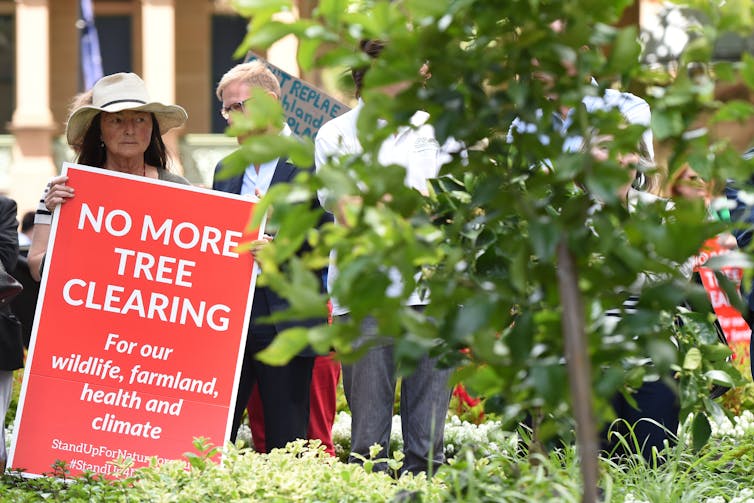
Streamlined Approvals
Samuel pointed to duplication between the EPBC Act and state and territory regulations. He said efforts have been made to streamline these laws but they “have not gone far enough”. The result, he says, is “slow and cumbersome regulation” resulting in significant costs for business, with little environmental benefit.
This finding would have been music to the ears of the Morrison government. From the outset, the government framed Samuel’s review around a narrative of cutting the “green tape” that it believed unnecessarily held up development.
In June the government announced fast-tracked approvals for 15 major infrastructure projects in response to the COVID-19 economic slowdown. And on Monday, Ley indicated the government will prioritise the new national environmental standards, including further streamlining approval processes.
Read more: Environment laws have failed to tackle the extinction emergency. Here's the proof
Here’s where the danger lies. The government wants to introduce legislation in August. Ley said “prototype” environmental standards proposed by Samuel will be introduced at the same time. This is well before Samuel’s final report, due in October.
I believe this timeframe is unwise, and wildly ambitious.
Even though Samuel proposes a two-stage process, with interim standards as the first step, these initial standards risk being too vague. And once they’re in place, states may resist moving to a stricter second stage.
To take one example, the prototype standards in Samuel’s report say approved development projects must not have unacceptable impacts on on matters of national environmental significance. He says more work is needed on the definition of “unacceptable”, adding this requires “granular and specific guidance”.
I believe this requires standards being tailored to different ecosystems across our wide and diverse landscapes, and being specific enough to usefully guide the assessment of any given project. This is an enormous task which cannot be rushed. And if Samuel’s prototype were adopted on an interim basis, states would be free, within some limits, to decide what is “unacceptable”.
It’s also worth noting that the national standards model will need significant financial resources. Samuel’s model would see the Commonwealth doing fewer individual project approvals and less on-ground compliance. However, it would enter a new and complex world of developing environmental standards.
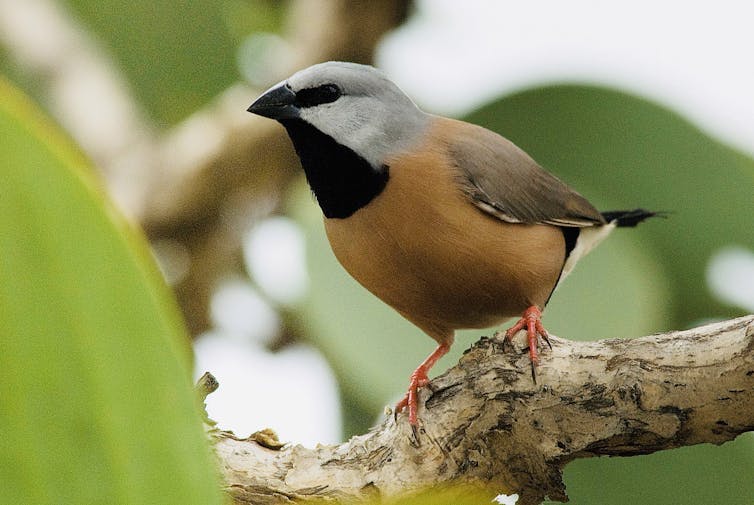
More Haste, Less Speed
Samuel’s interim report will go out for public comment before the final report is delivered in October. Ley concedes further consultation is needed on some issues. But in other areas, the government is not willing to wait. After years of substantive policy inaction it seems the government wants to set a new land-speed record for environmental reform.
The government’s fixation with cutting “green tape” should not unduly colour its reform direction. By rushing efforts to streamline approvals, the government risks creating a jumbled process with, once again, poor environmental outcomes.![]()
Peter Burnett, Honorary Associate Professor, ANU College of Law, Australian National University
This article is republished from The Conversation under a Creative Commons license. Read the original article.
National cabinet just agreed to big changes to environment law. Here's why the process shouldn't be rushed
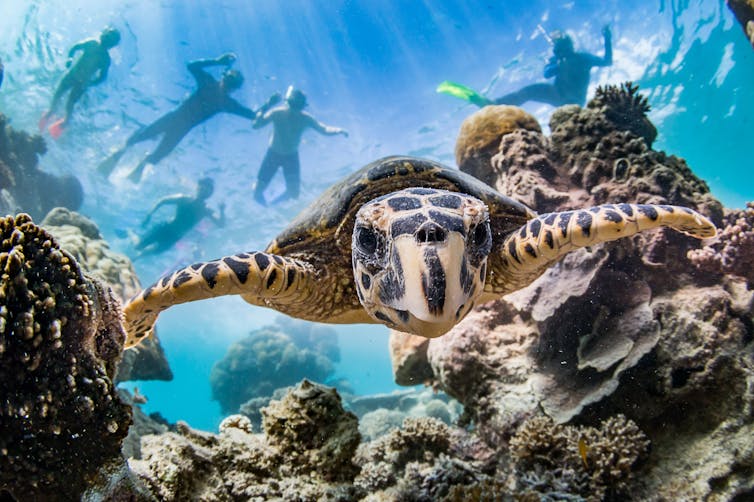
Federal and state governments on Friday resolved to streamline environment approvals and fast-track 15 major projects to help stimulate Australia’s pandemic-stricken economy.
The move follows the release this week of Professor Graeme Samuel’s preliminary review of the law, the 20-year-old Environment Protection and Biodiversity Conservation (EPBC) Act. Samuel described the law as “ineffective” and “inefficient” and called for wholesale reform.
At the centrepiece of Samuel’s recommendations are “national environmental standards” that are consistent and legally enforceable, and set clear rules for decision-making. Samuel provides a set of “prototype” standards as a starting point. He recommends replacing the prototypes with more refined standards over time.
By the end of August, the Morrison government wants Parliament to consider implementing the prototype standards.
But rushing in the new law is a huge concern, and further threatens the future of Australia’s irreplaceable natural and cultural heritage. Here, we explain why.
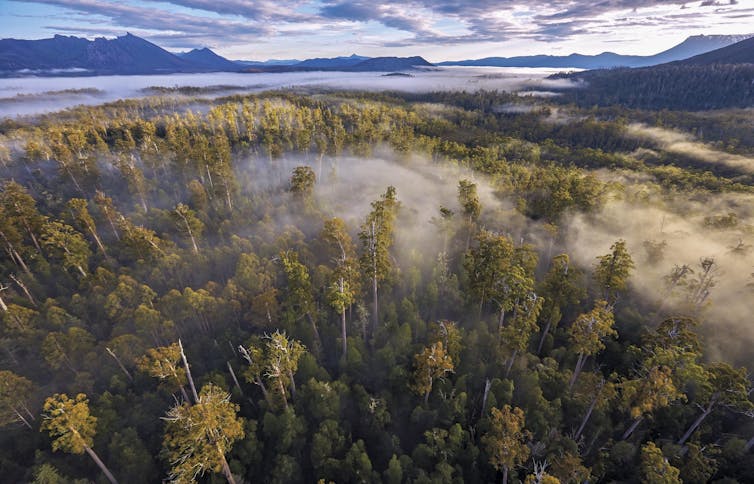
Semantics Matter
Samuel’s review said legally enforceable national standards would help ensure development is sustainable over the long term, and reduce the time it takes to have development proposals assessed.
We’ve identified a number of problems with his prototype standards.
First, they introduce new terms that will require interpretation by decision-makers, which could lead the government into the courts. This occurred in Queensland’s Nathan dam case when conservation groups successfully argued the term environmental “impacts” should extend to “indirect effects” of development.
Second, there’s a difference in wording between the prototype standards and the EPBC Act itself, which might lead to uncertainty and delay. Samuel suggested a “no net loss” national standard for vulnerable and endangered species habitat, and “net gain” for critically endangered species habitat. But this departs from current federal policy, under which environmental offsets must “improve or maintain” the environmental outcome compared to “what is likely to have occurred under the status quo”.
Third, the outcomes proposed under the prototype standards might themselves cause confusion. The standards say, overall, the environment should be “protected”, but rare wetlands protected under the Ramsar Convention should be “maintained”. The status of threatened species should “improve over time” and Commonwealth marine waters should be “maintained or enhanced”, but the Great Barrier Reef Marine Park needs to be “sustained for current and future generations”.
And fourth, the standards don’t rule out development in habitat critical to threatened species, but require that “no detrimental change” occurs. But in reality, can there be development in critical habitat without detrimental change?
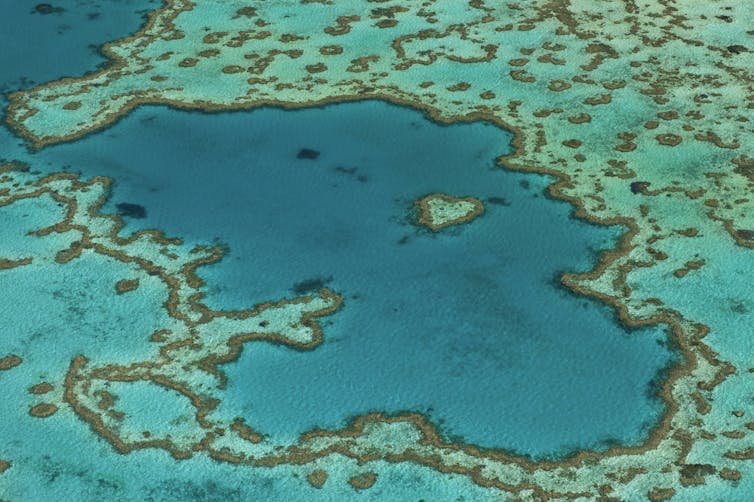
Mind The Gap
The escape clause in the prototype standards presents another problem. A small, yet critical recommendation in the appendix of Samuel’s report says:
These amendments should include a requirement that the Standards be applied unless the decision-maker can demonstrate that the public interest and the national interest is best served otherwise.
Which decision maker is he referring to here – federal or state? If it’s the former, will there be a constant stream of requests to the federal environment minister for a “public interest” exemption on the basis of jobs and economic development? If the latter, can a state decision-maker judge the “national interest”, especially for species found in several states, such as the koala?
Samuel says the “legally enforceable” nature of national standards are the foundation of effective regulation. But both he and Auditor-General Grant Hehir in his recent report found existing enforcement provisions are rarely applied, and penalties are low.
Federal Environment Minister Sussan Ley has already ruled out Samuel’s recommendation that an independent regulator take responsibility for enforcement. But the record to date does not give confidence that government officials will enforce the standards.
Temporary Forever?
Both Ley and Samuel suggested the interim standards would be temporary and updated later. But history shows “draft” and “interim” policies have a tendency to become long-term, or permanent.
For example, federal authorities often allow a proponent to cause environmental damage, and compensate by improving the environment elsewhere - a process known as “offsetting”. A so-called “draft” offset policy drawn up in 2007 actually remained in place for five years until 2012, when it was finally replaced. And the federal environment department recently accepted offsets based on the 2007 “draft” rather than the current policy.
The best antidote is to ensure the first tranche of national standards is comprehensive, precise and strong. This can only occur if genuine consultation occurs, legislation is not rushed, and the government commits to improving the “antiquated” data and information systems the standards rely on.
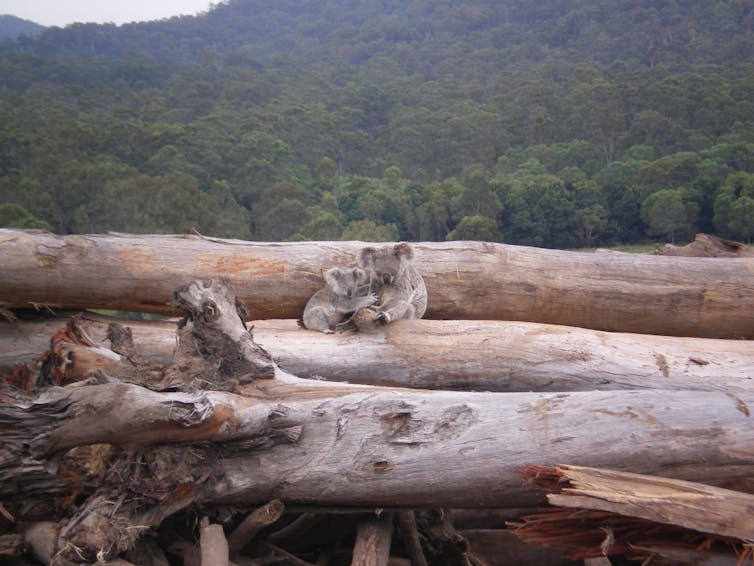
Negotiation To The Lowest Bar
According to the Samuel report, the proposed standards “provide a clear pathway for greater devolution in decision-making” that will enable states and territories to conduct federal environmental assessments and approvals. This proposed change has been strongly and consistently criticised by scientists and environmental lawyers.
Ley also appears to be wildly underestimating the time and effort required to negotiate the standards with the states and territories.
Take the Gillard government’s attempts to overcome duplication between state and federal law by establishing a “one-stop-shop” approvals process. Prime Minister Julia Gillard pulled the plug on negotiations after a year, declaring the myriad agreements being sought by various states was the “regulatory equivalent of a Dalmatian dog”.
The Abbott government’s negotiations for a similar policy lasted twice as long but suffered a similar fate, lapsing with the dissolution of Parliament in 2016.
Samuel warned refining the standards should not involve “negotiated agreement with rules set at the lowest bar”. But vested interests will inevitably seek to influence the process.
Proceed With Caution
We have identified significant problems with the prototype standards, and more may emerge.
Ley’s rush to amend the Act appears motivated more by wanting to cut so-called “green tape” than by evidence or environmental outcomes.
Prototypes are meant to be stress-tested. But if the defects are not corrected before hurrying into negotiations and legislative change, Australia might go another 20 years without effective environment laws.
Update: This article has been amended to reflect the national cabinet decision.
Read more: Environment laws have failed to tackle the extinction emergency. Here's the proof ![]()
Megan C Evans, Lecturer and ARC DECRA Fellow, UNSW and Peter Burnett, Honorary Associate Professor, ANU College of Law, Australian National University
This article is republished from The Conversation under a Creative Commons license. Read the original article.
New research reveals how Australia and other nations play politics with World Heritage sites
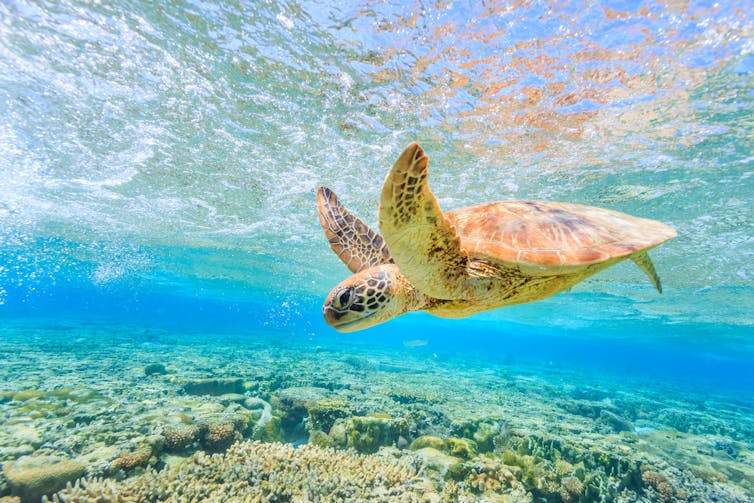
Some places are considered so special they’re valuable to all humanity and must be preserved for future generations. These irreplaceable gems – such as Machu Picchu, Stonehenge, Yosemite National Park and the Great Barrier Reef – are known as World Heritage sites.
When these places are threatened, they can officially be placed on the “List of World Heritage in Danger”. This action brings global attention to the natural or human causes of the threats. It can encourage emergency conservation action and mobilise international assistance.
However, our research released today shows the process of In Danger listings is being manipulated for political gain. National governments and other groups try to keep sites off the list, with strategies such as lobbying, or partial efforts to protect a site. Australian government actions to keep the Great Barrier Reef off the list are a prime example.
These practices are a problem for many reasons – not least because they enable further damage to threatened ecosystems.
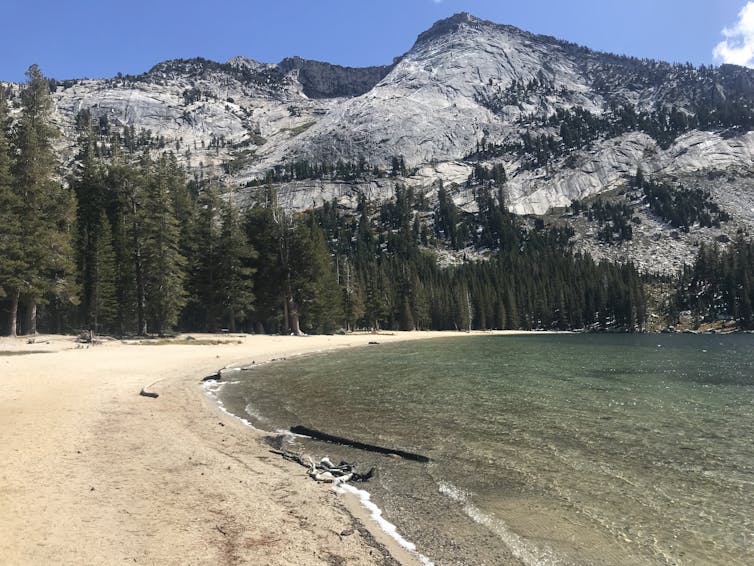
What Is The In Danger List?
World Heritage sites represent outstanding socioeconomic, natural and cultural values. Nations vie to have their sites included on the World Heritage list, which can attract tourist dollars and international prestige. In return, the nations are responsible for protecting the sites.
World Heritage sites are protected by an international convention, overseen by the United Nations body UNESCO and its World Heritage Committee. The committee consists of representatives from 21 of the 193 nations signed up to the convention.
Read more: We just spent two weeks surveying the Great Barrier Reef. What we saw was an utter tragedy
When a site comes under threat, the World Heritage Committee can list the site as in danger of losing its heritage status. In 2014 for example, the committee threatened to list the Great Barrier Reef as In Danger – in part due to a plan to dump dredged sediment from a port development near the reef, as well as poor water quality, climate change and other threats. This listing did not eventuate.
An In Danger listing can attract help to protect a site. For example, the Galápagos Islands were placed on the list in 2007. The World Heritage Fund provided the Ecuadorian government with technical and financial assistance to restore the site’s World Heritage status. The work is not yet complete, but the islands were removed from the In Danger list in 2010.
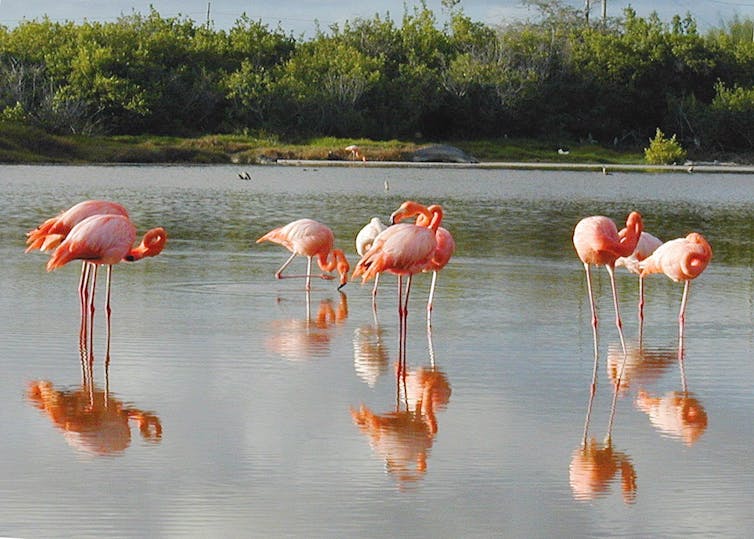
Political Games
Our study shows political manipulation appears to be compromising the process that determines if a site is listed as In Danger.
We examined interactions between UNESCO and 102 national governments, from 1972 until 2019. We interviewed experts from the World Heritage Committee, government agencies and elsewhere, and combined this with global site threat data, UNESCO and government records, and economic and governance data.
We found at least 41 World Heritage sites, including the Great Barrier Reef, were at least once considered by the World Heritage Committee for the In Danger list, but weren’t put on it. This is despite these sites being reported by UNESCO as threatened, or more threatened, than those already on the In Danger list. And 27 of the 41 sites were considered for an In Danger listing more than once.
The number of sites on the In Danger list declined by 31.6% between 2001 and 2008, and has plateaued since. By 2019, only 16 of 238 ecosystems were certified as In Danger. In contrast, the number of ecosystems on the World Heritage list has increased steadily over the past 20 years.
Read more: Explainer: what is the List of World Heritage in Danger?
So why is this happening? Our analysis showed the threat of an In Danger listing drives a range of government responses.
This includes governments complying only partially with World Heritage Committee recommendations or making only symbolic commitments. Such “rhetorical” adoption of recommendations has been seen in relation to the Three Parallel Rivers in China’s Yunnan province, the Western Caucasus in Russia and Australia’s Great Barrier Reef (explored in more detail below).
In other cases, threats to a site are high but attract limited attention and effort from either the national government or UNESCO. These sites include Halong Bay in Vietnam and the remote Tubbataha Reefs in the Philippines.
A 2004 amendment to the way the World Heritage Committee assesses In Danger listings means sites can be “considered” for inclusion rather than just listed, retained or removed. This has allowed governments to use delay tactics, such as in the case of Cameroon’s Dja Faunal Reserve. It has been considered for the In Danger list five times since 2011, but never listed.

Case In Point: The Great Barrier Reef
In 2014 and 2015, the Australian government spent more than A$400,000 on overseas lobbying trips to keep the Great Barrier Reef off the In Danger list. The environment minister and senior bureaucrats travelled to most of the 21 countries on the committee, plus other nations, to argue against the listing. The mining industry also contributed to the lobbying effort.
The World Heritage Committee had asked Australia to develop a long-term plan to protect the reef. The Australian and Queensland governments appeared to comply, by releasing the Reef 2050 Plan in 2015.
But in 2018, a national audit and Senate inquiry found a substantial portion of finance for the plan was delivered – in a non-competitive and hidden process – to the private Great Barrier Reef Foundation, which had limited capacity and expertise. This casts doubt over whether the aims of the reef plan can be achieved.
Real World Damage
Our study makes no recommendation on which World Heritage sites should be listed as In Danger. But it uncovered political manipulation that has real-world consequences. Had the Great Barrier Reef been listed as In Danger, for example, developments potentially harmful to the reef, such as the Adani coal mine, may have struggled to get approval.
Last year, an outlook report gave the reef a “very poor” prognosis and last summer the reef suffered its third mass bleaching in five years. There are grave concerns for the ecosystem’s ability to recover before yet another bleaching event.
Political manipulation of the World Heritage process undermines the usefulness of the In Danger list as a policy tool. Given the global investment in World Heritage over the past 50 years, it is essential to address the hidden threats to good governance and to safeguard all ecosystems.
Read more: Australia reprieved – now it must prove it can care for the Reef ![]()
Tiffany Morrison, Professorial Research Fellow, ARC Centre of Excellence for Coral Reef Studies, James Cook University; Katrina Brown, Professor of Social Sciences, University of Exeter; Maria Lemos, Professor of Environmental Justice, Environmental Policy and Planning, Climate + Energy,, University of Michigan, and Neil Adger, Professor of Human Geography, University of Exeter
This article is republished from The Conversation under a Creative Commons license. Read the original article.
M1 Rubble Reused On Central Coast Fire Trails
July 20 2020
More than 30,000 tonnes of rubble that was once part of the M1 Pacific Motorway has been used to rebuild fire trails across the Central Coast – and there are plans to roll out the initiative statewide.
Minister for Regional Transport and Roads Paul Toole said Transport for NSW had partnered with Central Coast Council to donate excess rubble and rocks from the upgrade to help reinforce council’s fire trail network, saving money and time for both parties.
“This truly was a win-win situation because Transport for NSW saved on transportation and processing costs, while Central Coast Council tripled its fire trail reinforcement program at no extra cost,” Mr Toole said.
“Hundreds of local homes are still standing because fire fighters were able to hold back the inferno that swept through the area on New Year’s Eve while standing on a reinforced trail.
“The huge success of this project means the initiative could be used right across the state, so that we can forge ahead with vital infrastructure projects while doing our bit for the environment and local communities.”
Parliamentary Secretary for the Central Coast and Member for Terrigal Adam Crouch praised Transport for NSW and Central Coast Council for their role in helping local Rural Fire Service brigades save homes during the bushfires.
“In the past three years, Central Coast Council has been using excess material provided at no cost by Transport for NSW for fire trail construction on existing road reserves,” Mr Crouch said.
“Rural Fire Service volunteers were truly heroic in their successful efforts to save homes and lives here on Arizona Road in Charmhaven, but the reinforcement of this trail in the months beforehand played a key role in that outcome.”
Rural Fire Service Superintendent Viki Campbell said the strength of the upgraded trails gave local brigades a firm foundation for holding back the fire that swept through on New Year’s Eve.
“Fire trails play a very important role in accessing fires and bringing them under control,” Superintendent Campbell said.
“Last fire season, the local network of trails assisted firefighters in protecting hundreds of homes in the area.”
Central Coast Council Environmental Unit Manager Luke Sulkowski said the program increased capacity to maintain the local fire trail network.
“This saving on material supply has meant Central Coast Council has completed about three times the quantity of improvements we would have normally achieved within our budget,” Mr Sulkowski said.
“Rough estimates on cost savings over three years would be $930,000 for material and about $500,000 for rock reuse.”
For more information on the M1 Pacific Motorway Upgrades, go to M1 Pacific Motorway.
Fish Reef Domes A Boon For Environment And Recreational Fishing In New South Wales Estuaries
An amazing site to see - a very large school of yellowtail kingfish spiral around the towers of the Sydney offshore recreational fishing reef in March 2014.
Video by NSW DPI Fisheries
In a boost for both recreational fishing and the environment, new UNSW research shows that artificial reefs can increase fish abundance in estuaries with little natural reef.
Researchers installed six humanmade reefs per estuary studied and found overall fish abundance increased up to 20 times in each reef across a two-year period.
The study, published in the Journal of Applied Ecology recently, was funded by the NSW Recreational Fishing Trust.
The research was a collaboration between UNSW Sydney, NSW Department of Primary Industries (DPI) Fisheries and the Sydney Institute of Marine Science (SIMS).
Professor Iain Suthers, of UNSW and SIMS, led the research, while UNSW alumnus Dr Heath Folpp, of NSW DPI Fisheries, was lead author.
Co-author Dr Hayden Schilling, SIMS researcher and Conjoint Associate Lecturer at UNSW, said the study was part of a larger investigation into the use of artificial reefs for recreational fisheries improvement in estuaries along Australia's southeast coast.
"Lake Macquarie, Botany Bay and St Georges Basin were chosen to install the artificial reefs because they had commercial fishing removed in 2002 and are designated specifically as recreational fishing havens," Dr Schilling said.
"Also, these estuaries don't have much natural reef because they are created from sand. So, we wanted to find out what would happen to fish abundance if we installed new reef habitat on bare sand.
"Previous research has been inconclusive about whether artificial reefs increased the amount of fish in an area, or if they simply attracted fish from other areas nearby."
Fish reef domes boost abundance
In each estuary, the scientists installed 180 "Mini-Bay Reef Balls" -- commercially made concrete domes with holes -- divided into six artificial reefs with 30 units each.
Each unit measures 0.7m in diameter and is 0.5m tall, and rests on top of bare sand.
Professor Suthers said artificial reefs were becoming more common around the world and many were tailored to specific locations.
Since the study was completed, many more larger units -- up to 1.5m in diameter -- have been installed in NSW estuaries.
"Fish find the reef balls attractive compared to the bare sand: the holes provide protection for fish and help with water flowing around the reefs," Prof Suthers said.
"We monitored fish populations for about three months before installing the reefs and then we monitored each reef one year and then two years afterwards.
"We also monitored three representative natural reef control sites in each estuary."
Prof. Suthers said the researchers observed a wide variety of fish using the artificial reefs.
"But the ones we were specifically monitoring for were the species popular with recreational fishermen: snapper, bream and tarwhine," he said.
"These species increased up to five times and, compared to the bare sand habitat before the reefs were installed, we found up to 20 times more fish overall in those locations.
"What was really exciting was to see that on the nearby natural reefs, fish abundance went up two to five times overall."
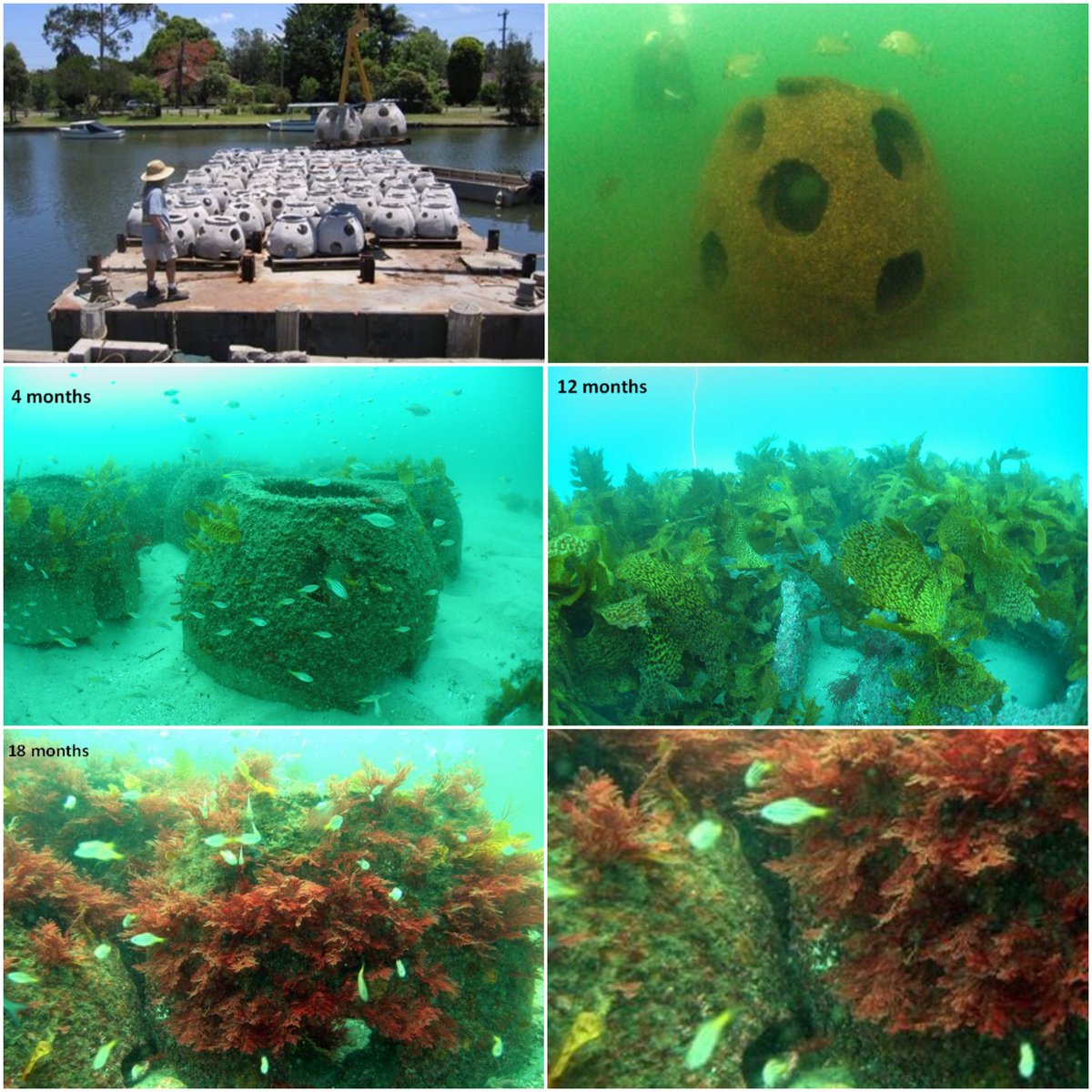
Photo: UNSW Science
Dr Schilling said that importantly, their study found no evidence that fish had been attracted from neighbouring natural reefs to the artificial reefs.
"There was no evidence of declines in abundance at nearby natural reefs. To the contrary, we found abundance increased in the natural reefs and at the reef balls, suggesting that fish numbers were actually increasing in the estuary overall," he said.
"The artificial reefs create ideal rocky habitat for juveniles -- so, the fish reproduce in the ocean and then the juveniles come into the estuaries, where there is now more habitat than there used to be, enabling more fish to survive."
The researchers acknowledged, however, that while the artificial reefs had an overall positive influence on fish abundance in estuaries with limited natural reef, there might also be species-specific effects.
For example, they cited research on yellowfin bream which showed the species favoured artificial reefs while also foraging in nearby seagrass beds in Lake Macquarie, one of the estuaries in the current study.
NSW DPI Fisheries conducted an impact assessment prior to installation to account for potential issues with using artificial reefs, including the possibility of attracting non-native species or removing soft substrate.
Artificial reef project validated
Dr Schilling said their findings provided strong evidence that purpose-built artificial reefs could be used in conjunction with the restoration or protection of existing natural habitat to increase fish abundance, for the benefit of recreational fishing and estuarine restoration of urbanised estuaries.
"Our results validate NSW Fisheries' artificial reef program to enhance recreational fishing, which includes artificial reefs in estuarine and offshore locations," he said.
"The artificial reefs in our study became permanent and NSW Fisheries rolled out many more in the years since we completed the study.
"About 90 per cent of the artificial reefs are still sitting there and we now have an Honours student researching the reefs' 10-year impact." Dr Schilling said the artificial reefs were installed between 2005 and 2007, but the research was only peer-reviewed recently.
Heath R. Folpp, Hayden T. Schilling, Graeme F. Clark, Michael B. Lowry, Ben Maslen, Marcus Gregson, Iain M. Suthers. Artificial reefs increase fish abundance in habitat‐limited estuaries. Journal of Applied Ecology, 2020; DOI: 10.1111/1365-2664.13666
In a world first, Australian university builds own solar farm to offset 100% of its electricity use
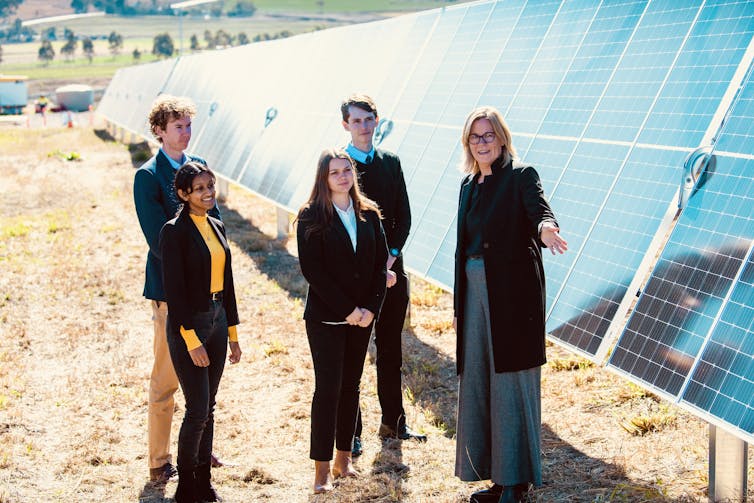
Limiting global warming to well below 2℃ this century requires carbon emissions to reach net zero by around 2050. Australian households have done much to support the transition via rooftop solar investments. Now it’s time for organisations to take a more serious role.
The University of Queensland’s efforts to reduce its electricity emissions provides one blueprint. Last week UQ opened a 64 megawatt solar farm at Warwick in the state’s southeast. It’s the first major university in the world to offset 100% of its electricity use with renewable power produced from its own assets. In fact, UQ will generate more renewable electricity than it uses.
The Warwick Solar farm shows businesses and other organisations that the renewables transition is doable, and makes economic sense.
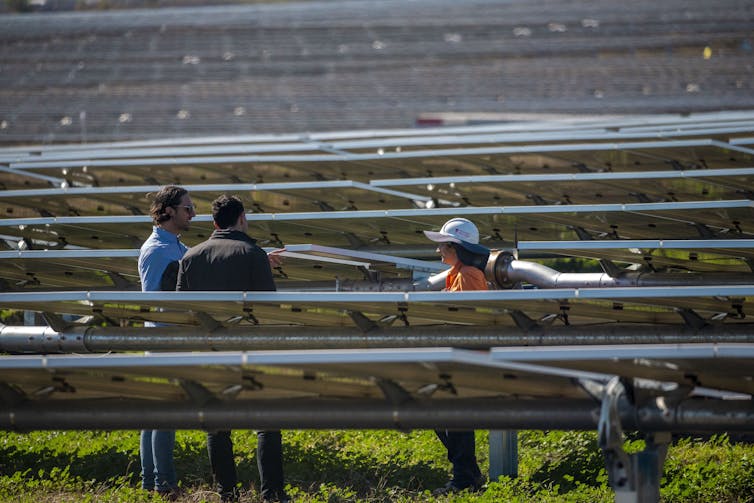
A Model For The Future
UQ’s electricity decarbonisation journey started a decade ago when it installed a 1.2MW rooftop solar array across buildings at the St Lucia campus. At the time, it was the largest rooftop solar array in Australia.
In 2015 UQ launched the 3.3MW solar farm at Gatton – part of a world-class solar research facility open to researchers from around the world.
Building on this, last week UQ opened the Warwick solar farm, primarily funded through a A$125 million loan from the Queensland Government. The output – about 160 gigawatt-hours a year – is equal to powering about 27,000 homes or reducing coal consumption by more than 60,000 tonnes. This generation will more than offset the total amount of energy UQ’s sites use each year.
Read more: Really Australia, it's not that hard: 10 reasons why renewable energy is the future
Money that would previously have been spent paying the university’s electricity bills will instead now pay off this loan, over about a decade. This shows how an organisation can redirect operating expenditure to invest in emissions reduction.
Three months ago, UQ also installed a 1.1MW Tesla battery at its St Lucia campus. As Queensland’s largest on-site battery, it saved UQ almost A$75,000 in electricity costs during the first three months of operation. It did this by buying power when it was cheap and selling it during peak demand periods, as well as helping support the grid during faults.
These projects provide a “living laboratory” for teaching and research. They also give crucial insights into how organisations can invest in renewable generation and energy storage assets today, to increase their commercial viability.
UQ has made data generated by its solar and battery assets publicly available so other organisations can learn from its efforts.
Why Organisations Must Act
About 2,000 companies are jointly responsible for more than half the world’s emissions. In many cases, investors are now calling on companies to demonstrate how their activities are compatible with a net-zero emissions target.
Organisations generate greenhouse gas emissions in different ways. “Scope 1” emissions come from assets owned or controlled by the organisation, such as company-owned vehicles or power plants. “Scope 2” emissions come from electricity consumed, and “Scope 3” involves a wide range of indirect emissions such as staff commuting or waste disposal.
Read more: A pretty good start but room for improvement: 3 experts rate Australia's emissions technology plan
Companies can also contribute to emissions produced overseas, but these are generally not captured by standard national emissions accounts.
A 2015 study was the first to translate global climate targets to a company level. Since then, more than 900 companies have committed to climate action through the Science Based Targets initiative.
Typically, companies are not yet evaluated in terms of their performance against climate goals. However, attention from investors on climate risk and impact is increasing. It’s only a matter of time before lagging companies will face greater scrutiny from investors, governments and the broader public. All the more reason to start acting today.

Over To You
An organisation must take a holistic view of all its activities, to fully understand the emissions it creates. From this they can develop a sustainability “action plan” which includes setting science-based targets . UQ is currently finalising a ten-year Sustainability Strategy based on the UN’s Sustainable Development Goals.
Other ways organisations can reduce emissions include:
entering into power purchase agreements with renewable energy generators – basically a contract for the sale and supply of renewable energy
investing in energy efficient equipment such as LED lighting and modern air conditioners
transitioning to a low-emission vehicle fleet and supporting sustainable transport alternatives such as electric scooters, bikes, cars and buses
minimising waste and recycling more
The time for talk is over. Organisations must now actively play their part in achieving global net-zero emissions. The University of Queensland shows how it can be done.
Read more: Climate explained: could the world stop using fossil fuels today? ![]()
Jake Whitehead, Advance Queensland Industry Research Fellow & Tritum E-Mobility Fellow, The University of Queensland; Andrew Wilson, Project Director - Warwick Solar Farm, The University of Queensland; Peta Ashworth, Professor and Chair in Sustrainable Energy Futures, The University of Queensland; Saphira Rekker, Lecturer Finance, The University of Queensland, and Tapan K Saha, Professor, Leader-UQ Solar, The University of Queensland
This article is republished from The Conversation under a Creative Commons license. Read the original article.
Australia has an ugly legacy of denying water rights to Aboriginal people. Not much has changed
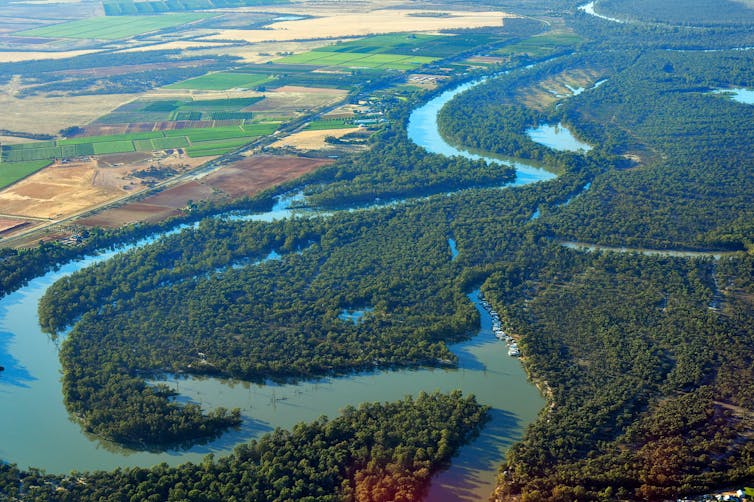
Water management in the Murray-Darling Basin has radically changed over the past 30 years. But none of the changes have addressed a glaring injustice: Aboriginal people’s share of water rights is minute, and in New South Wales it is diminishing.
In the 1990s, governments tried to restore the health of rivers in the basin by limiting how much water could be extracted. They also separated land and water titles to enable farmers to trade water.
Read more: Aboriginal voices are missing from the Murray-Darling Basin crisis
This allowed the recovery of water for the environment and led to the world’s biggest water market, now worth billions of dollars. For a range of reasons, Aboriginal people have largely been shut out of this valuable water market.
Our research, the first of its kind, shows Aboriginal water entitlements in the Murray-Darling Basin are declining, and further losses are likely under current policies. This water injustice is an ongoing legacy of colonisation.
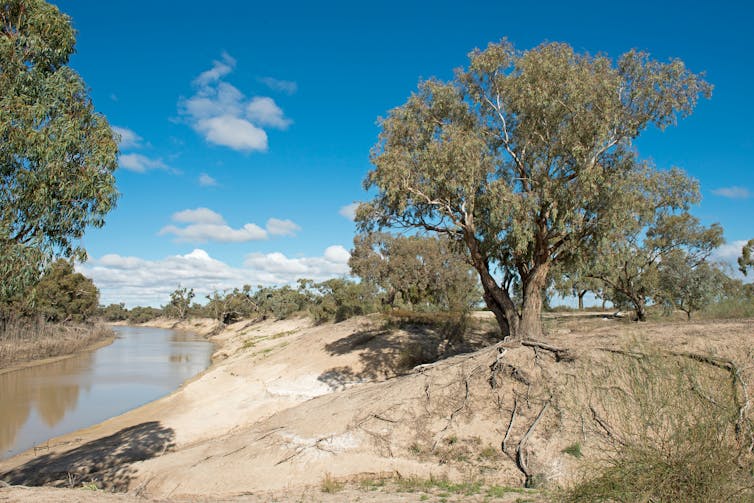
An Unjust Distribution Of Water
A water use right, also called a licence or entitlement, grants its holder a share of available water in a particular waterway. Governments allocate water against these entitlements periodically, depending on rainfall and water storage. Entitlement holders choose how to use this water. Typically, they extract it for purposes such as irrigation, or sell it on the temporary market.
We mapped Aboriginal water access and rights in NSW over more than 200 years, including the current scale of Aboriginal-held water entitlements.
Read more: Water in northern Australia: a history of Aboriginal exclusion
Across ten catchments in the NSW portion of the Murray-Darling Basin, Aboriginal people collectively hold just 12.1 gigalitres of water. This is a mere 0.2% of all available surface water (as of October 2018).
By comparison, Aboriginal people make up 9.3% of this area’s population.
The value of water held by Aboriginal organisations was A$16.5 million in 2015-16 terms, equating to just 0.1% of the value of the Murray-Darling Basin’s water market.
We wanted to understand how these limited water rights affect Aboriginal people today, and the challenges, if any, they face in holding onto these entitlements. This required examining Australia’s water history and its systems of water rights distribution.
Read more: No water, no leadership: new Murray Darling Basin report reveals states' climate gamble
What we found were key moments when governments denied Aboriginal people water rights and, by extension, the benefits that now flow from water access. This includes the ability to use water for an agricultural enterprise, or to temporarily trade water as many other entitlement holders do. We describe these moments as waves of dispossession.
The First Wave Of Dispossession
Under colonial water law, rights to use water, for example for farming, were granted to whoever owned the land where rivers flowed. This link between water use and land-holding remained in place until the end of the 20th century.
As a result, Aboriginal people, whose traditional ownership of land (native title) was only recognised by the Australian High Court in 1992, were largely denied legal rights to water.
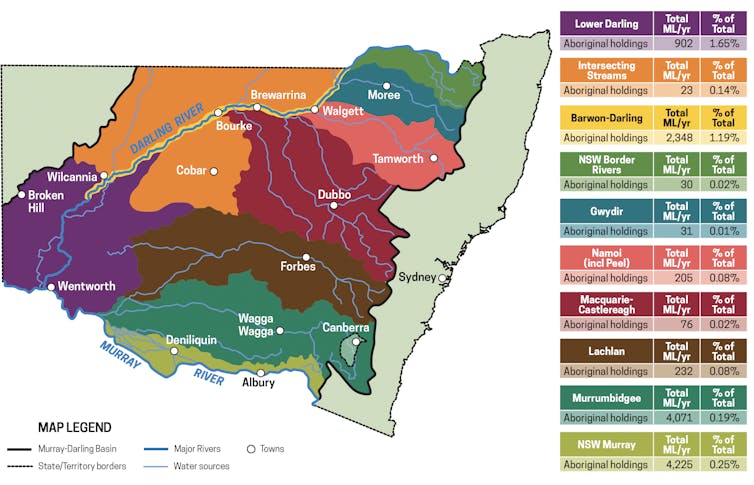
The Second Wave
During the last quarter of the 20th century, governments introduced land restitution measures, such as the NSW Aboriginal Land Rights Act (1983), to redress or compensate Indigenous peoples for colonial acts of dispossession.
We found water entitlements were attached to some of the land parcels that were transferred to Aboriginal ownership under these processes – but this was the exception.
Read more: 5 ways the government can clean up the Murray-Darling Basin Plan
Land restitution processes intentionally restricted what land Aboriginal people could claim. They were biased against properties with agricultural potential and, therefore, very few of the properties that were returned to Aboriginal ownership came with water entitlements.
At this crucial juncture in land rights reform, federal and state governments entrenched the inequity of water rights distribution by increasing the security of the water rights of those who historically held entitlements. Governments have yet to pay serious attention to the claims of Aboriginal people who see a clear connection between the past and the present in the distribution of water entitlements.
The native title framework has not helped the situation either. Native title is the recognition that Indigenous peoples have rights to land and water according to their own laws and customs.
But it’s difficult for those making a native title claim to get substantial interests in land and waters. The Native Title Act 1993 defined native title to include rights to water for customary purposes and courts are yet to recognise a commercial right to water.
The Third Wave
We also identified a third wave of dispossession, now underway. From 2009 to 2018, the water rights held by Aboriginal people in the NSW portion of the Murray-Darling Basin shrunk by at least 17.2% (2.0 gigalitres of water per year). No new entitlements were acquired during this decade.
The decline is attributable to several factors, the most significant being forced permanent water (and land) sales arising from the liquidation of Aboriginal enterprises.
Read more: Australia’s inland rivers are the pulse of the outback. By 2070, they’ll be unrecognisable
With water rights held by Aboriginal people vulnerable to further decline, the options for Aboriginal communities to enjoy the wide-ranging benefits of water access may further diminish.
We expect rates of Aboriginal water ownership to be even smaller in other parts of the Murray-Darling Basin (and in jurisdictions beyond the Basin). Research is underway to explore this.
Australia Urgently Needs A Fair National Water Policy
The Productivity Commission is now reviewing Australian water policy, and must urgently address the injustices faced by Aboriginal people.
In developing a just water policy, governments must work with First Nations towards the twin goals of redressing historical inequities in water access and stemming further loss of water rights. Treaty negotiations may offer another avenue for water reform.
Over recent decades, Australia has been coming to terms with its colonial history of land management, returning more than a third of the continent to some form of Indigenous control under a “land titling revolution”.
But a water titling revolution that reconnects water law and policy to the social justice agenda of land restitution is long overdue. Indigenous peoples must have the opportunity to care for their land and waters holistically, and share more equitably in the benefits of water use.![]()
Lana D. Hartwig, Research Fellow, Australian Rivers Institute, Griffith University; Natalie Osborne, Lecturer, School of Environment and Science, Griffith University, and Sue Jackson, Professor, ARC Future Fellow, Griffith University
This article is republished from The Conversation under a Creative Commons license. Read the original article.
Blue Mountains National Park Plan Of Management Proposed Amendment: Public Consultation
The Proposed Amendment to the Blue Mountains National Park Plan of Management and Govetts Leap Draft Visitor Precinct Plan are available for public review and comment. View Blue Mountains National Park Proposed Amendment to Plan of Management - PDF, 978kb
Public exhibition of the proposed amendment and draft visitor precinct plan provides members of the community with an opportunity to have a say in planned improved accessibility works in Blue Mountains National Park. Comments close 17 August 2020.
What is a plan of management?
Parks and reserves established under the National Parks and Wildlife Act 1974 must have a plan of management. The plan includes information on important park values and provides directions for future management. The plan of management is a legal document, and after the plan is adopted all operations and activities in the park must be in line with the plan. From time to time plans of management are amended to support changes to park management or proposed works.
Why is the plan being amended now?
Blue Mountains National Park is the most visited park in New South Wales, receiving more than 8 million visits in 2018. Visitor infrastructure improvements will enhance and disperse the visitor experience and improve protection of the park's values. The improvements to Govetts Leap visitor precinct will elevate the quality of interpretation and promotion of the park's World Heritage values.
The amendment relates to visitor facility upgrades to support both increased and better-dispersed visitation and includes:
- upgraded and increased capacity parking areas at Govetts Leap
- upgraded facilities to allow improved access for people with disabilities and/or restricted mobility
- enable pre-existing overnight stay facilities at Green Gully visitor precinct including a camping area and cabins.
What opportunities will the community have to comment?
The proposed amendment and draft visitor precinct plan are on public exhibition until Monday 17 August 2020. Everyone is invited to review the amendment and draft visitor precinct plan and provide comments.
When will the amended plan of management and visitor precinct plan be finalised?
At the close of the public exhibition period, we consider all submissions on the plan amendment and prepare a submissions report. We provide the Blue Mountains Regional Advisory Committee and the National Parks and Wildlife Advisory Council with the proposed amendment, all the submissions and the submissions report. They consider the documents, make comments on the amendment or suggest changes, and the Council provides advice to the Minister for Energy and Environment.
The Minister considers the amendment, submissions and advice, makes any necessary changes and decides whether to adopt the amendment under the National Parks and Wildlife Act 1974. Once an amendment is adopted, it is published on the Department's website and key stakeholders, including those who made a submission on the draft plan, will be notified.
Submissions on the draft visitor precinct plan will be reviewed in conjunction with the Blue Mountains Regional Advisory Committee. The finalised Govetts Leap visitor precinct plan will be published on the Department's website.
How can I get more information about the proposed amendment?
For further information on the plan of management please contact the NPWS Park Management Planning Team at npws.parkplanning@environment.nsw.gov.au
Where can I see a printed copy of the proposed amendment?
Copies are available at the following locations:
- National Parks and Wildlife Service Heritage Centre, Blackheath – end of Govetts Leap Road
- Blue Mountains City Council, Katoomba – Ground floor foyer, 2-6 Civic Place
How can I comment on the proposed amendment and draft visitor precinct plan?
Public exhibition of the proposed amendment and draft visitor precinct plan is from Friday 26 June until Monday 17 August 2020. You are invited to comment on the amendment by sending a written submission during this time.
To help us make the best use of your feedback:
- Please tell us what issue or part of the plan you are talking about. One way you can do this is to include the section heading and/or page number from the amendment in your submission.
- Tell us how we can make the plan better. You may want to tell us what you know about the park or how you or other people use and value it.
We are happy to hear any ideas or comments and will consider them all, but please be aware that we can't always include all information or ideas in the final plan.
Your privacy
Your submission will be provided to two advisory bodies. Your comments on the draft plan may include 'personal information'. The Department complies with the NSW Privacy and Personal Information Protection Act 1998, which regulates the collection, storage, quality, use and disclosure of personal information. For details see our privacy page. Information that in some way identifies you may be gathered when you use our website or send us an email.
If you indicate in your written submission that you object to your submission being made public, we will ask you before releasing your submission in response to any access applications under the Government Information (Public Access) Act 2009.
Have your say
Public exhibition is from 26 June 2020 to 17 August 2020.
You can provide your written submission in any of the following ways:
Post your written submission to:
Manager Planning Evaluation and Assessment
Locked Bag 5022
Parramatta NSW 2124
Email your submission to: npws.parkplanning@environment.nsw.gov.au
Make a submission online by using the online form here
Doodle Comer Swamp Nature Reserve Draft Plan Of Management: Public Consultation
The Doodle Comer Swamp Nature Reserve Draft Plan of Management is available for review and comment.
Public exhibition of the draft plan provides an important opportunity for members of the community to have a say in the future management of Doodle Comer Swamp Nature Reserve. Comments close 28 September 2020.
This plan has been prepared using a new format and presented as 2 separate documents:
- The plan of management which is the 'legal' document that will be provided to the Minister for formal adoption. This is the document we are seeking your feedback on.
- The planning considerations document supports the plan of management. It includes detailed information on park values (e.g. threatened species and cultural heritage) and threats to these values. A summary of this information is in the plan of management.
Doodle Comer Swamp Nature Reserve encompasses about half of the Doodle Comer Swamp, an ephemeral wetland listed in the National Directory of Important Wetlands and the largest wetland of its type in southern NSW. The catchment for Doodle Comer Swamp is unregulated and the wetland has an unaltered water flow regime, now uncommon in New South Wales inland wetlands and of high conservation value.
When inundated, Doodle Comer Swamp attracts large numbers of waterbirds that use the swamp for breeding and foraging. When dry, the wetland provides habitat for the threatened bush stone-curlew, listed as endangered in New South Wales. Other threatened animals found include brolga and superb parrot. The reserve contains several threatened ecological communities such as Inland Grey Box Woodland and Sandhill Pine Woodland.
Doodle Comer Swamp is part of the Country of the Wiradjuri speaking nation and is part of a larger network of swamps and lagoons across the Riverina that formed a significant part of the cultural landscape, sustaining the Wiradjuri with an extensive range of resources for thousands of years. A diverse range of Aboriginal sites exist in the reserve and surrounding area and in 2016 Doodle Comer was declared an Aboriginal place recognising these values and the wetland's special significance to Aboriginal culture.
What is a plan of management?
Parks and reserves established under the National Parks and Wildlife Act 1974 need to have a plan of management. The plan includes information on important park values and provides directions for future management. The plan of management is a legal document, and after the plan is adopted all operations and activities in the park must be in line with the plan. From time to time plans of management are amended to support changes to park management. Visit: Doodle Comer Swamp Nature Reserve Draft Plan of Management - PDF, 2.3MB
The National Parks and Wildlife Act sets out the matters that need to be considered when preparing a plan of management. These matters are addressed in the supporting Doodle Comer Swamp Nature Reserve Draft Plan of Management: Planning considerations document.
Why is a plan being prepared now?
Since the park`s reservation in 2011, it has been managed according to a statement of management intent. After a park's reservation and before the release of its plan of management, a statement of management intent is prepared outlining the management principles and priorities for the park's management. This statement documents the key values, threats and management directions for the park. It is not a statutory document and a plan of management will still need to be prepared according to the National Parks and Wildlife Act 1974.
Publication of a draft or final plan will replace the statement of management intent for the relevant parks covered.
What opportunities will the community have to comment?
The draft plan of management is on public exhibition until 28 September 2020 and anyone can review the plan of management and provide comments.
When will the plan of management be finalised?
At the end of the public exhibition period in September 2020 we will review all submissions, prepare a submissions report and make any necessary changes to the draft plan of management. The Far West Regional Advisory Committee and the National Parks and Wildlife Advisory Council will then review the plan along with the submissions and report, as required by the National Parks and Wildlife Act.
Once their input has been considered and any further changes made to the plan of management, we provide the plan to the Minister for Energy and Environment. The plan of management is finalised when the Minister formally adopts the plan under the National Parks and Wildlife Act. Once a plan is adopted it is published on the Department website and a public notice is advertised in the NSW Government Gazette.
How can I get more information about the draft plan?
For further information on the plan of management please contact the Park Management Planning Team at npws.parkplanning@environment.nsw.gov.au.
How can I comment on the draft plan?
Public exhibition for the plan of management is from 26 June 2020 until 28 September 2020. You are invited to comment on the draft plan by sending a written submission during this time.
Have your say
Public exhibition is from 26 June 2020 to 28 September 2020.
You can provide your written submission in any of the following ways:
Post your written submission to:
Manager Planning Evaluation and Assessment
Locked Bag 5022
Parramatta NSW 2124
Email your submission to: npws.parkplanning@environment.nsw.gov.au
Make a submission online by using the online form here
Tollingo Nature Reserve And Woggoon Nature Reserve Draft Plan Of Management: Public Consultation
The Tollingo Nature Reserve and Woggoon Nature Reserve Draft Plan of Management is available for review and comment.
Public exhibition of the draft plan provides an important opportunity for members of the community to have a say in the future management of Tollingo Nature Reserve and Woggoon Nature Reserve. Comments close 28 September 2020.
This plan has been prepared using a new format which is presented as two separate documents:
- The plan of management which is the legal document that will be provided to the Minister for formal adoption. This is the document we are seeking your feedback on.
- The planning considerations document supports the plan of management. It includes detailed information on park values (e.g. threatened species and cultural heritage) and threats to these values. A summary of this information is provided in the plan of management.
Tollingo Nature Reserve and Woggoon Nature Reserve are significant as two of the largest remaining mallee remnants in New South Wales. The largely intact old-age mallee vegetation is rare in the Central West, which is mostly used for agriculture. The reserves provide habitat for the endangered malleefowl and other native animals.
Tollingo Nature Reserve is shared Country for the Ngiyampaa and Wiradjuri people, while Woggoon Nature Reserve is within Wiradjuri traditional Country.
What is a plan of management?
Parks and reserves established under the National Parks and Wildlife Act 1974 need to have a plan of management. The plan includes information on important park values and provides directions for future management. The plan of management is a legal document, and after the plan is adopted all operations and activities in the park must be in line with the plan. From time to time plans of management are amended to support changes to park management.
The National Parks and Wildlife Act sets out the matters that need to be considered when preparing a plan of management. These matters are addressed in the supporting Tollingo Nature Reserve and Woggoon Nature Reserve Draft Planning Considerations document. This document may be updated from time to time, for example, to include new information on the values of the park (e.g. new threatened species), new management approaches (e.g. a new pest management technique) or new park programs. Visit Tollingo Nature Reserve and Woggoon Nature Reserve Draft Plan of Management - PDF 2.3MB
Why is a plan being prepared now?
This plan of management will replace the statement of management intent which was approved in 2014. Statements of management intent are non-statutory documents which summarise the key values and management directions for a park.
Since reservation in 1988 and 1974 respectively, Tollingo and Woggoon nature reserves have been managed according to a statement of management intent. After a park's reservation and before the release of its plan of management, a statement of management intent is prepared outlining the management principles and priorities for the park's management. This statement documents the key values, threats and management directions for the park. It is not a statutory document and a plan of management will still need to be prepared according to the National Parks and Wildlife Act 1974. Publication of a draft or final plan will replace the statements of management intent for the relevant parks covered.
What opportunities will the community have to comment?
The draft plan of management and planning considerations are on public exhibition until 28 September 2020 and anyone can provide comments.
When will the plan of management be finalised?
At the end of the public exhibition period in September 2020, National Parks and Wildlife Service (NPWS) will review all submissions, prepare a submissions report and make any necessary changes to the draft plan of management. The West Regional Advisory Committee and the National Parks and Wildlife Advisory Council will then review the plan along with the submissions and report, as required by the National Parks and Wildlife Act.
Once their input has been considered and any further changes made to the plan of management, we provide the plan to the Minister for Energy and Environment. The plan of management is finalised when the Minister adopts the plan under the National Parks and Wildlife Act. Once a plan is adopted it is published on the Department's website.
How can I get more information about the draft plan?
For further information on the plan of management please contact the NPWS Park Management Planning Team at npws.parkplanning@environment.nsw.gov.au
Where can I see a printed copy of the draft plan?
Hard copies are available for viewing at the following locations:
- National Parks and Wildlife Service (NPWS) office, Camp Street, Forbes
- Condobolin Library, 130 Bathurst Street, Condobolin
How can I comment on the draft plan?
Public exhibition for the plan of management is from 26 June until 28 September 2020. You are invited to comment on the draft plan by sending a written submission during this time.
Your privacy
Your submission will be provided to a number of statutory advisory bodies (including the relevant regional advisory committee and the National Parks and Wildlife Advisory Council). Your comments on the draft plan may include 'personal information'. the Department complies with the NSW Privacy and Personal Information Protection Act 1998 which regulates the collection, storage, access, amendment, use and disclosure of personal information. See our privacy webpage for details. Information that in some way identifies you may be gathered when you use our website or send us correspondence.
If an application to access information under the Government Information (Public Access) Act 2009 requests access to your submission, your views about release will be sought if you have indicated that you object to your submission being made public.
While all submissions count, they are most effective when we understand your ideas and the outcomes you want for park management. Some suggestions to help you write your submission are:
- Write clearly and be specific about the issues that are of concern to you.
- Note which part or section of the plan your comments relate to.
- Give reasoning in support of your points – this makes it easier for us to consider your ideas and will help avoid misinterpretation.
- Tell us specifically what you agree/disagree with and why you agree/disagree.
- Suggest solutions or alternatives to managing the issue if you can.
Have your say
Public exhibition is from 26 June 2020 to 28 September 2020.
You can provide your written submission in any of the following ways:
Post your written submission to:
Manager Planning Evaluation and Assessment
Locked Bag 5022
Parramatta NSW 2124
Email your submission to: npws.parkplanning@environment.nsw.gov.au
Make a submission online by using the online form here
Limeburners Creek National Park, Goolawah National Park And Goolawah Regional Park: Public Consultation
Planning for the future –NSW National Parks and Wildlife Service is preparing a new plan of management for Limeburners Creek National Park, Goolawah National Park and Goolawah Regional Park.
These parks are in the traditional Country of the Dunghutti and Birpai Aboriginal Peoples. The parks play a fundamental role in the lives of local Aboriginal people, helping to maintain a tangible link to the past and enabling continued connections to Country.
The existing plan of management for Limeburners Creek National Park was written in 1998. The areas that are now Goolawah National Park and Goolawah Regional Park were formerly Goolawah State Park and Crown land. Initial community consultation about the Goolawah parks was undertaken in 2012, soon after they were transferred to National Parks and Wildlife Service.
Since this time large new areas have been added to the parks, including the intertidal zone on some of the beaches. There has also been a steady increase in visitors, and new recreational uses have become popular. Information about the values of the park has improved and new approaches to managing fire, pests and weeds have been developed.
Accommodating all of these visitors, maintaining the unique visitor experience and protecting the environment is challenging. Good planning is essential to manage increasing demand and provide sustainable visitor facilities and opportunities while minimising impacts and retaining the natural and low key nature of this beautiful stretch of coast. The development of a new combined plan of management will help to protect the parks' unique values and improve the effectiveness of how we manage the parks.
What opportunities will the community have to contribute to the development of a new plan of management?
Previous consultation, including a community forum, identified a range of issues important to the local community which will be considered in the new plan. It is now time to reach out and reconnect with our neighbours, stakeholders and local communities, as well as extending the invitation to the wider community of park users.
There are now 2 opportunities to be involved in the development of the plan of management for Goolawah Regional Park and Goolawah and Limeburners Creek national parks:
- During the development of the draft plan - register your interest below to receive updates and be notified of further consultation dates. Complete the form to provide your ideas on what you believe are the most important values of the parks and how they should be managed in the future. Your input will be used to draft a plan that reflects community values and aspirations.
- During public exhibition of the draft plan - there will be another opportunity to have your say when the draft plan of management is completed and put on public exhibition for 90 days. Anyone can submit comments on the draft plan during this time.
Register your interest
Complete the online form here to register your interest, provide initial input and be notified of further consultation dates. Tell us what is important to you about the parks and what you would like to see in the future. Comments close 30 October 2020.
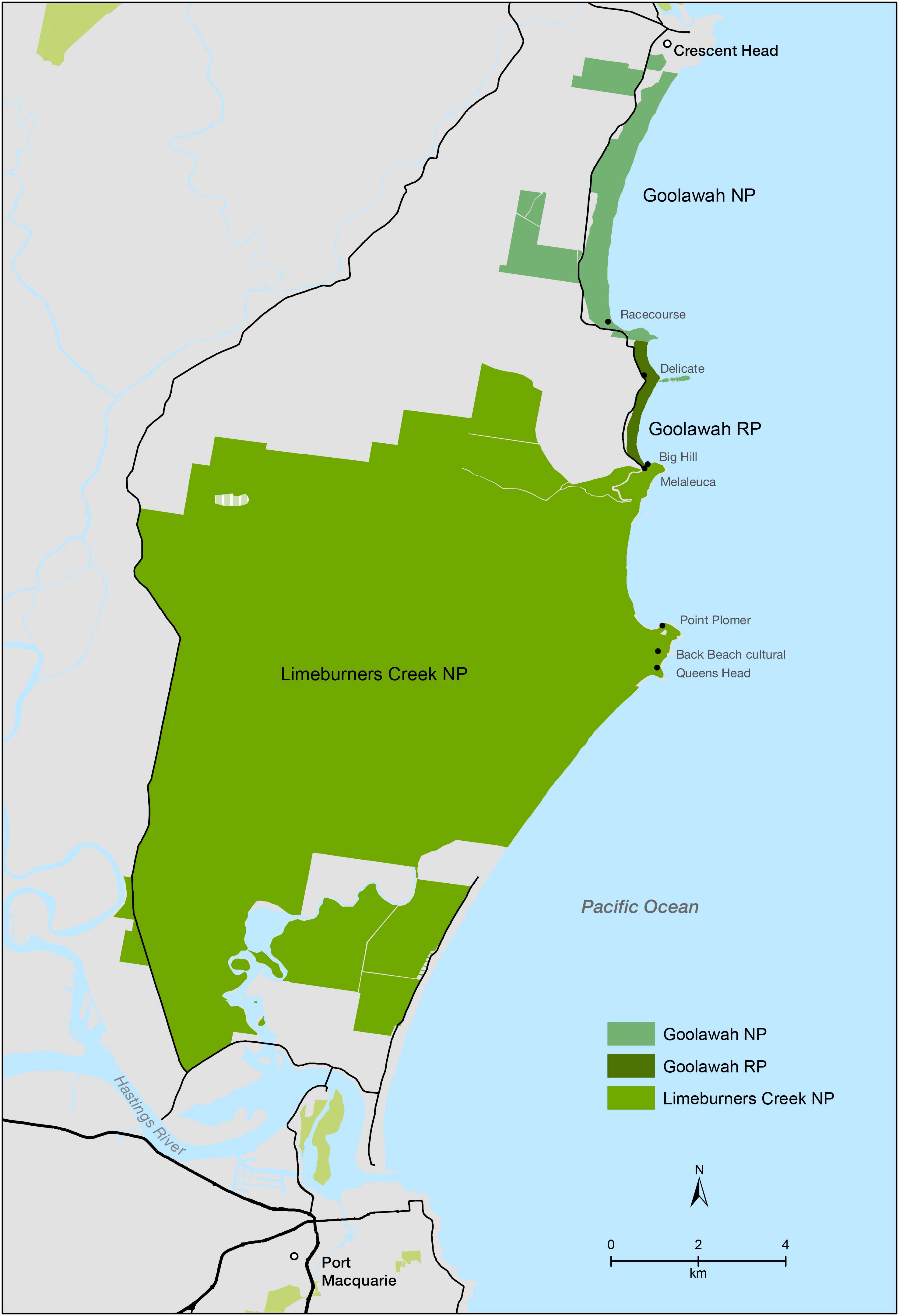
Limeburners Creek National Park, Goolawah National Park and Goolawah Regional Park engagement map Photo: DPIE
Baby Predator Starfish Prove To Be Unfussy Adaptable Eaters - And Scientists Are Worried
July 21, 2020
Just millimetres in diameter, baby Crown of Thorns Starfish can grow up to be metre-wide, deadly coral predators. Larvae and juveniles were grown at the National Marine Science Centre to learn what the early life stages eat. Surprisingly, juveniles eat a broad range of algae, leaving behind a patchwork of dead algae and white skeletons. The discovery helps to explain why it is so difficult to tell how old a crown of thorns starfish is.
New research published today in PLOS ONE from the University of Sydney and Southern Cross University’s National Marine Science Centre adds another piece to the crown of thorns (COT) puzzle.
Earlier this year the research team showed baby starfish can survive on algae for up to six and a half years, instead of switching to a coral diet at four months of age, as is their typical growth pattern.
Now, they have discovered that juveniles can eat a range of algae, not just the algae they were thought to prefer, crustose coralline algae. They can even subsist on biofilm – microorganisms that cover almost all surfaces in the ocean – to avoid starvation.
Juvenile COTS are difficult to study in the wild because they are small (just millimetres in diameter) and hide amid the coral reef. Marine biologists at Southern Cross University’s National Marine Science Centre (NMSC) at Coffs Harbour overcame this problem by raising the COTS in captivity.
Larvae and juveniles were grown in the NMSC’s state-of-the-art seawater systems that adjust conditions to match those found on coral reefs. Specialised seawater systems are used to grow the biofilms and seaweeds fed to the juvenile starfish in experiments.
This rearing technology was developed over more than a decade and means the NMSC is one of the few institutions worldwide doing this type of research.
“Juvenile COTS appear to be the ‘cockroach’ of the oceans – highly resilient and able to survive for months on food that we initially thought they would not eat,” said NMSC lead researcher Dr Benjamin Mos.
“Learning about the strengths and weaknesses of this lifestage may help us find new ways to manage population outbreaks that devastate coral reefs in Australia and the Indo-Pacific.”
Diet flexibility and growth of the early herbivorous juvenile crown-of-thorns starfish has implications for its boom-bust population dynamics. COTS must grow-up on a vegetarian diet until they are large enough to eat coral and grow to adulthood (up to a metre in size). When many juveniles make it through their herbivorous stage, population outbreaks may occur with devastating impacts on coral reefs as corals are literally eaten away.
The new findings highlight the need to consider the longevity and dietary flexibility of juveniles when modelling population dynamics, locating juveniles in the wild, and designing strategies to effectively manage the COTS problem.
“Outbreaks of COTS are a diabolical problem for coral reefs,” said Professor Symon Dworjanyn, also of the NMSC.
“Despite decades of focused research on COTS we are still uncovering surprising information about this sneaky species. The ability for the young starfish to eat such a broad range of foods shocked us.”
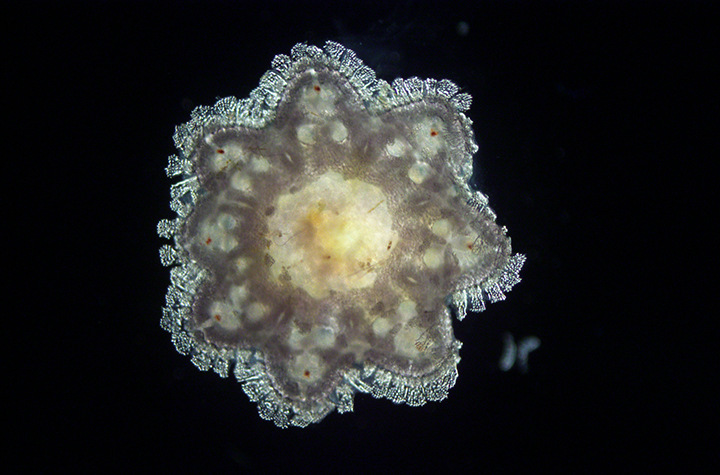
A newly settled crown of thorns starfish, measuring just millimetres (credit: Benjamin Mos).
Rat Poisons Are Killing Our Wildlife: Alternatives
BirdLife Australia is currently running a campaign highlighting the devastation being caused by poison to our wildlife. Rodentcides are an acknowledged but under-researched source of threat to many Aussie birds. If you missed BirdLife's rodenticide talk but would like to know more, share data and comment on the use of rodenticides in Australia please visit: https://www.actforbirds.org/ratpoison
Owls, kites and other birds of prey are dying from eating rats and mice that have ingested Second Generation rodent poisons. These household products – including Talon, Fast Action RatSak and The Big Cheese Fast Action brand rat and mice bait – have been banned from general public sale in the US, Canada and EU, but are available from supermarkets throughout Australia.
Australia is reviewing the use of these dangerous chemicals right now and you can make a submission to help get them off supermarket shelves and make sure only licenced operators can use them.
There are alternatives for household rodent control – find out more about the impacts of rat poison on our birds of prey and what you can do at the link above and by reading the information below.
Let’s get rat poison out of bird food chains.
The Australian Pesticides and Veterinary Medicines Authority (APVMA) – is currently asking Australians for their views on how rodent poisons are regulated.
Have your say by making a submission here.
Powerful Owl at Clareville - photo by Paul Wheeler
Pesticides that are designed to control pests such as mice and rats cane also kill our wildlife through either primary or secondary poisoning. Insecticides include pesticides (substances used to kill insects), rodenticides (substances used to kill rodents, such as rat poison), molluscicides (substances used to kill molluscs, such as snail baits), and herbicides (substances used to kill weeds).
Primary poisoning occurs when an animal ingests a pesticide directly – for example, a brushtail possum or antechinus eating rat bait. Secondary poisoning occurs when an animal eats another animal that has itself ingested a pesticide – for example, a greater sooty owl eating a rate that has been poisoned or an antechinus that had eaten rat bait.
Rodenticides are the most common and harmful pesticides to Australian wildlife. Though no comprehensive monitoring of non-target exposure of rodenticides has been conducted, numerous studies have documented the harm rodenticides do to native animals. In 2018, an Australian study found that anticoagulant rodenticides in particular are implicated in non-target wildlife poisoning in Australia, and warned Australia’s usage patterns and lax regulations “may increase the risk of non-target poisoning”.
Most rodenticides work by disrupting the normal coagulation (blood clotting) process, and are classified as either “first generation” / “multiple dose” or “second generation” / “single dose”, depending on how many doses are required for the poison to be lethal.
These anticoagulant rodenticides cause victims of anticoagulant rodenticides to suffer greatly before dying, as they work by inhibiting Vitamin K in the body, therefore disrupting the normal coagulation process. This results in poisoned animals suffering from uncontrolled bleeding or haemorrhaging, either spontaneously or from cuts or scratches. In the case of internally haemorrhaging, which is difficult to spot, the only sign of poisoning is that the animal is weak, or (occasionally) bleeding from the nose or mouth. Affected wildlife are also more likely to crash into structures and vehicles, and be killed by predators.
An animal has to eat a first generation rodenticide (e.g. warfarin, pindone, chlorophaninone, diphacinone) more than once in order to obtain a lethal dose. For this reason, second generation rodenticides (e.g. difenacoum, brodifacoum, bromadiolone and difethialone) are the most commonly used rodenticides. Second generation rodenticides only require a single dose to be consumed in order to be lethal, yet kill the animal slowly, meaning the animal keeps coming back. This results in the animal consuming many times more poison than a single lethal dose over the multiple days it takes them to die, during which time they are easy but lethal prey to predators. This is why second generation poisons tend to be much more acutely toxic to non-target wildlife, as they are much more likely to bioaccumulate and biomagnify, and clear very slowly from the body.
Species most at risk from poisons
Small Mammals
Small mammals including possums and bandicoots often consume poisons such as snail bait, or rat bait that has been laid out to attract and kill rats, mice, and rabbits. Poisons such as pindone are often added to oats or carrots, and lead to a slow, painful death of internal bleeding. Australian possums often consume rat bait such as warfarin, which causes extensive internal bleeding, usually resulting in death.
There is a very poor chance of survival. Possums are also known to consume slug bait, which results in a prolonged painful death mainly from neurological effects. There is no treatment.
Small mammals can also be poisoned by insecticides. Possums, for example, can ingest these poisons when consuming fruit from a tree that has been sprayed with insecticide. Rescued by a WIRES carer, the brushtail possum joey pictured below was suffering from suspected insecticide poisoning. Though coughing up blood, luckily the joey did not ingest a lethal dose as he survived in care and was later released.
Large Mammals
Despite their size, large mammals including wallabies, kangaroos and wombats can also fall victim to pesticide poisoning. Wallabies and kangaroos have been known to suffer from rodenticide poisoning, while poisons often ingested by wombats include rat bait from farm sheds, and sodium fluroacetate (1080) laid out to kill pests such as cats and foxes.
Australian mammals are also impacted by the use of insecticides. DDT, although a banned substance, has been reported as killing marsupials.
Birds
Birds have a high metabolic rate and therefore succumb quickly to poisons. Australian birds of prey – owls (such as the southern boobook) and diurnal raptors (such as kestrels) – can be killed by internal bleeding when they eat rodents that have ingested rat bait. A 2018 Western Australian study determined that 73% of southern boobook owls found dead or were found to have anticoagulant rodenticides in their systems, and that raptors with larger home ranges and more mammal-based diets may be at a greater risk of anticoagulant rodenticide exposure.
Insectivorous birds will often eat insects sprayed with insecticides, and a few different species of birds may be affected at the same time. Unfortunately little can be done and death most often results.
Organophosphates are the most widely used insecticide in Australia. Birds are very susceptible to organophosphates, which are nerve toxins that damage the nervous system, with poisoning occurring through the skin, inhalation, and ingestion. Organophosphates can cause secondary poisoning in wild birds which ingest sprayed insects. Often various species of insectivorous birds are affected at the same time as they come down to eat the dying insects. After a bird is poisoned, death usually occurs rapidly. Raptors have also been deliberately or inadvertently poisoned when organophosphates have been applied to a carcass to poison crows.
Organochlorine pesticides (OCPs) are persistent, bio-accumulative pesticides that include DDT, dieldrin, heptachlor and chlordane. OPC’s have been used extensively in the agriculture industry since the 1940s. Some of the more common product names include Hortico Dieldrin Dust, Shell Dieldrex and Yates Garden Dust. Although no OCP’s are currently registered for use in the home environment in Australia, many of these products still remain in use on farms, in business premises and households. OCP poisons remain highly toxic in the environment for many years impacting on humans, animals, birds and especially aquatic life. They can have serious short-term and long-term impacts at low concentrations. In addition, non-lethal effects such as immune system and reproductive damage of some of these pesticides may also be significant. Birds are particularly sensitive to these pesticides, and there have even been occasions where the deliberate poisoning of birds has occurred. Tawny frogmouths are most often poisoned with OCP’s. The poisons are stored in fat deposits and gradually increase over time. At times of food scarcity, or during any stressful period, such as breeding season or any changes to their environment, the fat stores are metabolised, and with it, the poison load in their blood streams reaches acute levels, causing death.
Although herbicides, or weed killers, are designed to kill plants, some are toxic to birds. Common herbicide glyphosate (Roundup) will cause severe eye irritation in birds if they come into contact with the spray. Herbicides also have the impact of removing food plants that birds, or their insect food supply, rely on. Birds can also readily fall victim to snail baits, either via primary or secondary poisoning.
Reptiles and Amphibians
As vertebrate species, reptiles and amphibians are also at risk of pesticides. Though less is known about the effects of pesticides on reptiles and amphibians, these animals have been known to fall victim to pesticide poisoning. Blue-tongue lizards, for example, often consume rat bait and die of internal bleeding. A 2018 Australian study also found that reptiles may be important vectors (transporters) of rodenticides in Australia.
How to keep pests away and keep wildlife safe
Remember, pesticides are formulated to be tasty and alluring to the target species, but other species find them enticing, too. It is safest for wildlife, pets and people for us to not use any pesticides, and prevent or deter the presence of pests practically, rather than attempt to eliminate them chemically.
Tips to prevent and deter wildlife deaths from poisoning:
- Deter rats and mice around your property by simply cleaning up; removing rubbish, keeping animal feed well contained and indoors, picking up fallen fruits and vegetation, and using chicken feeders removes potential food sources.
- Seal up holes and in your walls and roof to reduce the amount of rodent-friendly habitat in your house.
- Replace palms with native trees; palm trees are a favourite hideout for black rats, while native trees provide ideal habitat for native predators like owls and hawks which help to control rodent populations.
- Set traps with care in a safe, covered spot, away from the reach of children, pets and wildlife. Two of the most effective yet safe baits are peanut butter and pumpkin seeds.
- To control slugs, terracotta or ceramic plant pots can be placed upside down in the garden or aviary. Slugs and snails will seek the dark, damp area this creates, and can be collected daily. They can then be drowned in a jar of soapy water. You can also sink a jar or dish into the soil and fill it with beer. The slugs are attracted to the yeast in the beer, fall in and then drown.
If turning to pesticides as a last resort:
- Use only animal-safe slug baits.
- Place tamper-proof bait stations out of reach of wildlife.
- Avoid using loose whether pellets or poison grain, present the highest risk, the latter being particularly attractive to seed-eating birds and to many small mammal species.
- Read the label and use as instructed.
- Avoid products containing second generation products difenacoum, brodifacoum, bromadiolone and difethialone, which are long-lasting and much more likely to unintentionally poison wildlife via secondary poisoning.
- Cover individual fruits when spraying fruit trees with insecticides.
Poisons kill dogs too
Because of their poisonous nature, pesticides pose a risk to animals and people alike, including pets and children. Roaming pets like cats and dogs are most at risk of being poisoned, with one 2016 study at the Norwegian University of Life Sciences finding that one in five dogs had rat poison in its body, and a 2011 study by the Humane Society in the United States finding that 74% of their pet poisoning cases are due to second-generation anticoagulants such as rat baits.
It is best to avoid the use of all pesticides, or otherwise use them sparingly, carefully and only after researching each poison and its correct usage. Always supervise pets and children, keep poisons locked out of their reach, and be vigilant in public spaces where pesticides may have accumulated, e.g. poisons can accumulate in streams or puddles where herbicides have recently been sprayed.
If you suspect your pet has been poisoned, seek veterinary help immediately.
If you suspect your child or another adult has been poisoned, do not induce vomiting and call the NSW Poisons Information Centre on 13 11 26 for 24/7 medical advice, Australia-wide.
References
Lohr, M. T. & Davis, R. A. 2018, Anticoagulant rodenticide use, non-target impacts and regulation: A case study from Australia, Science of The Total Environment, vol. 634, pp. 1372-1384.
Lohr, M. T. 2018, Anticoagulant rodenticide exposure in an Australian predatory bird increases with proximity to developed habitat, Science of The Total Environment, Volume 643, pp.134-144.
Lohr, M. T. 2018, Anticoagulant Rodenticides: Implications for Wildlife Rehabilitation, conference paper, Australian Wildlife Rehabiliation Conference, awrc.org.au
Olerud, S., Pedersen, J. & Kull, E. P. 2009, Prevalence of superwarfarins in dogs – a survey of background levels in liver samples of autopsied dogs. Norwegian University of Life Sciences, Faculty of Veterinary Medicine and Life Sciences, Department of Sports and Family Animal Medicine, Section for Small Animal Diseases.
Healthy Wildlife, Healthy Lives, 2017, Rodenticides and Wildlife, healthywildlife.com.au
Society for the Preservation of Raptors Inc. 2019, Raptor Fact Sheet: Eliminate Rats and Mice, Not Wildlife!, raptor.org.au/factsheetpests.pdf
W.I.R.E.S. Poisons and baits don't just kill rats.
.jpg?timestamp=1590728675788)
Barking Owl (Ninox connivens connivens)- photo by Julie Edgley - this nocturnal animal will eat mice and so become a victim of poisons through them
Echidna Season
Echidna season has begun. As cooler days approach, our beautiful echidnas are more active during the days as they come out to forage for food and find a mate. This sadly results in a HIGH number of vehicle hits.
What to do if you find an Echidna on the road?
- Safely remove the Echidna off the road (providing its safe to do so).
- Call Sydney Wildlife or WIRES
- Search the surrounding area for a puggle (baby echidna). The impact from a vehicle incident can cause a puggle to roll long distances from mum, so please search for these babies, they can look like a pinky-grey clump of clay
What to do if you find an echidna in your yard?
- Leave the Echidna alone, remove the threat (usually a family pet) and let the Echidna move away in it's own time. It will move along when it doesn't feel threatened.
If you find an injured echidna or one in an undesirable location, please call Sydney Wildlife on 9413 4300 for advice.
www.sydneywildlife.org.au
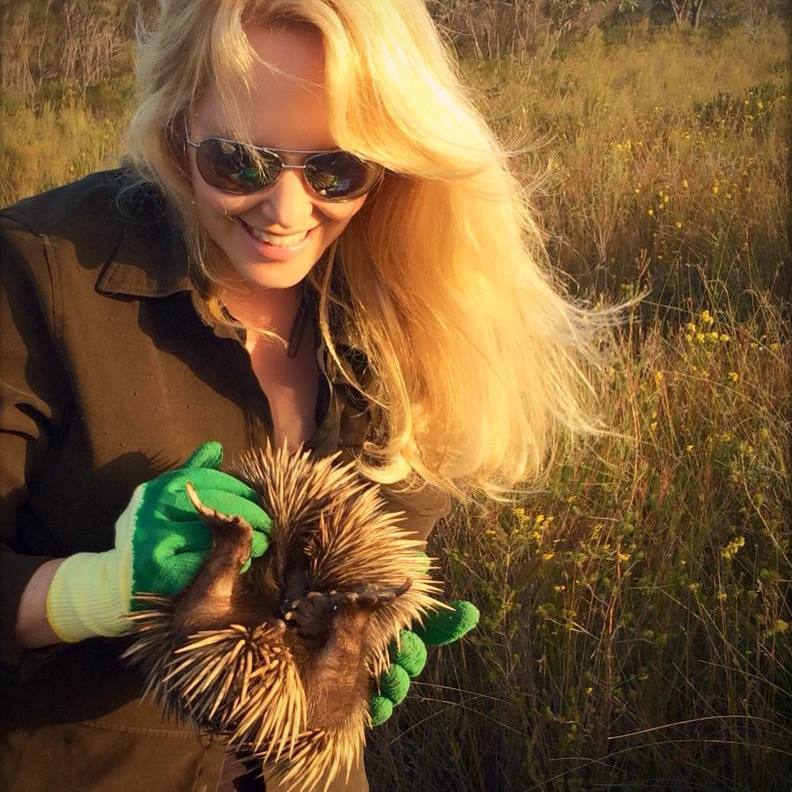
Lynleigh Greig, Sydney Wildlife, with a rescued echidna being returned to its home
 New Shorebird Identification Booklet
New Shorebird Identification Booklet
The Migratory Shorebird Program has just released the third edition of its hugely popular Shorebird Identification Booklet. The team has thoroughly revised and updated this pocket-sized companion for all shorebird counters and interested birders, with lots of useful information on our most common shorebirds, key identification features, sighting distribution maps and short articles on some of BirdLife’s shorebird activities.
The booklet can be downloaded here in PDF file format: http://www.birdlife.org.au/documents/Shorebird_ID_Booklet_V3.pdf
Paper copies can be ordered as well, see http://www.birdlife.org.au/projects/shorebirds-2020/counter-resources for details.
Download BirdLife Australia's children’s education kit to help them learn more about our wading birdlife
Shorebirds are a group of wading birds that can be found feeding on swamps, tidal mudflats, estuaries, beaches and open country. For many people, shorebirds are just those brown birds feeding a long way out on the mud but they are actually a remarkably diverse collection of birds including stilts, sandpipers, snipe, curlews, godwits, plovers and oystercatchers. Each species is superbly adapted to suit its preferred habitat. The Red-necked Stint is as small as a sparrow, with relatively short legs and bill that it pecks food from the surface of the mud with, whereas the Eastern Curlew is over two feet long with a exceptionally long legs and a massively curved beak that it thrusts deep down into the mud to pull out crabs, worms and other creatures hidden below the surface.
Some shorebirds are fairly drab in plumage, especially when they are visiting Australia in their non-breeding season, but when they migrate to their Arctic nesting grounds, they develop a vibrant flush of bright colours to attract a mate. We have 37 types of shorebirds that annually migrate to Australia on some of the most lengthy and arduous journeys in the animal kingdom, but there are also 18 shorebirds that call Australia home all year round.
What all our shorebirds have in common—be they large or small, seasoned traveller or homebody, brightly coloured or in muted tones—is that each species needs adequate safe areas where they can successfully feed and breed.
The National Shorebird Monitoring Program is managed and supported by BirdLife Australia.
This project is supported by Glenelg Hopkins Catchment Management Authority and Hunter Local Land Services through funding from the Australian Government’s National Landcare Program. Funding from Helen Macpherson Smith Trust and Port Phillip Bay Fund is acknowledged.
The National Shorebird Monitoring Program is made possible with the help of over 1,600 volunteers working in coastal and inland habitats all over Australia.
The National Shorebird Monitoring program (started as the Shorebirds 2020 project initiated to re-invigorate monitoring around Australia) is raising awareness of how incredible shorebirds are, and actively engaging the community to participate in gathering information needed to conserve shorebirds.
In the short term, the destruction of tidal ecosystems will need to be stopped, and our program is designed to strengthen the case for protecting these important habitats.
In the long term, there will be a need to mitigate against the likely effects of climate change on a species that travels across the entire range of latitudes where impacts are likely.
The identification and protection of critical areas for shorebirds will need to continue in order to guard against the potential threats associated with habitats in close proximity to nearly half the human population.
Here in Australia, the place where these birds grow up and spend most of their lives, continued monitoring is necessary to inform the best management practice to maintain shorebird populations.
BirdLife Australia believe that we can help secure a brighter future for these remarkable birds by educating stakeholders, gathering information on how and why shorebird populations are changing, and working to grow the community of people who care about shorebirds.
To find out more visit: http://www.birdlife.org.au/projects/shorebirds-2020/shorebirds-2020-program
Bushcare In Pittwater
Where we work Which day What time
Avalon
Angophora Reserve 3rd Sunday 8:30 - 11:30am
Avalon Dunes 1st Sunday 8:30 - 11:30am
Avalon Golf Course 2nd Wednesday 3 - 5:30pm
Careel Creek 4th Saturday 8:30 - 11:30am
Toongari Reserve 3rd Saturday 9 - 12noon (8 - 11am in summer)
Bangalley Headland 2nd Sunday 9 to 12noon
Bayview
Winnererremy Bay 4th Sunday 9 to 12noon
Bilgola
North Bilgola Beach 3rd Monday 9 - 12noon
Algona Reserve 1st Saturday 9 - 12noon
Plateau Park 1st Friday 8:30 - 11:30am
Church Point
Browns Bay Reserve 1st Tuesday 9 - 12noon
McCarrs Creek Reserve Contact Bushcare Officer To be confirmed
Clareville
Old Wharf Reserve 3rd Saturday 8 - 11am
Elanora
Kundibah Reserve 4th Sunday 8:30 - 11:30am
 Mona Vale
Mona Vale Mona Vale Beach Basin 1st Saturday 8 - 11am
Mona Vale Dunes 2nd Saturday +3rd Thursday 8:30 - 11:30am
Newport
Bungan Beach 4th Sunday 9 - 12noon
Crescent Reserve 3rd Sunday 9 - 12noon
North Newport Beach 4th Saturday 8:30 - 11:30am
Porter Reserve 2nd Saturday 8 - 11am
North Narrabeen
Irrawong Reserve 2nd Saturday 2 - 5pm
Palm Beach
North Palm Beach Dunes 3rd Saturday 9 - 12noon
Scotland Island
Catherine Park 2nd Sunday 10 - 12:30pm
Elizabeth Park 1st Saturday 9 - 12noon
Pathilda Reserve 3rd Saturday 9 - 12noon
Warriewood
Warriewood Wetlands 1st Sunday 8:30 - 11:30am
Whale Beach
Norma Park 1st Friday 9 - 12noon
Western Foreshores
Coopers Point, Elvina Bay 2nd Sunday 10 - 1pm
Rocky Point, Elvina Bay 1st Monday 9 - 12noon
Gardens And Environment Groups And Organisations In Pittwater
Pittwater Reserves
Aussie Bread Tags Collection Points

Liquid Assets Waiting Period Must Be Dropped And Rent Assistance Raised COTA Australia States
Five Things You Need To Know About The Budget Update
Wild About Zebra Finches – Special Family Scenes
Curious Kids: what does the Sun's core look like?

What does the Sun’s core look like? Sophie, aged 8, Perth
What does the Sun’s core look like? This is a fantastic question Sophie, and one we will need to go on an adventure to answer!
We are about to take a journey to the centre of the Sun. The action begins about 148 million kilometres from our planet when we arrive at the Sun’s surface in our space ship.
It’s hot here at the surface, about 5,700 degrees Celsius, and the light is brilliant and blinding. As we look closer, the surface appears to bubble, just like boiling water. Some of the bubbles look darker than the others. The darker bubbles are slightly cooler than the rest, but every inch of the surface is still blisteringly hot.
Read more: Curious Kids: how are stars made?
From Zone To Zone
We continue on our journey, diving through one of these giant bubbles on the surface, and head towards our first stop: the convective zone.
Surrounding us is a hot fluid called plasma, filled with bubbles by the constant movement of hot gases rising and cool gases falling. The bubbles are moving, growing and shrinking. Some are even popping as our space ship travels down further, rocking from side to side like a boat in a high sea.
After travelling down for 200,000 kilometres (that’s about 15 times the width of the whole Earth!) the rocking finally stops. We’ve made it to our second stop, the radiative zone.
This part of the Sun is very hot. It is now 2 million degrees outside our space ship. If we could see individual light particles, called photons, we’d see them bouncing between the tiny particles, called atoms, that make up the plasma.
These bounces forwards and backwards and from side to side make up a dance scientists call a “random walk”. It can take one photon hundreds of thousands of years to randomly walk its way out of this layer.
Our spaceship is going full speed ahead, so we move through it much more quickly.
The weight of all the plasma above us pressing down means the plasma around us is denser than gold, and the temperatures are soaring up towards 15 million degrees! We have almost reached the final stop on our tour, the Sun’s core.
Read more: Curious Kids: Why do stars twinkle?
Welcome To The Core
Before we enter the core, we’re going to have to shrink down to the size of an atom. It is the only way we will get to see what is happening in here, because what we are trying to see in here is atoms, millions of times smaller than a grain of sand!
The core of the Sun is home to billions and billions of atoms of hydrogen, the lightest element in the universe. The immense pressure and heat pushes these atoms so close to one another that they squish together to create new, heavier atoms.
This is called nuclear fusion. The hydrogen atoms that get squished together form an entirely different substance called helium.

So now that we are in the core of the Sun, what does it actually look like? Not only is everything blindingly bright, but it just might have a pretty pink colour!
We can’t be entirely sure what the core would look like to human eyes, but we have seen in labs here on Earth that hydrogen plasma has a pink glow. So we can make an educated guess that hydrogen plasma in the core of the Sun would look about the same.
When atoms merge together, they release large amounts of energy in the form of light. The light works its way up through the core, into the radiative zone where it bounces around, until it finally makes it into the convective zone. Then the light travels up to the surface of the Sun through massive bubbles of plasma, and from the surface it is free to travel uninterrupted through the sky.
It’s time to leave the hottest place in our solar system and head back to Earth. Our journey has taken us 700,000 kilometres deep into the interior of the Sun, past the bubbles of the convective zone, through the billions of the light rays in the radiative zone and into the mysterious atom-fusing core.
As we land back on Earth and look towards the Sun in the sky, it’s almost like looking back in time. We know now the light we are seeing was created hundreds of thousands of years ago, in the hottest place in the Solar system!![]()
Sara Webb, PhD candidate in Astrophysics, Swinburne University of Technology
This article is republished from The Conversation under a Creative Commons license. Read the original article.
Curious Kids: why can't humans grow wings?

Why can’t humans grow wings? Christina, age 9, Beijing, China.
Hi Christina! Great question.
Humans are animals that have backbones. This means we’re in a group called “vertebrates” – along with fish, amphibians (such as frogs), reptiles, birds and mammals.
A long time ago, humans weren’t around. We actually came from 500-million-year-old fish that had no arms, legs or jaws. But slowly, from one fish parent to the next, they changed. Some started to grow arms and legs, eventually leading to humans as they are today.
These very slow changes happen to all animals over millions of years, in a process we call evolution. Every part of the human body, and every other animal, evolved in this way.
Read more: Curious Kids: how do scientists know evolution is real?
Two Arms, Two Legs: A Basic Vertebrate Body Plan
Fish were the first vertebrates to have pairs of limbs. For humans, these are our arms and legs. Fish have pairs of fins at their front and back.
A long time ago, some fish evolved bones in their fins that would later become human fingers. This pattern of having pairs of two limbs (four in total) resulted in the bodies vertebrates have today.
All vertebrates today have the same body plan: two arms, two legs, a head with two eyes, two nostrils, a mouth with teeth, and so on.
However over the course of evolution, some animals didn’t quite follow this plan exactly. Their bodies needed to be different to suit their lifestyle – whether this was swimming or flying. This is how wings came about.
How Animals Started To Fly
Wings of flying vertebrates, such as birds, are simply modified arms that help them fly.
You may have heard of pterosaurs – the (sometimes huge) flying creatures that lived at the time as dinosaurs. Pterosaurs also slowly formed their wings over many, many years. They did this by growing one long finger connecting a thin layer of skin called a membrane to the rest of their body.
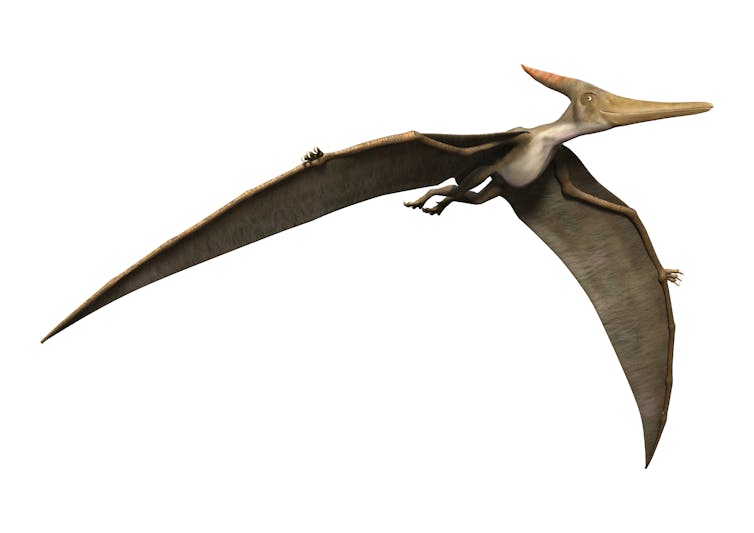
One group of dinosaurs evolved into birds about 160 million years ago.
This happened well after dinosaurs first gained feathers to help keep their bodies cool or warm as needed. Then, from one parent to the next, they slowly gained longer front arms to eventually make wings.
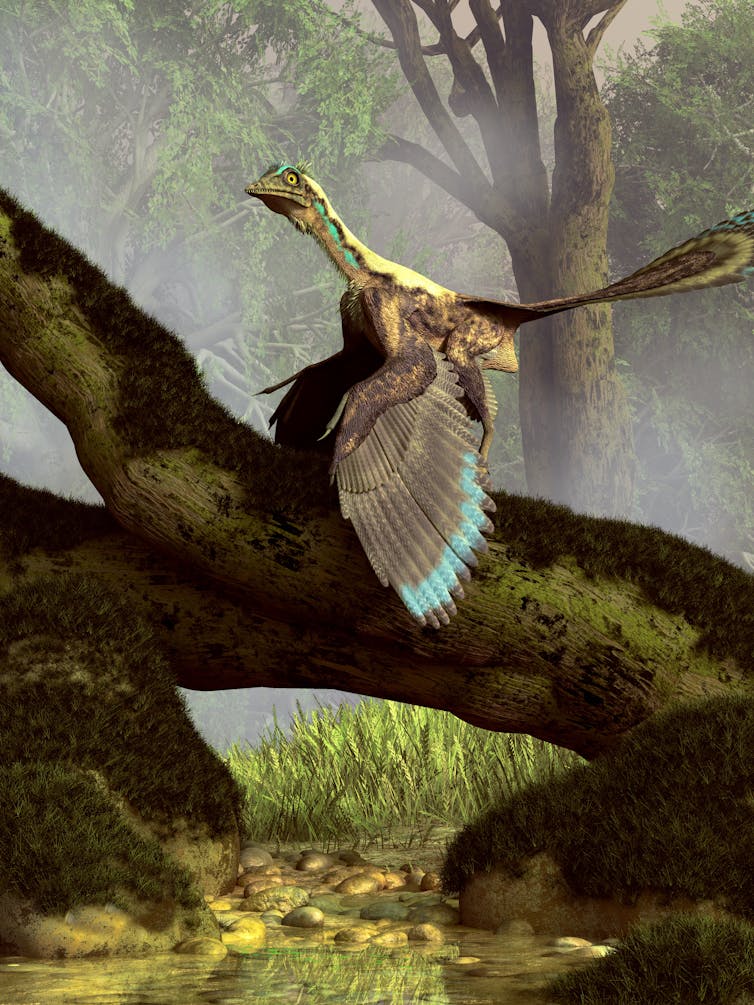
Why Didn’t Humans Evolve To Have Wings?
Now let’s look at why humans can’t grow wings.
All living things, including vertebrates, have genes. These are like little instruction booklets inside our bodies that decide how we grow and what our bodies can do. We can’t change what our genes do. For example, your genes are the reason your eyes may be black, or brown, or blue – but you can’t control this.
We also have genes called “hox genes”. These make sure our bodies grow a certain way as we get older. For instance, while you might grow taller thank your siblings, hox genes make sure you only grow two arms and two legs – and not eight legs like a spider. In fact, a spider’s own hox genes are what give it eight legs.
So one main reason humans can’t grow wings is because our genes only let us grow arms and legs.
What If We Did Have Wings Though?
Even if humans did have wings, we wouldn’t immediately be able to fly.
To fly, we would also need the right body size and metabolism. Metabolism is our body’s ability to use fuel (such as from the food we eat) to make energy, which helps us move.
Birds have very higher metabolisms than us. A hummingbird’s heart can beat up to 1,200 times per minute, while a human athlete’s heart might only go as fast as 220 beats per minute. This means hummingbirds can burn energy better than humans.
Flying birds also have much lighter bones that help them breathe better, feathers that help lift them while flying, and powerful lungs that keep oxygen pumping through their bodies.
Unless humans had all of this, we wouldn’t be able to fly even if we did have wings. Dinosaurs also only evolved to become birds by making their bodies much smaller and lighter over time.
Read more: Curious Kids: are humans going to evolve again?
What About Dragons?
While we know dragons aren’t real, some imaginary dragons have bodies close to real-life vertebrates.
Dragons such as Smaug in the movie The Hobbit have wings and legs only. So if Smaug was real he might actually have been able to fly, as long as he was light, had a high metabolism and a membrane to form his wings.
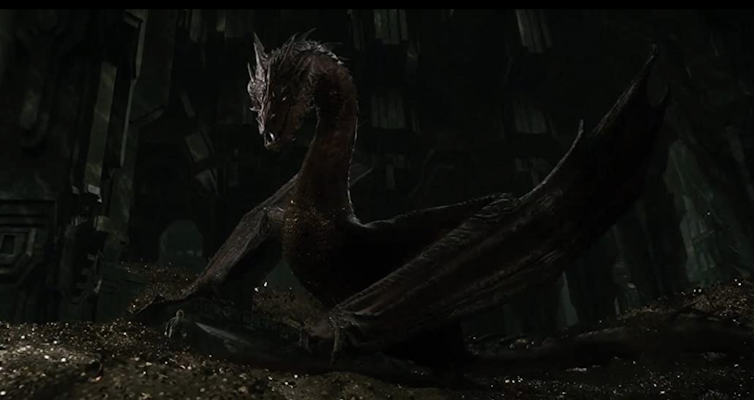
On the other hand, the dragon Night Fury from How to Train Your Dragon has arms, legs and wings. In real life, this would be like having two legs and two pairs of arms.
Night Fury breaks the basic rules of evolution as no vertebrate has ever evolved to have this combination of arms and legs. Insects can, but they don’t have backbones so they’re not vertebrates.
So if Night Fury was real, scientists may have to call him an insect.![]()
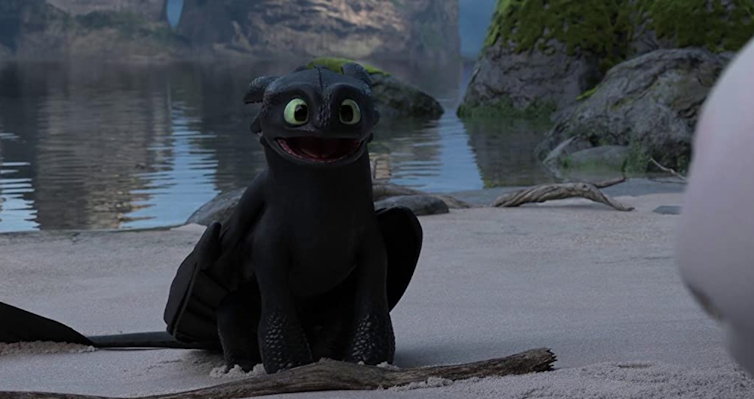
John Long, Strategic Professor in Palaeontology, Flinders University
This article is republished from The Conversation under a Creative Commons license. Read the original article.
QANTAS During Centenary Year: 2020
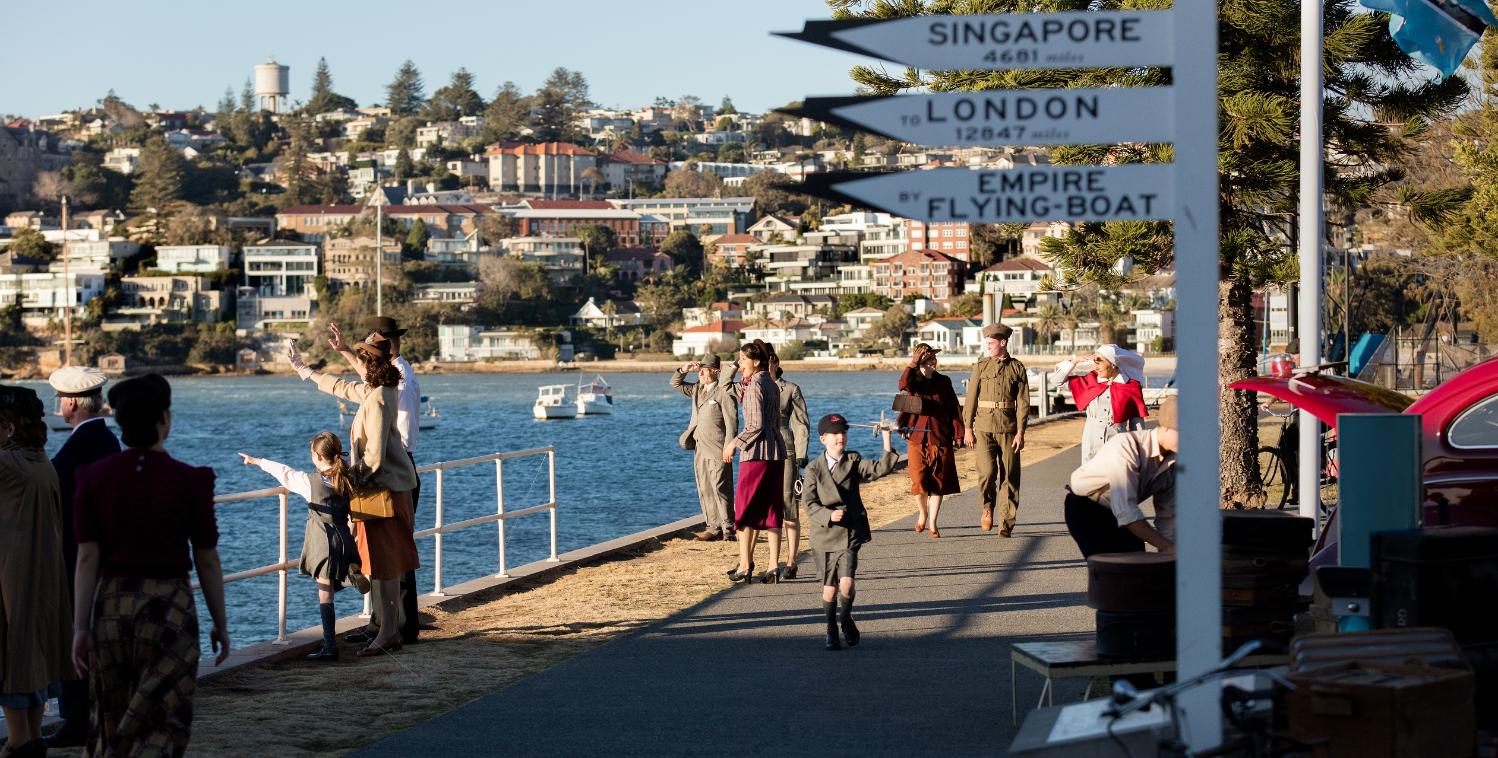
QANTAS Farewells “Queen Of The Skies” During Centenary Year

- Walter Oswald Watt - Bilgola Beach
- Wilfrid Kingsford Smith - Careel Bay and Clareville
- John William Cherry - Avalon Beach
- George Scotty Allan - Palm Beach and Careel Bay

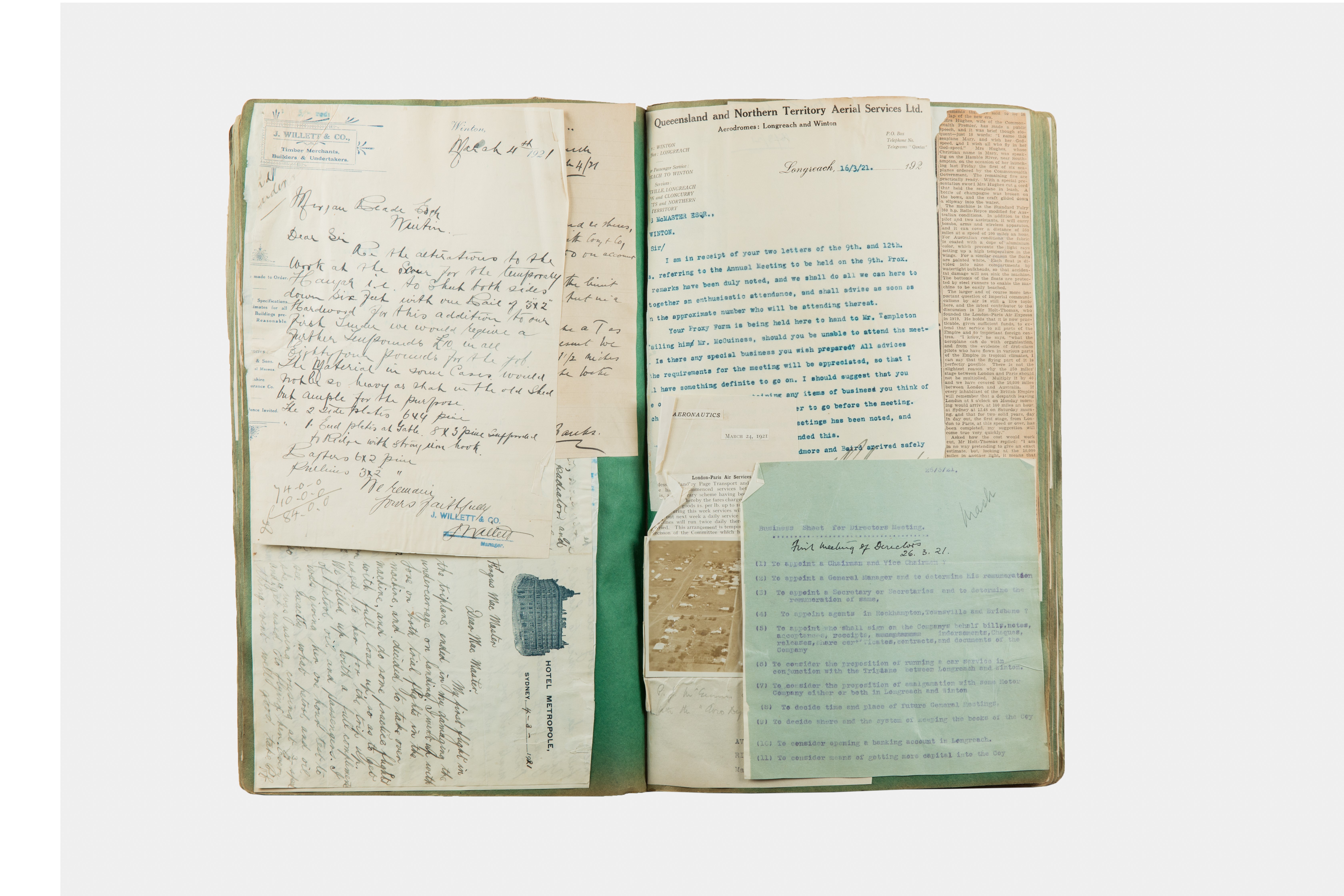


Mona Vale Photography Competition
Big Surf In Manly (Deadmans)
Video by Etienne Calmelet
Good surf hitting the east coast of Australia the 15th of July 2020. Shot with a7iii and Sony 600mm
An open letter to Australia's Education Minister Dan Tehan — signed by 73 senior professors
Nicholas Evans, Australian National University; Christine Beveridge, The University of Queensland; Chris Turney, UNSW; John Quiggin, The University of Queensland, and Joy Damousi, Australian Catholic UniversityThis open letter is written in response to the Australian government’s proposed reforms to the university sector, announced by Education Minister Dan Tehan on June 19, 2020. The so-called “job-ready graduates” package seeks to make courses in areas such as science, maths and teaching cheaper to encourage more students to get degrees in what the government sees to be job-growth areas. By contrast, fees for many humanities courses will more than double.
Dear Minister,
We write regarding the recently proposed changes to Australian higher education funding. We welcome the much-needed intent to boost domestic student enrolments. But the complicated and inconsistent nature of the funding changes and the intent to identify “work-relevant qualifications” risk further undermining the nation’s fourth largest export industry at a time the Australian economy can ill afford it.
As laureate researchers spanning a wide range of disciplines in science, technology, engineering and mathematics (STEM), humanities, arts and social sciences (HASS) and other fields, we believe this proposal will bring severe negative national consequences for future university training. It is likely to have the unintentional effect of amplifying inequities in higher education, and will work against the very economic goals it is trying to achieve.
1. The Proposal Makes Untenable Assumptions About Future Growth In Demand For Training In Particular Backgrounds
Successive Australian governments have refrained from “picking winners” in industry, but here we see that approach applied to education precisely at a time when future needs are becoming more heterogeneous and unpredictable.
Bracketing the humanities and social sciences as a category deemed less useful for future employment flies in the face of what we see among leaders in both politics and business. More Liberal frontbenchers, for instance, have received an arts degree than studied economics.
Business leader Jennifer Westacott, Chief Executive of the Business Council of Australia, emphasises the importance of a humanities education and Deloitte Access Economics stresses its value in teaching students to ask innovative questions, think critically for themselves, explain what they think, form ethical constructs and communicate flexibly across a range of perspectives.
The proposed changes reflect an outdated view of both HASS and STEM. Each is concerned with advancing our understanding of the world and providing the intellectual framework and critical thinking skills needed to acquire that understanding.
These will be critical for creating a flexible, responsive workforce in an increasingly diverse economy. In the face of our uncertainty about where future needs will lie, what we can be sure of is that interdisciplinary training will become ever more important.
2. Different Pricing Of Subjects Works Against Both Social Equity And Quality Teaching
It is unhealthy for a democratic and inclusive society to make some fields the province of those who can pay more for them.
Different pricing is unhealthy for every academic field: the best outcomes grow from an optimal match between disciplines and the talents and interests of those who want to study them, undistorted by arbitrary price signals.
3. The Proposed Policy Is Likely To Prove Rife With Unintended Consequences
Even within its own premises, many of the subjects it claims to promote (such as maths) will suffer severe cuts. Universities may be discouraged from offering such subjects, or boost their offerings in fields that are cheaper to teach, to cross-subsidise the more expensive courses.
The recently floated patch of an “integrity unit” to prevent this would simply increase regulatory burdens and consume resources better spent directly on education.
Complex sets of discipline categories greatly reduce the transparency and efficiency of the system. Energy will needlessly be diverted into defining subjects into or out of categories favoured or disfavoured by the funding model.
Universities need to be able to plan intelligently, delivering world-class education and training in an uncertain 21st century. Well-intended but counter-productive distortions in the funding model will not help.
The national economic impacts of these decisions have not been convincingly worked through.
A forward-looking policy of higher-education funding thus needs to do three things:
1. Avoid complex different policies
These will necessitate increased regulation, while failing to achieve either the diversion of student numbers that are sought, or the social and technological goal of better preparing our students for the future.
The simplest way to achieve this is to reinstate a flat HECS rate — a simple way to optimise the match between talent, interest and enrolment without distortions from family wealth, easy to administer, and immune from highly uncertain guesses about future trends.
2. Increase funding to universities in real terms
This will assure the growth in quality and capacity of one of Australia’s transformative success stories and its fourth greatest export. This should be a real increase, not funded from an arbitrary subset of future students at the outset of their careers in a time of great uncertainty.
We appreciate that the COVID-19 epidemic has put unprecedented pressures on the budget, but the need for greater support to our universities is more necessary than ever during this present time of huge financial stress, caused by the plummeting income of overseas students. Wise investment now will pay huge dividends later in the economic, scientific, social and cultural growth of the nation.
3. Integrate the systems for funding university and vocational education, which have long drifted apart
This will ensure every school-leaver has access to the level of training they need for a successful career. What is really needed is not a vocational approach to university education but a more systematic and thoughtful approach to vocational education.
In the modern economy, all kinds of work, including trades, require a broader range of skills than in the past, including communications and IT skills. We have much to learn here from the success of countries like Germany in integrating these two systems of higher education.
We urge this current piece of legislation be shelved in its current form, and replaced by one that has been drafted after proper consultation with a range of experts in the sector who are able to devise an optimal mechanism for building this vital part of our society’s future.
Yours sincerely,
Professor Nicholas Evans, School of Culture, History and Language, Australian National University
Professor Chris Turney, Faculty of Science, University of New South Wales
Professor Joy Damousi, President, Australian Academy of the Humanities
Professor Christine Beveridge, School of Biological Sciences, University of Queensland
Professor John Quiggin, School of Economics, University of Queensland
Professor Matthew England, Climate Change Research Centre, The University of New South Wales
Professor Mathai Varghese, Mathematical Sciences, The University of Adelaide
Professor Sue O'Connor, Archaeology and Natural History, The Australian National
Professor Barry Brook, School of Biological Sciences, University of Tasmania
Professor Bostjan Kobe, School of Chemistry and Molecular Biosciences, University of Queensland
Professor Michael Bird, College of Science & Engineering, James Cook University
Professor Ben Andrews, Mathematical Sciences Institute, Australian National University
Professor Ian Reid, School of Computer Science, University of Adelaide
Professor Trevor J McDougall, School of Mathematics and Statistics, University of New South Wales
Professor Tamara Davis, School of Mathematics and Physics, University of Queensland
Professor Steven Sherwood, Climate Change Research Centre, University of New South Wales
Professor Peter Goodyear, Centre for Research on Learning and Innovation, The University of Sydney
Professor Madeleine JH van Oppen, Institute of Marine Science, The University of Melbourne
Professor Christopher Barner-Kowollik, School of Chemistry & Physics, Queensland University of Technology
Professor Hong Hao, Centre for Infrastructural Monitoring and Protection, Curtin University
Professor Paul S.C. Tacon, Griffith Centre for Social and Cultural Research, Griffith University
Professor Matthew Bailes, Centre for Astrophysics and Supercomputing, Swinburne University of Technology
Professor Warwick Anderson, Faculty of Arts and Social Sciences, University of Sydney
Professor Malcolm McCulloch, Oceans Institute, The University of Western Australia
Professor Lynette Russell, Monash Indigenous Studies Centre, Monash University
Professor Ping Koy Lam, Research School of Physics, The Australian National University
Professor Alexandra Y. Aikhenvald, College of Arts, Society & Education, James Cook University
Professor Chennupati Jagadish, Research School of Physics, Australian National University
Professor Margaret Jolly, School of Culture, History and Language, The Australian National University
Professor Justin Marshall, Queensland Brain Institute, University of Queensland
Professor Jason Mattingley, Queensland Brain Institute, The University of Queensland
Professor George Zhao, Faculty of Engineering, Architecture and Information Technology, The University of Queensland
Professor John Dryzek, Institute for Governance & Policy Analysis, University of Canberra
Professor Brad Sherman, School of Law, University of Queensland
Professor Richard G. Roberts, ARC Centre of Excellence for Australian Biodiversity and Heritage, University of Wollongong
Professor Geoffrey Ian McFadden, School of BioSciences, University of Melbourne, University of Melbourne
Professor Peter Taylor, ARC Centre of Excellence for Mathematical and Statistical Frontiers, The University of Melbourne
Professor Belinda Medlyn Hawkesbury, Hawkesbury Institute for the Environment, Western Sydney University
Professor Fedor Sukochev, School of Mathematics and Statistics, University of New South Wales
Professor Michelle Coote, Research School of Chemistry, Australian National University
Professor Michael Tobar, Department of Physics, The University of Western Australia
Professor Hilary Charlesworth, Melboure Law School, The University of Melbourne
Professor Mark Finnane, School of Humanities, Languages and Social Science, Griffith University
Professor Katherine Demuth, Faculty of Medicine, Macquarie University
Professor Jolanda Jetten, School of Psychology, The University of Queensland
Professor Jon Barnett, Faculty of Science, Melbourne University
Professor Matthew Spriggs, College of Arts and Social Sciences, The Australian National University
Professor Kate Smith-Miles, School of Mathematics and Statistics, The University of Melbourne
Professor Shizhang Qiao, School of Chemical Engineering and Advanced Materials, The University of Adelaide
Professor Peter Visscher, Institute for Molecular Bioscience, The University of Queensland
Professor Zheng-Xiang, Faculty of Science and Engineering, Curtin University
Professor Toby Walsh, School of Computer Science & Engineering, UNSW Sydney
Professor Martina Stenzel, ARC Training Centre for Chemical Industries, University of New South Wales
Professor David James, School of Life and Environmental Science, University of Sydney
Professor Ross Buckley, School of Law, University of New South Wales
Professor Alex Haslam, School of Psychology, University of Queensland
Professor Stuart Wyithe, School of Physics, University of Melbourne
Professor Sara Dolnicar, Faculty of Business, The University of Queensland
Professor Lesley Head, School of Geography, University of Melbourne
Professor Glenda Sluga, Department of History, University of Sydney
Professor Ann McGrath, School of History, Australian National University
Professor Bernard Degnan, School of Biological Sciences, University of Queensland
Professor Philip Boyd, Institute for Marine and Antarctic Studies, University of Tasmania
Professor Richard Shine, Department of Biological Sciences, Macquarie University
Professor Loeske Kruuk, Research School of Biology, Australian National University
Professor Kaarin Anstey, ARC Centre of Excellence in Population Ageing Research, UNSW
Professor Paul Mulvaney, School of Chemistry, University of Melbourne
Professor Lianzhou Wang, School of Chemical Engineering, The University of Queensland
Professor Peter Waterhouse, Centre for Agriculture and the Bioeconomy, Queensland University of Technology
Professor George Willis, Mathematical and Physical Science, University of Newcastle
Professor Barry Pogson, Research School of Biology, Australian National University
Professor EJ Rohling, Research School of Earth Sciences, Australian National University
Professor Enrico Valdinoci, Department of Mathematics and Statistics, University of Western Australia![]()
Nicholas Evans, Professor, Linguistics, Australian National University; Christine Beveridge, Professor, School of Biological Sciences, The University of Queensland; Chris Turney, Professor, Earth Science and Climate Change, UNSW; John Quiggin, Professor, School of Economics, The University of Queensland, and Joy Damousi, President Australian Academy of the Humanities, Australian Catholic University
This article is republished from The Conversation under a Creative Commons license. Read the original article.
Friday essay: the forgotten German botanist who took 200,000 Australian plants to Europe
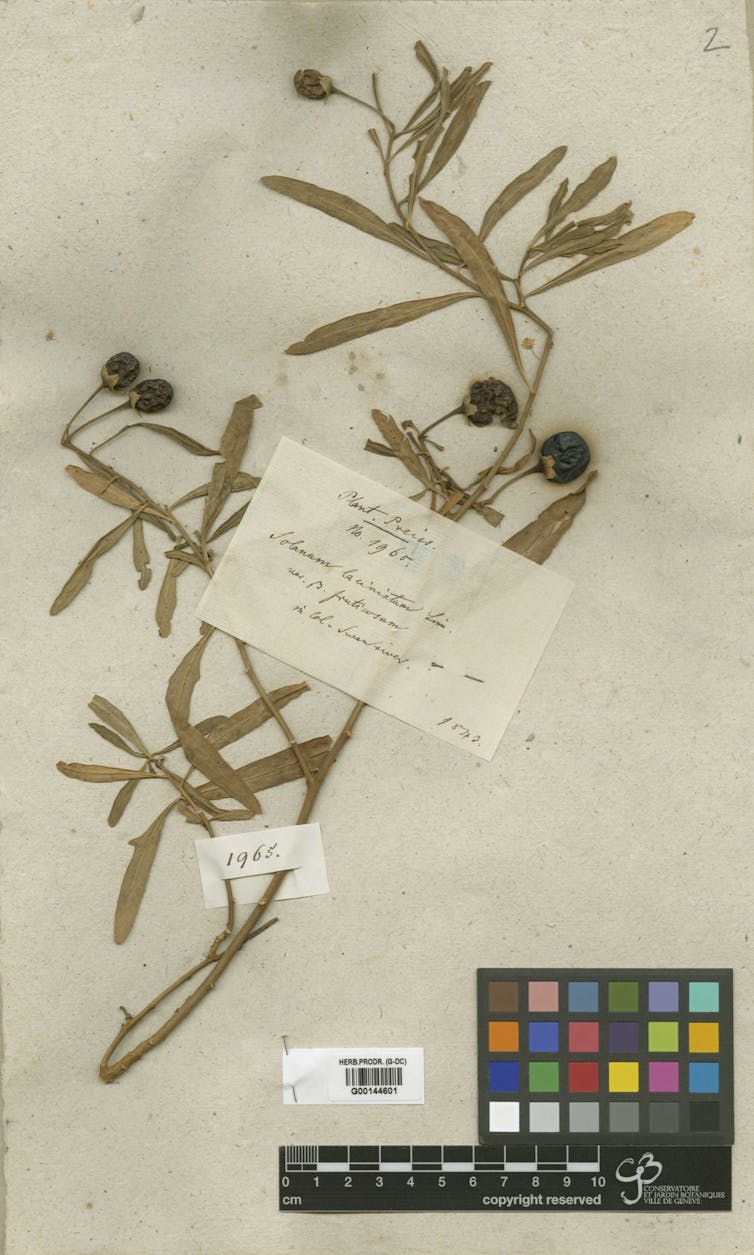
It is not widely known that many Australian colonial natural history collections are represented in German museums and herbaria, nor that there are initiatives to transform these artefacts of colonial heritage and science back into objects from living cultures with living custodians and their own stories to tell.
Dr Johann August Ludwig Preiss (1811–1883) played a significant role in this evolving story as the first professional botanist to collect systematically in the Colony of Western Australia from 1838 to 1842.
His collections of flora and fauna were pivotal in opening this globally significant region of biodiversity to the world — and he beat the British at their own game by bringing their new colony’s botanical wonder to scientists, nurserymen and gardeners in Europe.
Read more: Botany and the colonisation of Australia in 1770
Despite his unusually long sojourn collecting in Western Australia, Preiss has been largely forgotten – unlike his contemporary, the naturalist and explorer Ludwig Leichhardt (1813–1848), well known for his work in northern and eastern Australia and his ill-fated 1848 expedition to cross the continent; and the globally active science visionary Alexander von Humboldt (1769–1859), whose birth anniversaries were celebrated in Germany and Australia in 2013 and 2019 respectively.
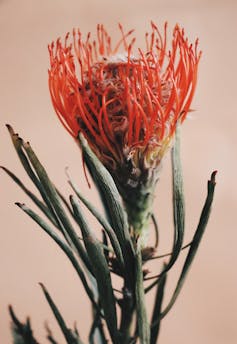
Preiss held no important posts in exploration, science or public office and left only a small selection of archived letters and some strangers’ impressions. So, we are left to speculate about the negative spaces between the known fragments of Preiss’s life and the agents – human and non-human – of the worlds he moved through.
The natural sciences in Germany and Britain in the 19th century shared much common ground: there were royal dynastic connections, cultural ties, migrations to Australia and complementary interests in advancing the natural sciences.
The British Empire, however, had the edge over Germany, with global networks plugged into the nerve centre of the Royal Botanical Gardens at Kew – an oasis of collecting, classifying, storing, propagating and dispersing exotic and useful plants in Britain and the colonies.

Germany had more diffuse networks of scientists, across scattered institutions – universities, herbaria and botanical gardens – focused on classifying and documenting the diversity of flora and fauna into rigid systems, using dried, preserved and some live specimens.
In Preiss’s time Germany had no colonies to draw on but collected on others’ turf. In British colonies this seemingly innocent practice was supported by their structures of privilege and violence.
While there were no legal prohibitions on German naturalists collecting in British colonies, Preiss irritated his hosts by staying so long, collecting so much and transporting most of it back to Germany, not London.
A Botanising Craze
Preiss came from humble origins in the small village of Herzberg am Harz, in the Harz Mountains of the Göttingen district of Lower Saxony. When I visited there in 2018 to learn about Preiss’s family and early life, the council archivist Dieter Karl Wolfe explained there was little local information known about his family.
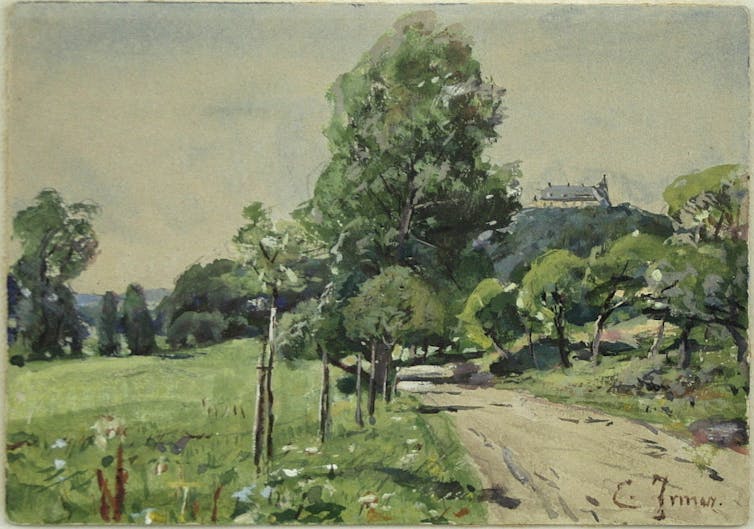
Preiss was the eldest surviving son of 12 children, and his father was a master saddler (like his father before him), a vinegar brewer and land owner. His cousin Gustav Friedrich Preiss (1825–1888) was the family success: he printed the local daily newspaper Kreiss Zeitung from 1848, became the village mayor and built a fine home. There are portraits of him and his wife in the council archive.
Another more internationally minded relative helped start the town’s Esperanto Society in the early 1900s. Friendly Esparantists showed me public monuments for Esperanto and its Polish founder, Ludwik Zamenhof (1859–1917) – but there was nothing to commemorate Preiss, their local botanical achiever.
Speculating on why Preiss took up botanising in far distant lands, Wolfe extolled the benefits of Germany’s advanced education system for gifted youths of limited means – like Preiss and Leichhardt.
The ideal was a humanistic education to equip children with the foundations of learning and intellect, allowing students to build further knowledge and expertise in adult life. The curriculum included science and languages.
Preiss probably followed the same schooling trajectory as Leichhardt: boarding school, gymnasium, university. Preiss was university educated and held a German DPhil doctorate. This was more like a degree with an original research component than today’s formal doctorate qualification.

Preiss’s faculty “promoter” was probably Professor Johann Georg Christian Lehmann (1792–1860), director of Hamburg’s botanic garden, who sent Preiss to the Western Australian Colony.
The craze for botanising gripped both scholars and amateurs and opened new opportunities for serious study, teaching and collecting – assisted by new equipment, including the vasculum (a botanical tin case for collecting in the field), drying papers for preparing specimens, Wardian cases (ensuring safe transportation back to Europe) and glass houses for cultivating living plants.
Read more: How the Wardian case revolutionised the plant trade – and Australian gardens
In the 1830s, the botanical world was abuzz with news of Western Australia’s unique floral diversity. Transport of plants to London was still in its early days in 1836 when Lehmann first recognised the chance for expansion through the 25-year-old Preiss.
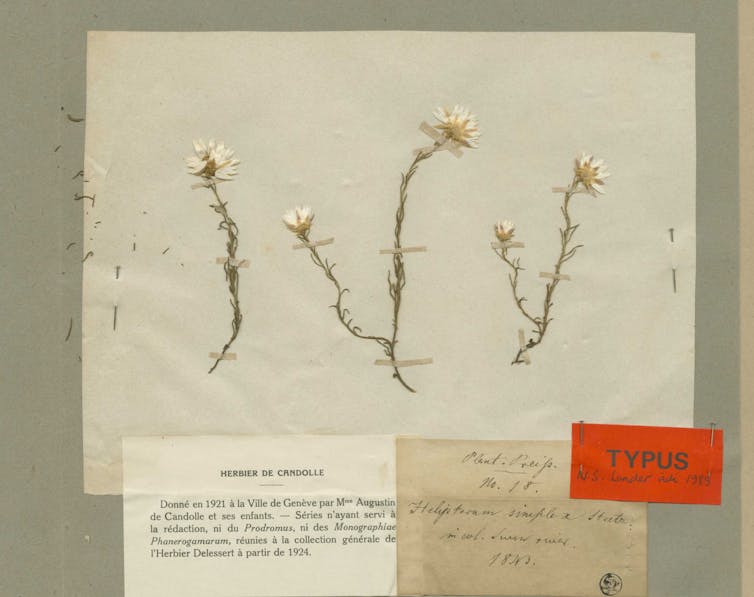
Preiss recalled being instructed to collect everything – flora, fauna, minerals and fossils – and hoped to “collect the products of [natural history] and arrange those products in a useful way for the purpose of Science”.
Lehmann and his wealthy friend, Wilhelm von Winthem (1799–1847), a private collector and entomologist with extensive collections, organised funds for him through a form of venture capital under which the von Winthem family company publicised and sold shares to private citizens and collecting institutions.
On Preiss’s return, investors would choose items from his collections equal to the value of their shares.
Rich Wilderness
Arriving in Perth in late 1838, a dusty village huddled between vast expanses of sea, bush and hinterland, Preiss encountered a parochial society.
Local collectors who worked with London’s botanical elite guarded their status jealously. Most colonists were disillusioned by false promises of rich farming lands and worn out by the struggle to survive.
I imagine Preiss as lonely and friendless.
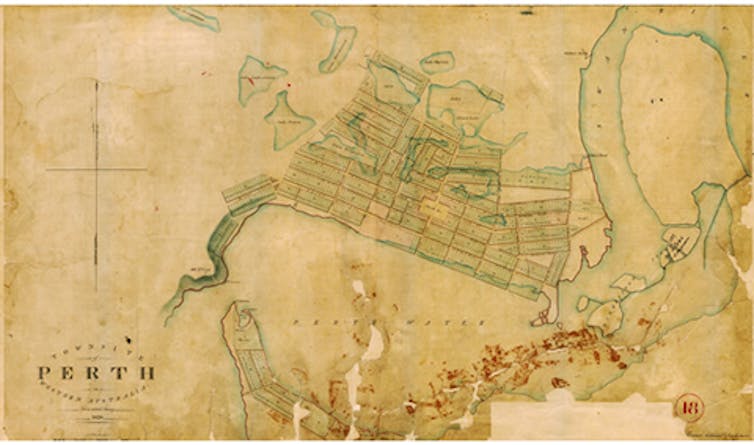
The local landscape would have been so strange for Preiss, humanised by millennia of Nyungar curation but an apparent wilderness to the colonists’ eyes.
Botanical scientist Steve Hopper has revealed how the deep time of the region’s unusually stable environmental evolution both helped shape the unique floristic richness and endemism of this area and enhanced Nyungar people’s deep knowledge (kartijin) of their country – enabling them to live well off the diversity of plant foods they cultivated and nurtured with practices they adapted to the environment and passed down over many thousands of years.
This richness drew Preiss in.
Preiss began collecting immediately. In contrast to local British collectors he had the freedom of sufficient funds and no domestic encumbrances or civic duties. He also had no rights to own land.
His extensive collecting implicated him in the process of multispecies destruction and dispossession. The Indigenous Nyungar people were already in a state of crisis as colonists destroyed their ancient accommodations to the land and replaced them with their own hasty adaptations of species and farming.
The destruction intensified during the 20th century with the clearing of 90% of the region for wheat farming. In fewer than 200 years this encounter between Old and New World ecosystems transformed the landscapes of exceptional floral riches into a canary in the coalmine for climate change.
Read more: Writing the WA wheatbelt, a place of radical environmental change
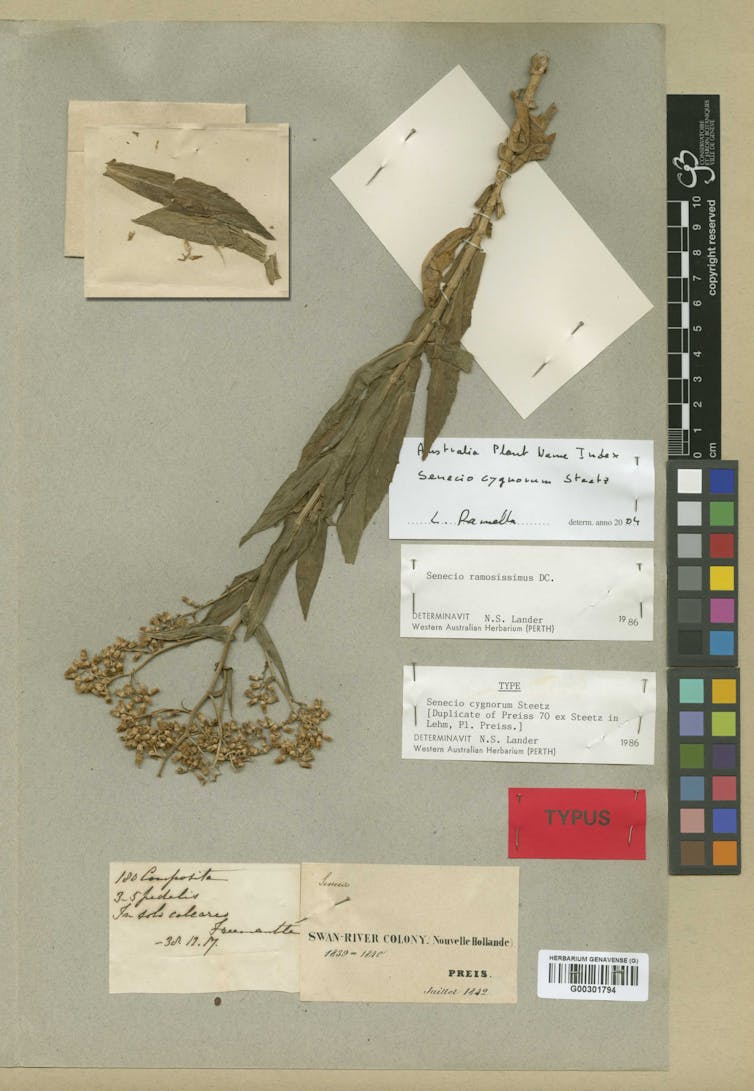
A new critical approach to Australian 19th century natural history collections in German institutions has been prompted by concerns about their colonial provenance and reports of environmental damage.
In 2018 in Berlin, curators and scholars attended an international conference on the politics of natural history and decolonising of collections and museums.
There were calls to open conversations with Indigenous custodians and reflect on issues of climate change. Environmental knowledge in Preiss’s field notebooks, now missing, could have made an important contribution.
In a report on the colony published in Flora (1842), Preiss wrote that he “recorded [information] about specimens he observed and learned accurately from the Aborigines”.
The field books from his 1841 survey commission held in the State Records Office in Perth suggest the extent of the loss, being richly illustrated with botanical and landscape features and detailed annotations of measures and calculations.
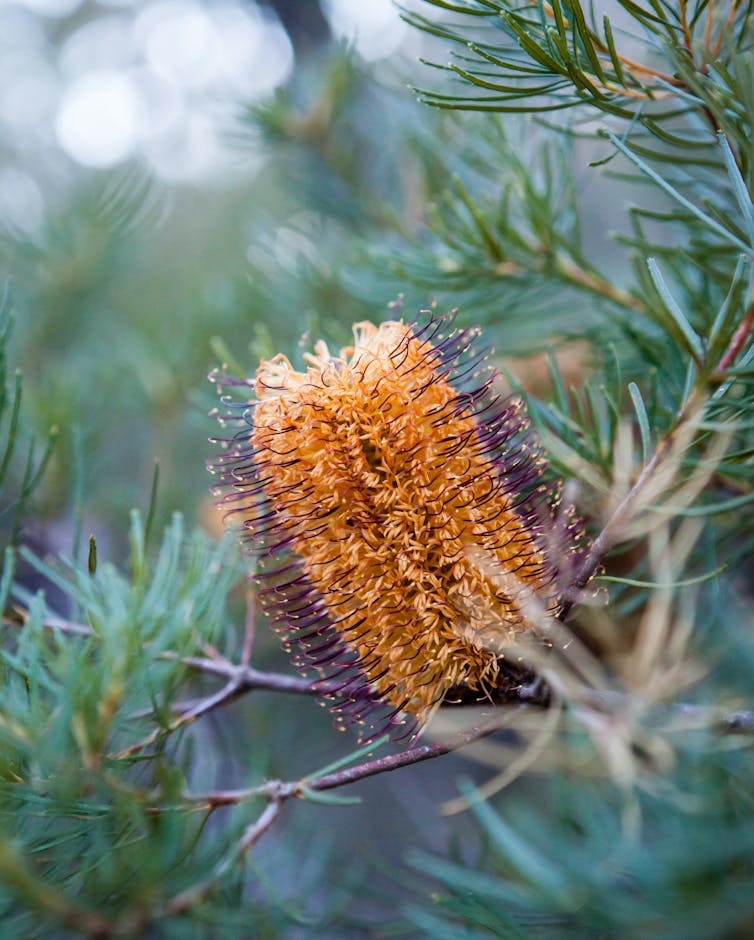
They speak eloquently today of how seriously Preiss took this colonial project to map “the significance of the earth … as a space to be occupied”.
Preiss wrote that he “traversed this land in all directions … [and] observed the greatest diversity of plants”. It seems he had no transport or equipment for long surveys, so often walked lengthy distances alone.
This was an intimate way for Preiss to come to know the bush. His proximity to plants and the earth sharpened his eye for shapes and colours as well as his capacity to interpret signs along bush pathways. He sometimes travelled with colleagues, and visited Rottnest Island with the colony’s chief botanist James Drummond and John Gilbert, who collected for British ornithologist John Gould.
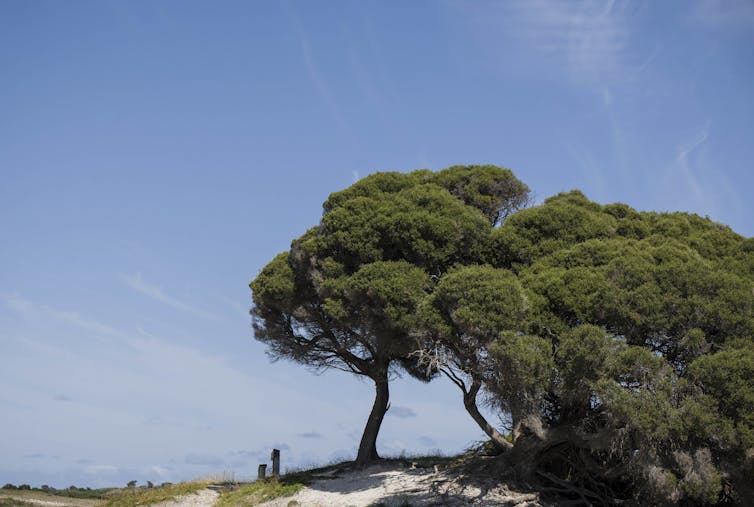
And he relied on the hospitality of homesteaders and assistance from Nyungar people. The colony’s Advocate-General George Fletcher Moore noted an instance, perhaps disapprovingly, of Preiss walking out of the bush with a Nyungar woman, both of them loaded down with plants.
He added that “the natives seem quite surprised at his collecting the jilbah [shrubs] and are very curious to know what he does with them”, suggesting that Preiss was following the colonial practice of collecting without their permission.
Despite being the colony’s best qualified botanist, Preiss was never invited to join its British collecting networks. Instead, Preiss built his own networks in London and Germany.
Drummond became his occasional helper and nemesis. He warned his London patron, Sir William Hooker (1785–1865), that the new German botanist was collecting for the Russian, Prussian and some German states.
The German botanist Dr Ludwig Diels (1874–1945), who collected in the area in 1906, imagined the two men as benign opposites: the older “bushman, always in the saddle” out collecting rather than “arranging his specimens in order” and young Preiss, the “cultured scientist of old Europe” and first collector in the colony to have “each item in his collection carefully labelled, giving the locality and other data”.
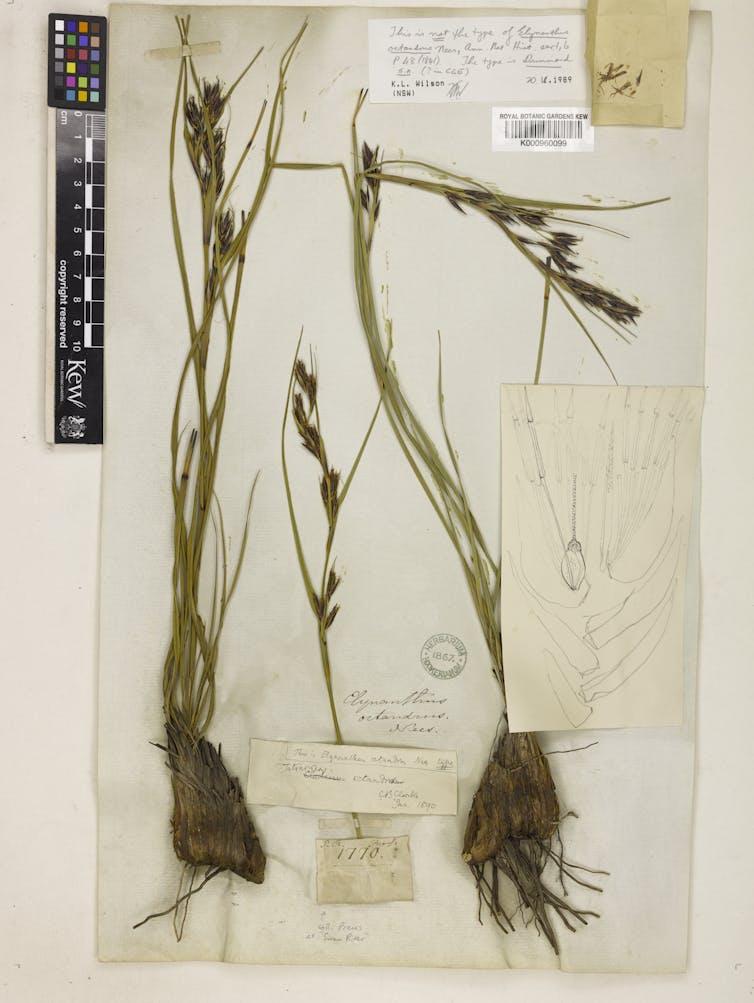
However, simmering resentments erupted after Preiss challenged Drummond’s identification of a poison plant killing stock and quaffed an infusion of its leaves to prove his point. Preiss survived the ordeal but lost the argument after Drummond proved the plants’ toxicity for stock.
The more Preiss wore out his welcome in the colony, the more determined he became to stay and in 1839 he decided to try his luck as a British subject, with all the benefits and moral compromises this bestowed.
In 1839 he wrote to the colonial governor requesting naturalisation as a British subject, referring to British connections with the kingdom of Hanover near his birthplace.
He outlined his intention to return to Germany to raise funds for expeditions into the northern interior to explore, collect and open up the land and then become a farmer.
He proposed to sell his collections to the British government for £3,000 – “being produce of a British territory” – and added, “I flatter myself that such a collection has never been sent from this country to England” and there were many new species “not known in Britain and Europe”.
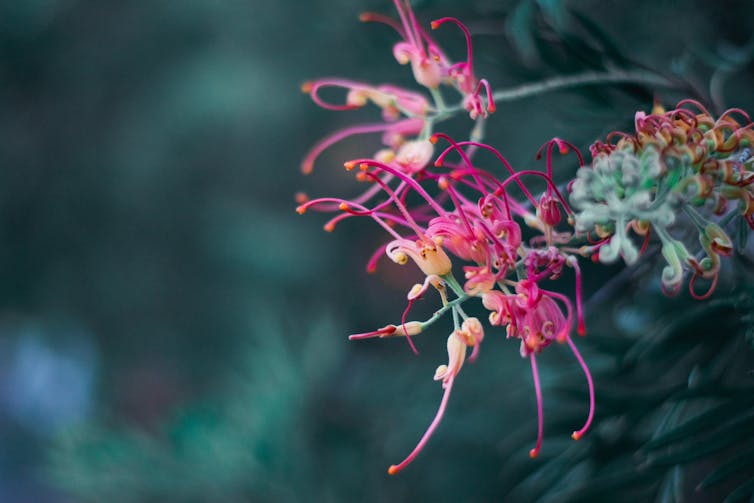
He also proposed a German immigration scheme to help resolve labour shortages in the colony, suggesting that 50 young farming families be enticed from Saxony and the Rhine Province in a payback arrangement with other settlers and for his own farming needs, with government land grants payable for bringing out workers.
If his proposal was not accepted he would seek Prussian and Russian funding to explore the north coast.
The British government refused Preiss’s offers, preferring to acquire from established British collectors such as Gould and Gilbert. His request for naturalisation was finally granted in 1841. The next year he travelled back to Europe, taking with him the largest collection then to leave the colony.
Lauded at the time, Preiss’s actions of taking Indigenous plant material and knowledge without consent for scientific gain would now be condemned as bio-piracy.
The collection included 200,000 plants with around 2,500 species and collections of algae, fungi, lichens, bryophytes as well as species of birds, reptiles, mammals, shells and more, as well as his copious notes.
Packed firmly in tin-lined boxes, they travelled well. Ironically, Preiss’s boxes left no space on board for Drummond’s collection of seeds and specimens to be sent to London. Delays in its passage meant that nurseries lost an entire season for planting – while Preiss’s quality collections and duplicate plants entirely spoiled the market for Drummond.
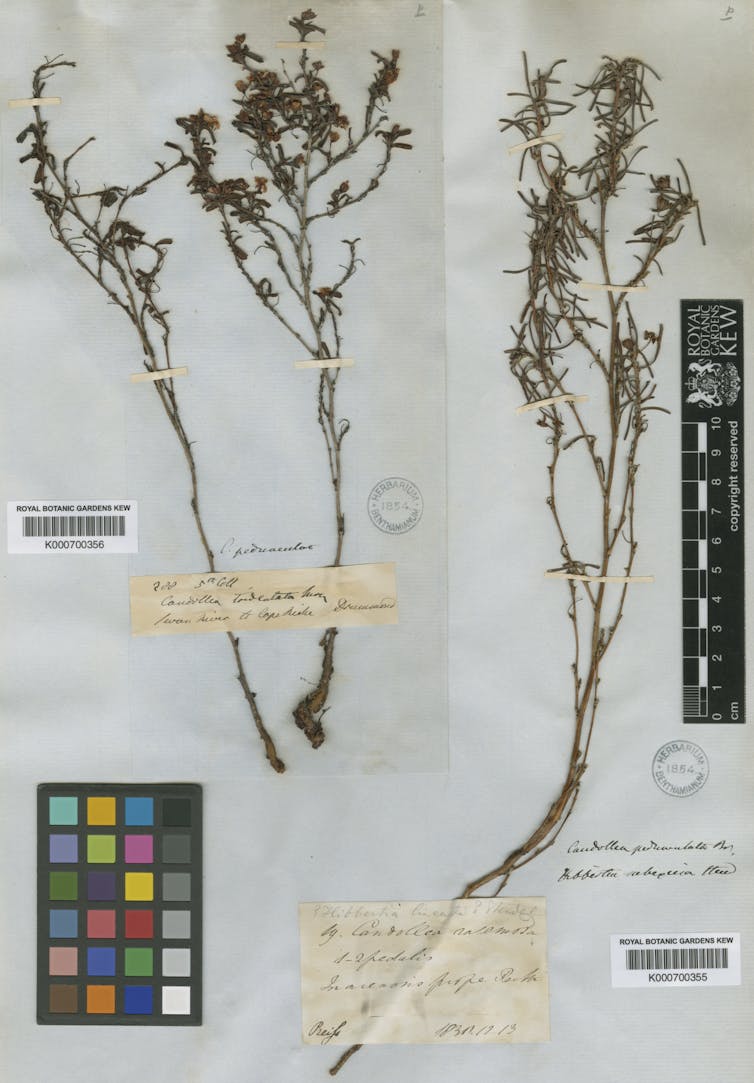
Diels lavishly praised Preiss’s collections for the sheer quantity of specimens he had collected in such a short period, the range of plant specimens, detailed information to identify flowers and plants and his collecting sites, the overall presentation that made his collections and notes so useful to science, and the outstanding achievement of producing the first West Australian collection for Europe’s leading herbaria.
Australian naturalist Rica Erikson (1908–2009) observed that his collections were “far superior to others being offered for sale in England”, but that British botanists “were prejudiced in favour of collectors of their own nationality”.
Troubled Returns
Preiss’s return to Germany via London was troubled – although he did manage to sell some plants and seeds to fund his journey across to Hamburg. But the situation he found there was disastrous.
The Great Fire of Hamburg in May 1842 had killed more than 50 people and destroyed many public and private buildings. The huge costs of rebuilding would cripple the state – and plans for the natural history museum that would have housed Preiss’s collections were shelved, along with their purchase.
Preiss was now forced to advertise the collections for sale – both to cover his debts from the trip and to offload the sheer quantity of material remaining after his investors’ selections.
He placed advertisements praising the excellence of his collections in botanical and gardening journals, wrote letters to institutions and private collectors, and published his report in the Flora with observations of natural features of the colony.
He also announced his intention to make a second longer journey in Australia from the Gulf of Carpentaria across country to the Swan River Colony. A portion of the current collections, he said, would be delivered to Lehmann “as soon as they are generally arranged, and … description and publication [entrusted] to him and other celebrated natural historians”.
Preiss’s expedition never eventuated, but the book hinted at in his report was a triumph. The two-volume publication named Plantae Preissianae (1844– 1847) was compiled by Lehmann with leading German botanists working from the collections, all with extensive publications on Australian species.
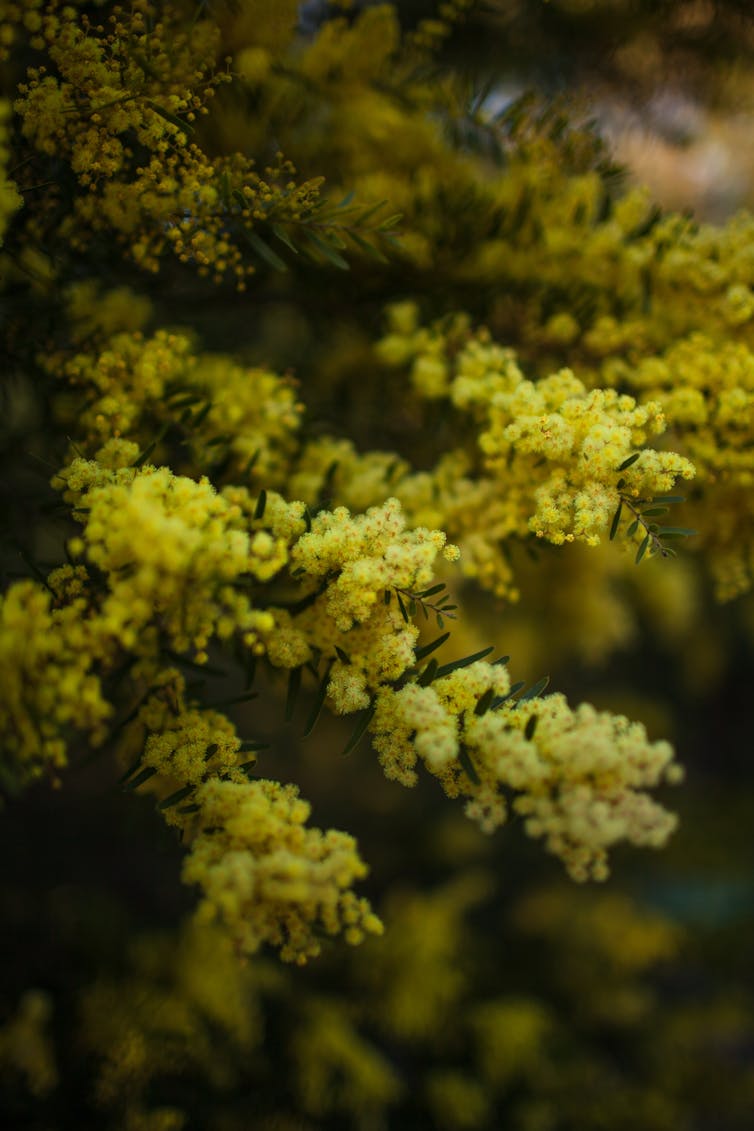
This was the first major reference book on Western Australian flora, and preceded by decades the British seven-volume Flora Australiensis (1863–1878) compiled by botanist George Bentham (1800–1884) – although that work, too, featured several of Preiss’s specimens.
There were further honours for Preiss: he was commemorated in the names of around 100 plants – a matter of considerable status; in 1843 he was elected to membership of the National Academy of Germany; and in the same year his name was added to the registry of the Regensburg Royal Botanical Society.
And his collections began their own journeys. Splitting them for sale dispersed them into private collections and an estimated 35 European herbaria, with the “original” or standard reference set of specimens for Plantae Preissianae passing from Lehmann to his widow, and eventually to its final resting place in the Lund herbarium in Sweden when Germany declined to buy it.
Preiss’s extensive zoological collections of mammals, birds, reptiles, insects and other material did not fare so well.
Some were sold to European museums or dealers but many simply disappeared or can no longer be identified as his. Credit for his “discoveries” of new species was given to other collectors.
His entry in the Australian Dictionary of Biography laments that “had Preiss the backing of an ambitious and enterprising zoologist, as Gilbert had in Gould, it is certain that he would have been much better known today”.
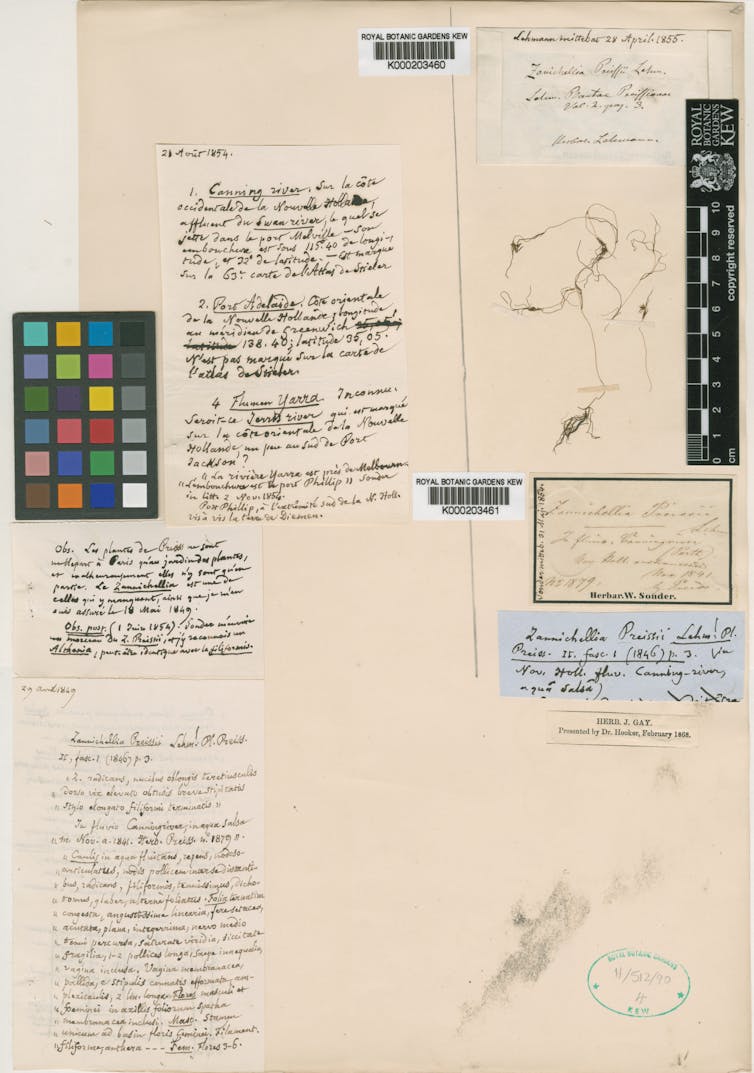
Despite the success of the book and his standing among Europe’s natural historians, in 1843 Preiss suddenly announced that he was leaving Hamburg along with his collections – at the “urgent wishes of my father” – and that all future letters should be sent to him at Herzberg.
He gave no further explanation for this; in the modern parlance, it seems he just “left the building”.
This sudden shift by Preiss from a very public life to a very private one remains an unsolved mystery. Preiss’s legacy, however, is enduring.
His remarkable achievements in the few years between 1838 and 1843 created a permanent link between the botanical sciences in Western Australia and Germany. His sudden withdrawal opened a space for others to lead.
But how will the collections fare under the well-deserved critical scrutiny of their colonial origins and histories in German institutions? Can they be decolonised to take on new tasks relevant for today?
A couple of years ago, sitting with Preiss’s dryandra specimens at the Göttingen herbarium, I was inspired to see them as potential message sticks with agency to bring people together.
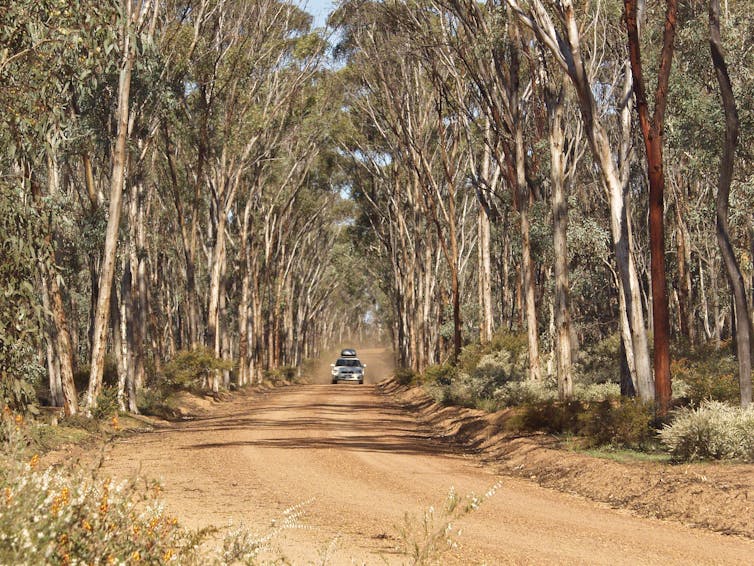
Now I’m part of a new project, Healing Land Healing People, based at Dryandra Woodlands south-east of Perth in the country of our project leader, Nyungar Elder Darryl Kickett.
We are working with the knowledge of Nyungar families, botanists, historians and artists to restore the biodiversity of the land and community cultural strengths. We work with similar projects at other sites in the south-west region.
In Germany we are linked with the Centre for Australian Studies at the University of Cologne and the Rachel Carson Center at the University of Munich. My role is to identify other collections from the region in European museums and herbaria and their curators.
With Nyungar Elders and curators sharing their knowledge and stories we can map the journeys of the message sticks from the sites where they were collected to their present locations.
With our German colleagues we can weave new narratives of biodiversity loss and restoration to engage the public, heal the past and ensure a future for our corner of Western Australia and other global biodiversity hotspots.
This piece is republished with permission from GriffithReview69: The European Exchange, edited by Ashley Hay and Natasha Cica, and published in partnership with the Australian National University griffithreview.com![]()
Anna Haebich, Senior Research Professor, Curtin University
This article is republished from The Conversation under a Creative Commons license. Read the original article.
Guide to the Classics: how Marcus Aurelius' Meditations can help us in a time of pandemic
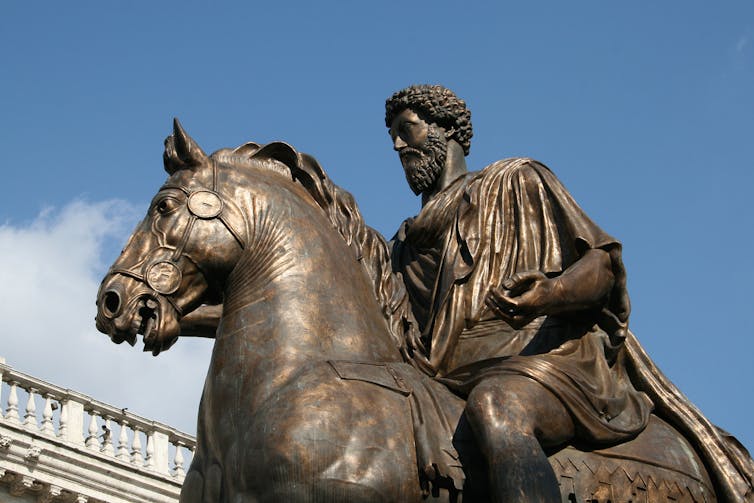
Marcus Aurelius was no stranger to pandemics. For 16 years of his reign as Roman Emperor (161-180 CE), the empire was ravaged by the Antonine plague, which took five million lives.
It was during this period that the philosopher king penned a series of “notes to himself”. Unpublished during his lifetime and found untitled with his mortal remains, this work has come to be called his Meditations.
Described by philosopher and biblical scholar Ernst Renan as “a gospel for those who do not believe in the supernatural,” the Meditations is a series of fragments, aphorisms, arguments, and injunctions. They were written at different moments in the final years of Marcus’ life.
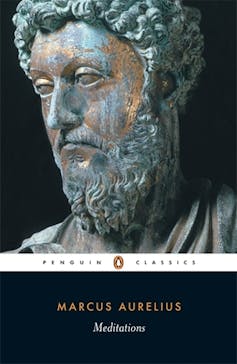
As its opening book makes clear, Marcus had been converted to the philosophy of Stoicism at a young age. Like its great ancient competitor Epicureanism, Stoicism was more than a set of doctrines explaining the world and human nature.
Stoicism also demanded from its students a transformed attitude to life. Many Stoic texts prescribe practical exercises to reshape how a person responds to adversity and prosperity, insults, illness, old age, and mortality.
This practical dimension to Stoic philosophy underlies its extraordinary global rebirth in the new millennium, even before COVID-19. So, what can Marcus Aurelius’ Meditations tell us today, in our time of pandemic?
Read more: Stoicism 5.0: The unlikely 21st century reboot of an ancient philosophy
A Kind Of Lockdown
The Meditations comprises over 400 fragments, divided into 12 books. These disparate fragments are shaped by a few core philosophical principles. At the basis of these principles is the fundamental Stoic distinction expressed most clearly by the emancipated slave turned philosopher, Epictetus, whom Marcus greatly admired: that some things depend upon us and others do not.

In fact, of all the things in the world, we can only directly control what we do, think, choose, desire, and fear.
Everything else, including everything our society tells us that we need to “get a life” – riches, property, fame, promotions – depends on others and on fortune. It is here today and gone tomorrow, and it is usually distributed unfairly.
So to pin our dreams on achieving such things makes our happiness and peace of mind a highly uncertain prospect.
The Stoics propose that what they call “virtue” is the only good. And this virtue consists above all in knowing how best to respond to the things that befall us, rather than fretting about things we cannot control.
For Marcus, all those “goods” that markets trade, and our contemporary advertisements hawk, are “indifferent”. It is what you do with the pleasurable things, and with the difficulties you face, that shapes how happy or unhappy you will be.
It is almost as if Stoicism asks of us a kind of “virtual lockdown”, anticipating the actual one some of us are currently experiencing. The inability to go swimming, or to the football, gym, or movies, is for the Stoic regrettable. But it isn’t devastating. For s/he has weighed such preferable external things at their relative value.
“Wherever it is possible to live, it is possible to live well”, Marcus affirms.
None of us chose the pandemic. But each of us can strive to exercise courage in facing it, generosity in helping others, and resilience before the challenges it presents.
‘Only The Present’
“Things do not touch the soul,” Marcus writes: “our perturbations come only from the opinion which is within”. And our opinions can, with hard work, be reformed. For they depend upon us.
This is the Stoic “good news”. Pandemics, bullies, and mischances really can rob us of our money, our jobs, our reputations. If they are malign enough, they affect our physical health. But they cannot change our minds. They cannot make us commit evil actions. They are powerless to even compel us to think resentful or hateful things about our fellows.
If it becomes clear, for instance, that someone has back-stabbed you, Marcus advises:
Pronounce no more to yourself, beyond what the appearances directly declare. It is said to you that someone has spoken ill of you. This alone is told you, and not that you are hurt by it.
If what your insulter has said is true, then change. If what they have said is false, it does not merit your being upset by it. If they have betrayed your trust, the shame and the fault lies with them.
“The best revenge,” Marcus counsels, “is not to become like the wrongdoer”.
Yes, we might reply, but what about truly enormous situations like COVID-19, or the end of a life-shaping relationship, or the illnesses of loved ones?
The Stoic principle of focusing only on what depends upon us operates here too. Worries carry our minds away into the future. Unless we watch ourselves, we can quickly find ourselves imagining the worst – the death of friends and family, a second great depression, the end of a career …

All of these things may come to pass. Or they may not. But, just now, we cannot immediately avert them. What depends on us right now, always, is what we think and do. And there is, for the Stoic, a comfort in this. As Marcus reminds himself:
Do not disturb yourself by thinking of your whole life. Don’t let your thoughts all at once embrace all the various troubles which may … befall you: but on every occasion ask yourself: What is there in this which is intolerable and past bearing? For you will be ashamed to confess. Next, remember that neither the future nor the past pains you, but only the present.
The parallels between this attitude and other spiritual traditions, notably Buddhism, are clear. For Marcus, the inner life of the wise person will be as serene as an open sky, even under fire.
He is content with two things: to accomplish the present action with justice, and to love the fate which has been allotted to him, here and now.
Does this mean then, that we should just accept the worst, rather than struggling to prevent it?
No: we each have a small range of things we can do and influence at any time. We can increase our understanding, start new initiatives, form or join groups, advocate and persuade others to the best of our powers.
But Marcus asks us also to recognise this: however great and urgent the causes we take up, any positive change will always consist of a lot of small decisions, each taken in the present moment.
And each of these decisions is more likely to be efficacious if we can calmly and clearly assess what is possible, rather than giving way to anxiety, fear, hatred or despair.
A Soul’s Secrets
Unlike much philosophy, the meditations of Marcus are mostly easy to grasp. The philosopher-emperor writes beautifully, with an honesty that can be affecting.
The difficulty lies in really applying these simple, often striking ideas to our lives.
It is (alas) somewhat easier to see why it is right to serenely bear misfortunes and forbear others’ flaws; to remember that “we are made for cooperation, like feet, like hands, like eyelids”; and not to fear death but embrace life in full awareness of one’s mortality, than to do these things in the heat of the moment.
This is why the traditional title, Meditations, is telling.

Readers who go to this classic expecting an ordered, linear philosophical argument will be quickly disillusioned. There are many repetitions and seeming hesitations. Many key Stoic ideas, and Marcus’ own preoccupations (for instance, with how to respond to schemers, and accept his own death) return multiple times. He reformulates his ideas in new ways, striving to find their most compelling expression.
Indeed the Meditations, as scholar Pierre Hadot has argued, need to be seen as an exemplar of a particular Stoic exercise, explicitly prescribed by Epictetus. This involved writing key precepts down as a means to later recall them and to deeply internalise them as philosophical aids to call upon at need.
All this makes the Meditations the singular classic that it is. Or, in Hadot’s moving words:
In world literature one finds lots of preachers, lesson-givers, and censors, who moralise to others with complacency, irony, cynicism, or bitterness; but it is extremely rare to find a person training himself to live and to think like a human being …
We feel “a highly particular emotion”, Hadot continues, as we witness Marcus trying, as we each do, “to live in complete consciousness and lucidity; to give each of our instants its fullest intensity; and to give meaning to our entire life”.
“Marcus is talking to himself”, Hadot observes, “but we get the impression that he is talking to each one of us”.![]()
Matthew Sharpe, Associate Professor in Philosophy, Deakin University
This article is republished from The Conversation under a Creative Commons license. Read the original article.
Ice-O-Pod Innovation
Published July 22, 2020 by the Australian Antarctic Division
During Innovation Month in July we celebrate some of our innovative Antarctic projects - including this small remotely operated vehicle that has revealed colourful and diverse marine communities under the sea ice near Davis research station in Antarctica.
Stay Healthy During The HSC
In any ‘normal’ year the HSC requires dedication and focus as well as the support of friends and family.
This year hasn’t exactly panned out to be a ‘normal’ year, with announcements about changes to the HSC due to COVID-19.
Despite all the goings-on, students across NSW are continuing to study for their HSC with focus and determination, and we at NESA are here to help.
This year we are partnering with mental health organisation ReachOut to deliver news, information, guidance and advice to support all HSC students.
You’ll hear from experts, teachers, parents and other students as well as some inspiring spokespeople. This year we are planning to lighten your mental load with practical tips and tricks for staying active, connected and in charge of your wellbeing.
ReachOut’s Study Hub has heaps of info about taking a proactive approach to your mental health or where to go if you need more support. ReachOut’s Forums are great for sharing what’s going on for you and get ideas about the best ways to feel happy and well.
So follow and use #StayHealthyHSC for regular health and wellbeing updates and information.
View our range of social media images, posters and flyer to help you get involved and share the Stay Healthy HSC message with your community.

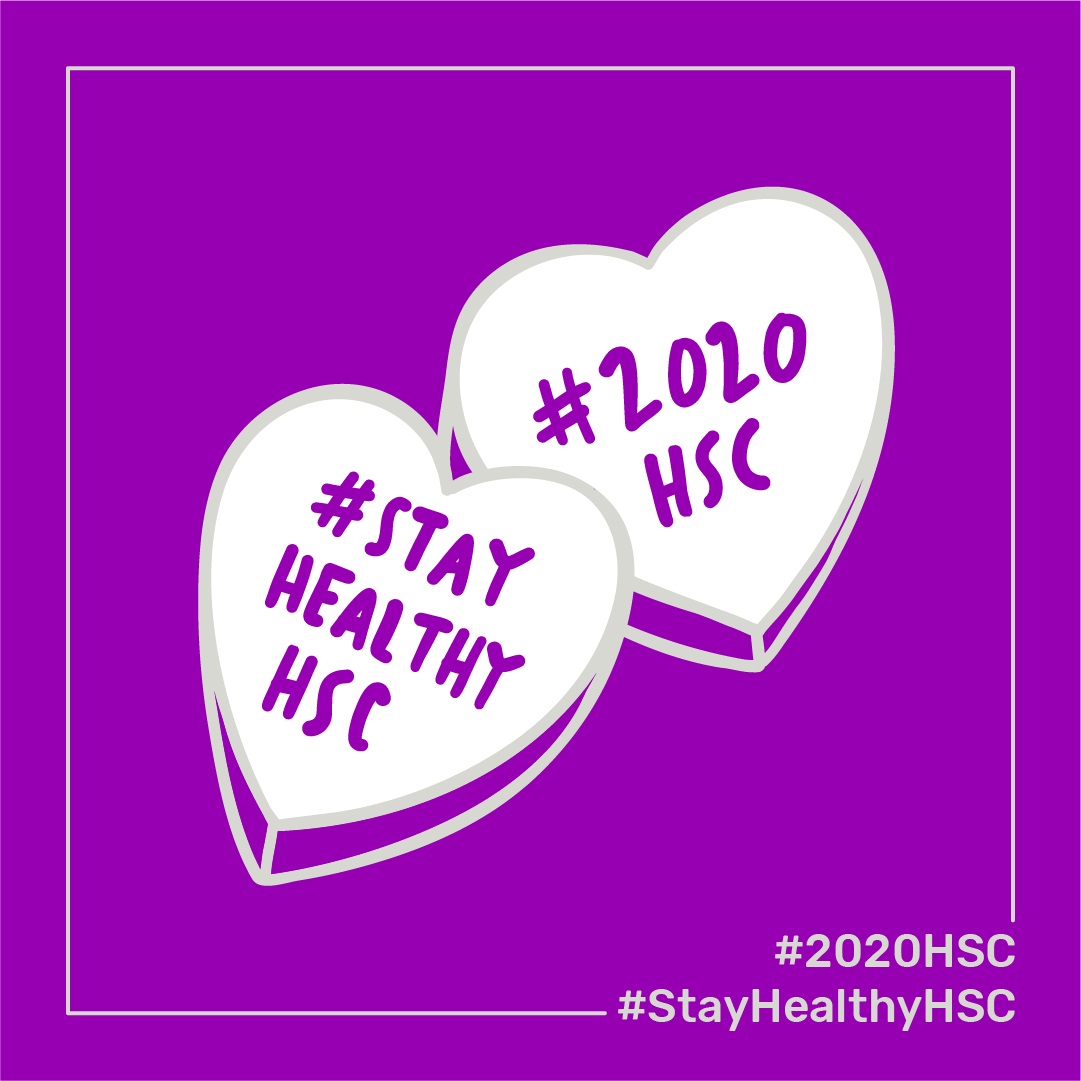
BirdLife Australia 2020 Photo Comp
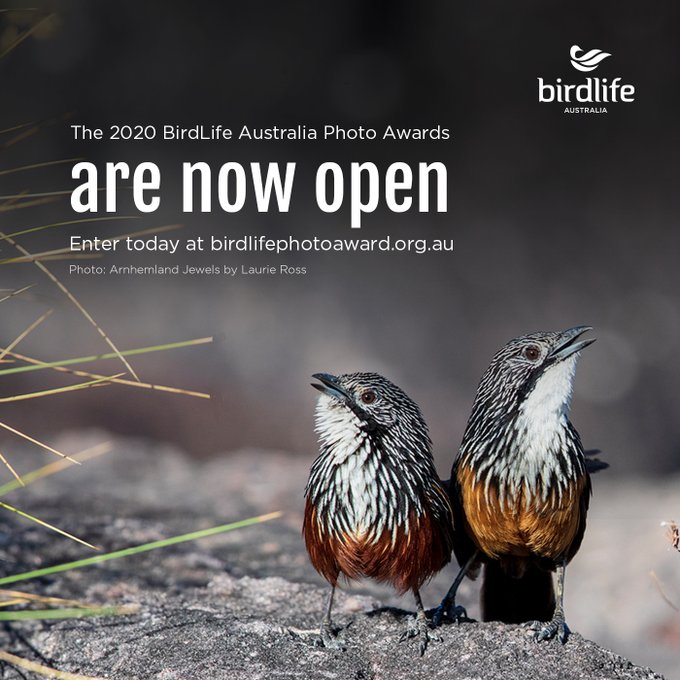
The Hair-Raising Reason For Goosebumps
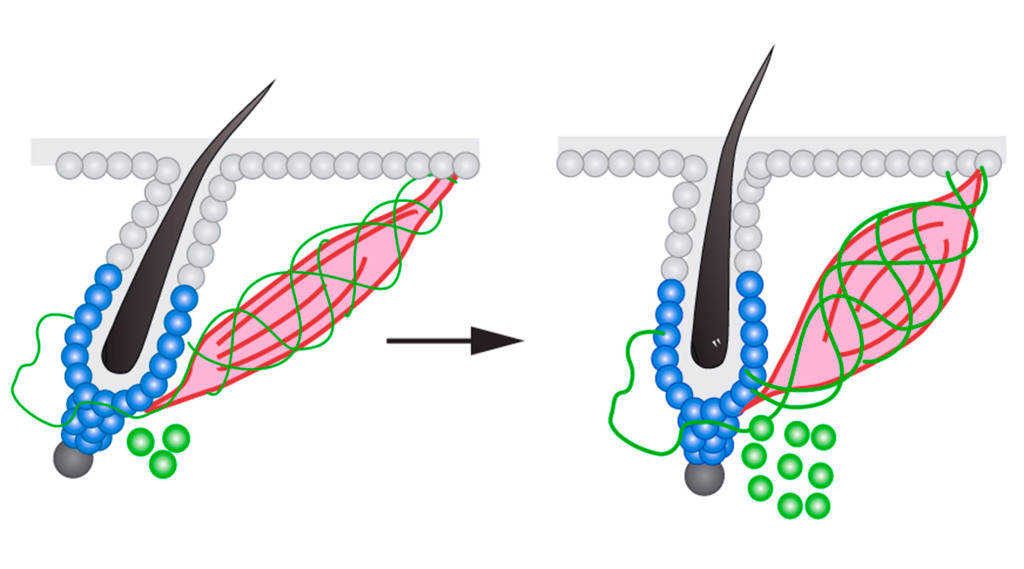
Saving Critically Endangered Chinese Crested Tern
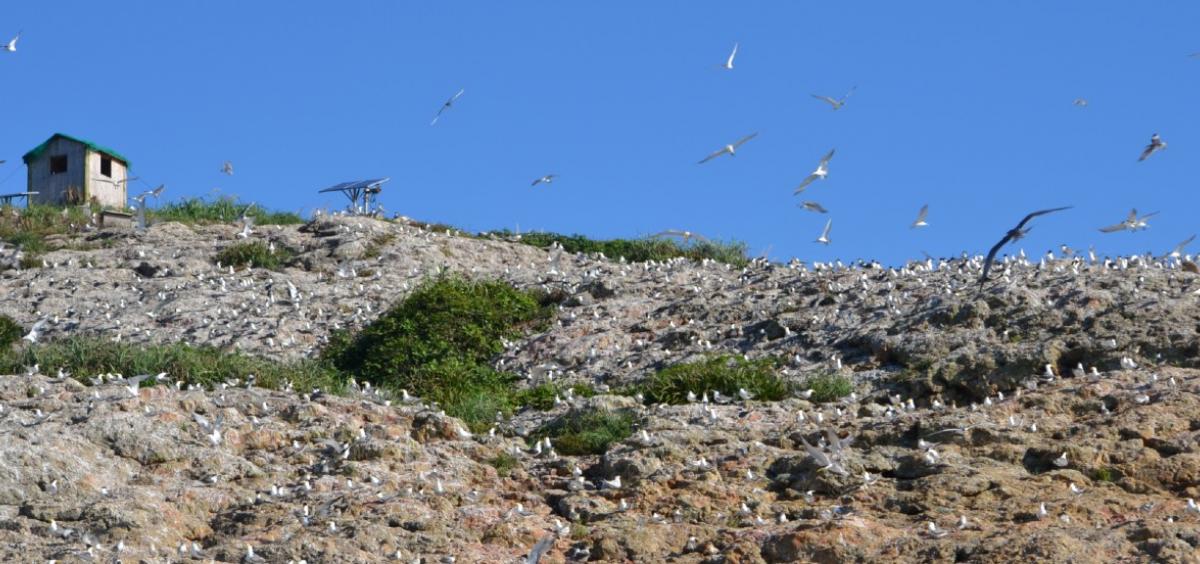
World's Smallest Imaging Device Has Heart Disease In Focus
Early Menstruation Linked To Increased Menopause Symptoms
CSIRO To Serve Up Sustainable Source Of Omega-3 Oils From The Sea
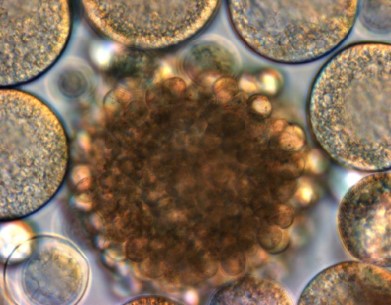
Popular Seafood Species In Sharp Decline Around The World
Disclaimer: These articles are not intended to provide medical advice, diagnosis or treatment. Views expressed here do not necessarily reflect those of Pittwater Online News or its staff.
